State of the Art in Electric Batteries’ State-of-Health (SoH) Estimation with Machine Learning: A Review
Abstract
1. Introduction
2. Systematic Review
- Selection of a portfolio of papers on the research topic: This involves defining research keywords, searching in databases, and filtering articles based on alignment with the research objective, citation metrics, and relevance;
- Bibliometric analysis of the portfolio: This stage examines scientific indicators, such as the number of articles, citation counts, authors, and journals, to assess the portfolio’s comprehensiveness and scientific impact;
- Systemic analysis: The selected articles are deeply analyzed for insights and patterns and the identification of possible research gaps;
- Definition of the research question and objective: The results from the previous stages are synthesized to refine the scope and formulate precise research questions and objectives.
2.1. Bibliographic Portfolio Selection
2.2. Bibliometric Analysis of the Bibliographic Portfolio
2.2.1. Scientific Recognition of the Papers
2.2.2. Author Recognition
2.2.3. Relevance of Journals
2.2.4. Relevance of Keywords
3. Content Analysis
3.1. Portfolio Overview
3.2. Literature Review
3.3. Public Databases
3.4. Techniques and Algorithms
3.4.1. Deep-Learning Models
3.4.2. Hybrid Models
3.4.3. Transfer-Learning Models
3.5. Performance Analysis
3.6. The Importance of SoH in Smart Systems, Energy Informatics, and Smart Grids
4. Conclusions
- Feature-engineering processes with an emphasis on explainability analysis and behavior evaluation across different datasets;
- Implementation of models using the identified open datasets, focusing on assessing the applicability of transfer learning to address datasets with limited volumes;
- Integration of the ProKnow-C methodology with generative AI, aimed at automating the selection process and reducing bias in bibliographic portfolio construction.
Author Contributions
Funding
Data Availability Statement
Conflicts of Interest
Abbreviations
| AD | Author Database |
| AI | Artificial Intelligence |
| ANN | Artificial Neural Network |
| ARIMA | Autoregressive Integrated Moving Average |
| ATBLS | Adaptive Time-shifting Broad-Learning System |
| AUTOML | Auto-Machine Learning |
| BESS | Battery Energy Storage Systems |
| BLS | Broad-Learning System |
| BMA | Bayesian Model Averaging |
| BMLR | Bootstrap Multiple Linear Regression |
| BMS | Battery Management System |
| BNN | Bayesian Neural Network |
| BP | Bibliography Portfolio |
| BPNN | Back Propagation Neural Network |
| CAPSNET | Capsule Neural Network |
| CC-CV | Constant Current–Constant Voltage |
| CDTSGANN | Conditional Time Series Generative Adversarial Network |
| CNN | Convolutional Neural Network |
| CRNN | Convolutional Recurrent Neural Network |
| DBN | Deep Belief Network |
| DBNN | Deep Bayesian Neural Network |
| DCN | Deep Cross Net |
| DCNN | Deep Convolutional Neural Network |
| DELM | Deep Elman Neural Network |
| DGNN | Deep Gaussian Neural Network |
| DL | Deep Learning |
| DNN | Deep Neural Network |
| DRN | Dilated Residual Network |
| DSMTNET | Dual Self-Attention Multivariate Time Series Estimation Network |
| DT | Decision Tree |
| ELM | Extreme-Learning Machine |
| ENN | Elman Neural Network |
| FCNN | Fully Connected Neural Network |
| FFNN | Feedforward Neural Network |
| GAM | Generalized Additive Model |
| GBT | Gradient-Boosting Tree |
| GNN | Graph Neural Network |
| GRU | Gated Recurrent Unit |
| GPR | Gaussian Process Regression |
| IOWA | Induced Ordered Weighted Averaging |
| KNN | K-Nearest Neighbors |
| LCO | Lithium Cobalt Oxide |
| LFP | Lithium Iron Phosphate |
| LR | Linear Regression |
| LSTM | Long Short-Term Memory |
| MAE | Median Absolute Error |
| MAPE | Mean Absolute Percentage Error |
| MLP | Multilayer Perceptron |
| ML | Machine Learning |
| NAR | Nonlinear Autoregressive |
| NARXNN | Nonlinear Autoregressive with Exogenous Input Neural Network |
| NCA | Lithium Nickel Cobalt Aluminum Oxide |
| NMC | Lithium Nickel Manganese Cobalt Oxide |
| PKNN | Prior Knowledge-Based Neural Network |
| QRF | Quantile Regression Forest |
| RBFNN | Radial Basis Function Neural Network |
| RESNET | Residual Network |
| RF | Random Forest |
| RMN | Regressive Matching Network |
| RMSE | Root Mean Squared Error |
| RNN | Recurrent Neural Network |
| RPD | Raw Papers Database |
| RUL | Remaining Useful Life |
| RVM | Relevance Vector Machine |
| SoC | State of Charge |
| SoH | State of Health |
| SVM/SVR | Support Vector Machine/Regressor |
| SSEL | Secondary Structural Ensemble Learning |
| TCN | Temporal Convolution Network |
| TNN | Transformer Neural Network |
| TL | Transfer Learning |
| UNN | Unsupervised Neural Networks |
| VTN | Vision Transformer Network |
| PKNN | Prior Knowledge-Based Neural Network |
| NARXNN | Nonlinear Autoregressive with Exogenous Input Neural Network |
| DGNN | Deep Gaussian Neural Network |
References
- Severson, K.A.; Attia, P.M.; Jin, N.; Perkins, N.; Jiang, B.; Yang, Z.; Chen, M.H.; Aykol, M.; Herring, P.K.; Fraggedakis, D.; et al. Data-Driven Prediction of Battery Cycle Life before Capacity Degradation. Nat. Energy 2019, 4, 383–391. [Google Scholar] [CrossRef]
- Akbar, K.; Zou, Y.; Awais, Q.; Baig, M.J.A.; Jamil, M. A Machine Learning-Based Robust State of Health (SOH) Prediction Model for Electric Vehicle Batteries. Electronics 2022, 11, 1216. [Google Scholar] [CrossRef]
- Hu, X.; Che, Y.; Lin, X.; Deng, Z. Health Prognosis for Electric Vehicle Battery Packs: A Data-Driven Approach. IEEE/ASME Trans. Mechatron. 2020, 25, 2622–2632. [Google Scholar] [CrossRef]
- Lee, C.H.; Wu, C.H. A Novel Big Data Modeling Method for Improving Driving Range Estimation of EVs. IEEE Access 2015, 3, 1980–1993. [Google Scholar] [CrossRef]
- Wang, S.; Jin, S.; Bai, D.; Fan, Y.; Shi, H.; Fernandez, C. A Critical Review of Improved Deep Learning Methods for the Remaining Useful Life Prediction of Lithium-Ion Batteries. Energy Rep. 2021, 7, 5562–5574. [Google Scholar] [CrossRef]
- Pang, X.; Zhong, S.; Wang, Y.; Yang, W.; Zheng, W.; Sun, G. A Review on the Prediction of Health State and Serving Life of Lithium-Ion Batteries. Chem. Rec. 2022, 22, e202200131. [Google Scholar] [CrossRef]
- Li, Y.; Li, K.; Liu, X.; Wang, Y.; Zhang, L. Lithium-Ion Battery Capacity Estimation—A Pruned Convolutional Neural Network Approach Assisted with Transfer Learning. Appl. Energy 2021, 285, 116410. [Google Scholar] [CrossRef]
- Hong, J.; Lee, D.; Jeong, E.-R.; Yi, Y. Towards the Swift Prediction of the Remaining Useful Life of Lithium-Ion Batteries with End-to-End Deep Learning. Appl. Energy 2020, 278, 115646. [Google Scholar] [CrossRef]
- Lai, X.; Huang, Y.; Deng, C.; Gu, H.; Han, X.; Zheng, Y.; Ouyang, M. Sorting, Regrouping, and Echelon Utilization of the Large-Scale Retired Lithium Batteries: A Critical Review. Renew. Sustain. Energy Rev. 2021, 146, 111162. [Google Scholar] [CrossRef]
- Li, Y.; Liu, K.; Foley, A.M.; Zülke, A.; Berecibar, M.; Nanini-Maury, E.; Van Mierlo, J.; Hoster, H.E. Data-Driven Health Estimation and Lifetime Prediction of Lithium-Ion Batteries: A Review. Renew. Sustain. Energy Rev. 2019, 113, 109254. [Google Scholar] [CrossRef]
- Vidal, C.; Malysz, P.; Kollmeyer, P.; Emadi, A. Machine Learning Applied to Electrified Vehicle Battery State of Charge and State of Health Estimation: State-of-the-Art. IEEE Access 2020, 8, 52796–52814. [Google Scholar] [CrossRef]
- Shahjalal, M.; Roy, P.K.; Shams, T.; Fly, A.; Chowdhury, J.I.; Ahmed, M.R.; Liu, K. A Review on Second-Life of Li-Ion Batteries: Prospects, Challenges, and Issues. Energy 2022, 241, 122881. [Google Scholar] [CrossRef]
- Ge, M.-F.; Liu, Y.; Jiang, X.; Liu, J. A Review on State of Health Estimations and Remaining Useful Life Prognostics of Lithium-Ion Batteries. Measurement 2021, 174, 109057. [Google Scholar] [CrossRef]
- Bloom, I.; Jansen, A.N.; Abraham, D.P.; Knuth, J.; Jones, S.A.; Battaglia, V.S.; Henriksen, G.L. Differential Voltage Analyses of High-Power, Lithium-Ion Cells: 1. Technique and Application. J. Power Sources 2005, 139, 295–303. [Google Scholar] [CrossRef]
- Barré, A.; Deguilhem, B.; Grolleau, S.; Gérard, M.; Suard, F.; Riu, D. A Review on Lithium-Ion Battery Ageing Mechanisms and Estimations for Automotive Applications. J. Power Sources 2013, 241, 680–689. [Google Scholar] [CrossRef]
- Aurbach, D.; Markovsky, B.; Levi, M.D.; Levi, E.; Schechter, A.; Moshkovich, M.; Cohen, Y. New Insights into the Interactions between Electrode Materials and Electrolyte Solutions for Advanced Nonaqueous Batteries. J. Power Sources 1999, 81–82, 95–111. [Google Scholar] [CrossRef]
- Zhang, L.; Dai, Y.; Li, C.; Dang, Y.; Zheng, R.; Wang, Z.; Wang, Y.; Cui, Y.; Arandiyan, H.; Shao, Z.; et al. Recent Advances in Electrochemical Impedance Spectroscopy for Solid-State Batteries. Energy Storage Mater. 2024, 69, 103378. [Google Scholar] [CrossRef]
- Plett, G.L. Extended Kalman Filtering for Battery Management Systems of LiPB-Based HEV Battery Packs. J. Power Sources 2004, 134, 262–276. [Google Scholar] [CrossRef]
- Hu, X.; Li, S.; Peng, H. A Comparative Study of Equivalent Circuit Models for Li-Ion Batteries. J. Power Sources 2012, 198, 359–367. [Google Scholar] [CrossRef]
- Daigle, M.; Kulkarni, C. Electrochemistry-Based Battery Modeling for Prognostics. In Proceedings of the Annual Conference of the PHM Society 2013, New Orleans, LA, USA, 14–17 October 2013. [Google Scholar]
- Singh, S.; Ebongue, Y.E.; Rezaei, S.; Birke, K.P. Hybrid Modeling of Lithium-Ion Battery: Physics-Informed Neural Network for Battery State Estimation. Batteries 2023, 9, 301. [Google Scholar] [CrossRef]
- Su, S.; Li, W.; Mou, J.; Garg, A.; Gao, L.; Liu, J. A Hybrid Battery Equivalent Circuit Model, Deep Learning, and Transfer Learning for Battery State Monitoring. IEEE Trans. Transp. Electrif. 2023, 9, 1113–1127. [Google Scholar] [CrossRef]
- Xing, Y.; Ma, E.W.M.; Tsui, K.-L.; Pecht, M. An Ensemble Model for Predicting the Remaining Useful Performance of Lithium-Ion Batteries. Microelectron. Reliab. 2013, 53, 811–820. [Google Scholar] [CrossRef]
- Hossain Lipu, M.S.; Ansari, S.; Miah, M.S.; Meraj, S.T.; Hasan, K.; Shihavuddin, A.S.M.; Hannan, M.A.; Muttaqi, K.M.; Hussain, A. Deep Learning Enabled State of Charge, State of Health and Remaining Useful Life Estimation for Smart Battery Management System: Methods, Implementations, Issues and Prospects. J. Energy Storage 2022, 55, 105752. [Google Scholar] [CrossRef]
- Zhao, J.; Han, X.; Ouyang, M.; Burke, A.F. Specialized Deep Neural Networks for Battery Health Prognostics: Opportunities and Challenges. J. Energy Chem. 2023, 87, 416–438. [Google Scholar] [CrossRef]
- Luo, K.; Chen, X.; Zheng, H.; Shi, Z. A Review of Deep Learning Approach to Predicting the State of Health and State of Charge of Lithium-Ion Batteries. J. Energy Chem. 2022, 74, 159–173. [Google Scholar] [CrossRef]
- Liu, K.; Peng, Q.; Che, Y.; Zheng, Y.; Li, K.; Teodorescu, R.; Widanage, D.; Barai, A. Transfer Learning for Battery Smarter State Estimation and Ageing Prognostics: Recent Progress, Challenges, and Prospects. Adv. Appl. Energy 2023, 9, 100117. [Google Scholar] [CrossRef]
- Li, C.; Zhang, H.; Ding, P.; Yang, S.; Bai, Y. Deep Feature Extraction in Lifetime Prognostics of Lithium-Ion Batteries: Advances, Challenges and Perspectives. Renew. Sustain. Energy Rev. 2023, 184, 113576. [Google Scholar] [CrossRef]
- Samanta, A.; Williamson, S. Machine Learning-Based Remaining Useful Life Prediction Techniques for Lithium-Ion Battery Management Systems: A Comprehensive Review. IEEJ J. Ind. Appl. 2023, 12, 22004793. [Google Scholar] [CrossRef]
- Wang, S.; Ren, P.; Takyi-Aninakwa, P.; Jin, S.; Fernandez, C. A Critical Review of Improved Deep Convolutional Neural Network for Multi-Timescale State Prediction of Lithium-Ion Batteries. Energies 2022, 15, 5053. [Google Scholar] [CrossRef]
- Manoharan, A.; Begam, K.M.; Aparow, V.R.; Sooriamoorthy, D. Artificial Neural Networks, Gradient Boosting and Support Vector Machines for Electric Vehicle Battery State Estimation: A Review. J. Energy Storage 2022, 55, 105384. [Google Scholar] [CrossRef]
- Ensslin, L.; Ensslin, S.R.; Lacerda, R.T.d.O.; Tasca, J.E. ProKnow-C, Knowledge Development Process–Constructivist: Processo Técnico Com Patente de Registro Pendente Junto ao INPI; INPI: Rio de Janeiro, Brazil, 2010. [Google Scholar]
- Ensslin, S.R.; Ensslin, L.; Yamakawa, E.K.; Nagaoka, M.P.T.; Aoki, A.R.; Siebert, L.C. Processo Estruturado de Revisão Da Literatura e Análise Bibliométrica Sobre Avaliação de Desempenho de Processos de Implementação de Eficiência Energética. Rev. Bras. Energ. 2014, 20, 21–50. [Google Scholar]
- Regatieri, H.R.; Ando Junior, O.H.; Salgado, J.R. Systematic Review of Lithium-Ion Battery Recycling Literature Using ProKnow-C and Methodi Ordinatio. Energies 2022, 15, 1485. [Google Scholar] [CrossRef]
- Maciel, J.N.; Javier Giménez Ledesma, J.; Hideo Ando Junior, O. Forecasting Solar Power Output Generation: A Systematic Review with the Proknow-C. IEEE Lat. Am. Trans. 2021, 19, 612–624. [Google Scholar] [CrossRef]
- Ensslin, L.; Ensslin, S.R.; Pinto, H. de M. Processo de Investigação e Análise Bibliométrica: Avaliação Da Qualidade Dos Serviços Bancários. Rev. Adm. Contemp. 2013, 17, 325–349. [Google Scholar] [CrossRef]
- Page, M.J.; McKenzie, J.E.; Bossuyt, P.M.; Boutron, I.; Hoffmann, T.C.; Mulrow, C.D.; Shamseer, L.; Tetzlaff, J.M.; Akl, E.A.; Brennan, S.E.; et al. The PRISMA 2020 Statement: An Updated Guideline for Reporting Systematic Reviews. PLoS Med. 2021, 18, e1003583. [Google Scholar] [CrossRef]
- Osorio, M.A.A.; Concepcion, R.; Dadios, E. Multi-Source Energy Harvesting Systems: A PRISMA Approach on Energy Sources and Optimization Strategies. In Proceedings of the 2023 IEEE 15th International Conference on Humanoid, Nanotechnology, Information Technology, Communication and Control, Environment, and Management (HNICEM), Coron, Philippines, 19–23 November 2023; pp. 1–6. [Google Scholar]
- Arévalo, P.; Ochoa-Correa, D.; Villa-Ávila, E. Systematic Review of the Effective Integration of Storage Systems and Electric Vehicles in Microgrid Networks: Innovative Approaches for Energy Management. Vehicles 2024, 6, 2075–2105. [Google Scholar] [CrossRef]
- Prior, J.; Drees, T.; Miro, M.; Kuhlenkötter, B. Systematic Literature Review of Heuristic-Optimized Microgrids and Energy-Flexible Factories. Clean Technol. 2024, 6, 1114–1141. [Google Scholar] [CrossRef]
- Grant, M.J.; Booth, A. A Typology of Reviews: An Analysis of 14 Review Types and Associated Methodologies. Health Inf. Libr. J. 2009, 26, 91–108. [Google Scholar] [CrossRef]
- Munn, Z.; Peters, M.D.J.; Stern, C.; Tufanaru, C.; McArthur, A.; Aromataris, E. Systematic Review or Scoping Review? Guidance for Authors When Choosing between a Systematic or Scoping Review Approach. BMC Med. Res. Methodol. 2018, 18, 143. [Google Scholar] [CrossRef] [PubMed]
- Arksey, H.; O’Malley, L. Scoping Studies: Towards a Methodological Framework. Int. J. Soc. Res. Methodol. 2005, 8, 19–32. [Google Scholar] [CrossRef]
- Zhang, Y.; Xiong, R.; He, H.; Pecht, M.G. Long Short-Term Memory Recurrent Neural Network for Remaining Useful Life Prediction of Lithium-Ion Batteries. IEEE Trans. Veh. Technol. 2018, 67, 5695–5705. [Google Scholar] [CrossRef]
- Liu, K.; Shang, Y.; Ouyang, Q.; Widanage, W.D. A Data-Driven Approach with Uncertainty Quantification for Predicting Future Capacities and Remaining Useful Life of Lithium-Ion Battery. IEEE Trans. Ind. Electron. 2021, 68, 3170–3180. [Google Scholar] [CrossRef]
- Ng, M.-F.; Zhao, J.; Yan, Q.; Conduit, G.J.; Seh, Z.W. Predicting the State of Charge and Health of Batteries Using Data-Driven Machine Learning. Nat. Mach. Intell. 2020, 2, 161–170. [Google Scholar] [CrossRef]
- Li, Y.; Zou, C.; Berecibar, M.; Nanini-Maury, E.; Chan, J.C.-W.; van den Bossche, P.; Van Mierlo, J.; Omar, N. Random Forest Regression for Online Capacity Estimation of Lithium-Ion Batteries. Appl. Energy 2018, 232, 197–210. [Google Scholar] [CrossRef]
- Li, X.; Zhang, L.; Wang, Z.; Dong, P. Remaining Useful Life Prediction for Lithium-Ion Batteries Based on a Hybrid Model Combining the Long Short-Term Memory and Elman Neural Networks. J. Energy Storage 2019, 21, 510–518. [Google Scholar] [CrossRef]
- Ren, L.; Zhao, L.; Hong, S.; Zhao, S.; Wang, H.; Zhang, L. Remaining Useful Life Prediction for Lithium-Ion Battery: A Deep Learning Approach. IEEE Access 2018, 6, 50587–50598. [Google Scholar] [CrossRef]
- Ren, L.; Dong, J.; Wang, X.; Meng, Z.; Zhao, L.; Deen, M.J. A Data-Driven Auto-CNN-LSTM Prediction Model for Lithium-Ion Battery Remaining Useful Life. IEEE Trans. Ind. Inform. 2021, 17, 3478–3487. [Google Scholar] [CrossRef]
- Li, P.; Zhang, Z.; Xiong, Q.; Ding, B.; Hou, J.; Luo, D.; Rong, Y.; Li, S. State-of-Health Estimation and Remaining Useful Life Prediction for the Lithium-Ion Battery Based on a Variant Long Short Term Memory Neural Network. J. Power Sources 2020, 459, 228069. [Google Scholar] [CrossRef]
- Liu, K.; Hu, X.; Wei, Z.; Li, Y.; Jiang, Y. Modified Gaussian Process Regression Models for Cyclic Capacity Prediction of Lithium-Ion Batteries. IEEE Trans. Transp. Electrif. 2019, 5, 1225–1236. [Google Scholar] [CrossRef]
- Shen, S.; Sadoughi, M.; Chen, X.; Hong, M.; Hu, C. A Deep Learning Method for Online Capacity Estimation of Lithium-Ion Batteries. J. Energy Storage 2019, 25, 100817. [Google Scholar] [CrossRef]
- Roman, D.; Saxena, S.; Robu, V.; Pecht, M.; Flynn, D. Machine Learning Pipeline for Battery State-of-Health Estimation. Nat. Mach. Intell. 2021, 3, 447–456. [Google Scholar] [CrossRef]
- Qu, J.; Liu, F.; Ma, Y.; Fan, J. A Neural-Network-Based Method for RUL Prediction and SOH Monitoring of Lithium-Ion Battery. IEEE Access 2019, 7, 87178–87191. [Google Scholar] [CrossRef]
- Dai, H.; Zhao, G.; Lin, M.; Wu, J.; Zheng, G. A Novel Estimation Method for the State of Health of Lithium-Ion Battery Using Prior Knowledge-Based Neural Network and Markov Chain. IEEE Trans. Ind. Electron. 2019, 66, 7706–7716. [Google Scholar] [CrossRef]
- Khumprom, P.; Yodo, N. A Data-Driven Predictive Prognostic Model for Lithium-Ion Batteries Based on a Deep Learning Algorithm. Energies 2019, 12, 660. [Google Scholar] [CrossRef]
- Pan, H.; Lü, Z.; Wang, H.; Wei, H.; Chen, L. Novel Battery State-of-Health Online Estimation Method Using Multiple Health Indicators and an Extreme Learning Machine. Energy 2018, 160, 466–477. [Google Scholar] [CrossRef]
- Li, W.; Sengupta, N.; Dechent, P.; Howey, D.; Annaswamy, A.; Sauer, D.U. Online Capacity Estimation of Lithium-Ion Batteries with Deep Long Short-Term Memory Networks. J. Power Sources 2021, 482, 228863. [Google Scholar] [CrossRef]
- Yu, J. State of Health Prediction of Lithium-Ion Batteries: Multiscale Logic Regression and Gaussian Process Regression Ensemble. Reliab. Eng. Syst. Saf. 2018, 174, 82–95. [Google Scholar] [CrossRef]
- Fan, Y.; Xiao, F.; Li, C.; Yang, G.; Tang, X. A Novel Deep Learning Framework for State of Health Estimation of Lithium-Ion Battery. J. Energy Storage 2020, 32, 101741. [Google Scholar] [CrossRef]
- Zhang, S.; Zhai, B.; Guo, X.; Wang, K.; Peng, N.; Zhang, X. Synchronous Estimation of State of Health and Remaining Useful Lifetime for Lithium-Ion Battery Using the Incremental Capacity and Artificial Neural Networks. J. Energy Storage 2019, 26, 100951. [Google Scholar] [CrossRef]
- Cao, J.; Harrold, D.; Fan, Z.; Morstyn, T.; Healey, D.; Li, K. Deep Reinforcement Learning-Based Energy Storage Arbitrage with Accurate Lithium-Ion Battery Degradation Model. IEEE Trans. Smart Grid 2020, 11, 4513–4521. [Google Scholar] [CrossRef]
- Gou, B.; Xu, Y.; Feng, X. State-of-Health Estimation and Remaining-Useful-Life Prediction for Lithium-Ion Battery Using a Hybrid Data-Driven Method. IEEE Trans. Veh. Technol. 2020, 69, 10854–10867. [Google Scholar] [CrossRef]
- Tan, Y.; Tan, Y.; Zhao, G.; Zhao, G. Transfer Learning with Long Short-Term Memory Network for State-of-Health Prediction of Lithium-Ion Batteries. IEEE Trans. Ind. Electron. 2020, 67, 8723–8731. [Google Scholar] [CrossRef]
- Hu, X.; Che, Y.; Lin, X.; Onori, S. Battery Health Prediction Using Fusion-Based Feature Selection and Machine Learning. IEEE Trans. Transp. Electrif. 2021, 7, 382–398. [Google Scholar] [CrossRef]
- Sui, X.; He, S.; Vilsen, S.B.; Meng, J.; Teodorescu, R.; Stroe, D.-I. A Review of Non-Probabilistic Machine Learning-Based State of Health Estimation Techniques for Lithium-Ion Battery. Appl. Energy 2021, 300, 117346. [Google Scholar] [CrossRef]
- Tagade, P.; Hariharan, K.S.; Ramachandran, S.; Khandelwal, A.; Naha, A.; Kolake, S.M.; Han, S.H. Deep Gaussian Process Regression for Lithium-Ion Battery Health Prognosis and Degradation Mode Diagnosis. J. Power Sources 2020, 445, 227281. [Google Scholar] [CrossRef]
- Tang, X.; Liu, K.; Wang, X.; Gao, F.; Macro, J.; Widanage, W.D. Model Migration Neural Network for Predicting Battery Aging Trajectories. IEEE Trans. Transp. Electrif. 2020, 6, 363–374. [Google Scholar] [CrossRef]
- Fermín-Cueto, P.; McTurk, E.; Allerhand, M.; Medina-Lopez, E.; Anjos, M.F.; Sylvester, J.; dos Reis, G. Identification and Machine Learning Prediction of Knee-Point and Knee-Onset in Capacity Degradation Curves of Lithium-Ion Cells. Energy AI 2020, 1, 100006. [Google Scholar] [CrossRef]
- Zhang, W.; Li, X.; Li, X. Deep Learning-Based Prognostic Approach for Lithium-Ion Batteries with Adaptive Time-Series Prediction and on-Line Validation. Meas. J. Int. Meas. Confed. 2020, 164, 108052. [Google Scholar] [CrossRef]
- Che, Y.; Deng, Z.; Lin, X.; Hu, L.; Hu, X. Predictive Battery Health Management with Transfer Learning and Online Model Correction. IEEE Trans. Veh. Technol. 2021, 70, 1269–1277. [Google Scholar] [CrossRef]
- Li, W.; Sengupta, N.; Dechent, P.; Howey, D.; Annaswamy, A.; Sauer, D.U. One-Shot Battery Degradation Trajectory Prediction with Deep Learning. J. Power Sources 2021, 506, 230024. [Google Scholar] [CrossRef]
- Khaleghi, S.; Karimi, D.; Beheshti, S.H.; Hosen, M.S.; Behi, H.; Berecibar, M.; Van Mierlo, J. Online Health Diagnosis of Lithium-Ion Batteries Based on Nonlinear Autoregressive Neural Network. Appl. Energy 2021, 282, 116159. [Google Scholar] [CrossRef]
- Sultan, Y.A.; Eladl, A.A.; Hassan, M.A.; Gamel, S.A. Enhancing Electric Vehicle Battery Lifespan: Integrating Active Balancing and Machine Learning for Precise RUL Estimation. Sci. Rep. 2025, 15, 777. [Google Scholar] [CrossRef] [PubMed]
- Olsson, L.; Fallahi, S.; Schnurr, M.; Diener, D.; Van Loon, P. Circular Business Models for Extended EV Battery Life. Batteries 2018, 4, 57. [Google Scholar] [CrossRef]
- Reinhardt, R.; Christodoulou, I.; Gassó-Domingo, S.; Amante García, B. Towards Sustainable Business Models for Electric Vehicle Battery Second Use: A Critical Review. J. Environ. Manag. 2019, 245, 432–446. [Google Scholar] [CrossRef] [PubMed]
- Sheikh, S.S.; Shah, F.A.; Athar, S.O.; Khalid, H.A. A Data-Driven Comparative Analysis of Lithium-Ion Battery State of Health and Capacity Estimation. Electr. Power Components Syst. 2023, 51, 1–11. [Google Scholar] [CrossRef]
- Bracale, A.; De Falco, P.; Di Noia, L.P.; Rizzo, R. Probabilistic State of Health and Remaining Useful Life Prediction for Li-Ion Batteries. In Proceedings of the 2021 IEEE Texas Power and Energy Conference (TPEC), College Station, TX, USA, 2–5 February 2021; IEEE: Piscataway, NJ, USA, 2021; pp. 1–6. [Google Scholar]
- Li, F.; Zhang, L.; Chen, B.; Gao, D.; Cheng, Y.; Zhang, X.; Yang, Y.; Gao, K.; Huang, Z. An Optimal Stacking Ensemble for Remaining Useful Life Estimation of Systems Under Multi-Operating Conditions. IEEE Access 2020, 8, 31854–31868. [Google Scholar] [CrossRef]
- Liu, G.; Zhang, X.; Liu, Z. State of Health Estimation of Power Batteries Based on Multi-Feature Fusion Models Using Stacking Algorithm. Energy 2022, 259, 124851. [Google Scholar] [CrossRef]
- Paulson, N.H.; Kubal, J.; Ward, L.; Saxena, S.; Lu, W.; Babinec, S.J. Feature Engineering for Machine Learning Enabled Early Prediction of Battery Lifetime. J. Power Sources 2022, 527, 231127. [Google Scholar] [CrossRef]
- Yang, F.; Wang, D.; Xu, F.; Huang, Z.; Tsui, K.-L. Lifespan Prediction of Lithium-Ion Batteries Based on Various Extracted Features and Gradient Boosting Regression Tree Model. J. Power Sources 2020, 476, 228654. [Google Scholar] [CrossRef]
- Greenbank, S.; Howey, D.A. Piecewise-Linear Modelling with Automated Feature Selection for Li-Ion Battery End-of-Life Prognosis. Mech. Syst. Signal Process. 2023, 184, 109612. [Google Scholar] [CrossRef]
- Wu, J.; Su, H.; Meng, J.; Lin, M. State of Health Estimation for Lithium-Ion Battery via Recursive Feature Elimination on Partial Charging Curves. IEEE J. Emerg. Sel. Top. Power Electron. 2023, 11, 131–142. [Google Scholar] [CrossRef]
- Greenbank, S.; Howey, D. Automated Feature Extraction and Selection for Data-Driven Models of Rapid Battery Capacity Fade and End of Life. IEEE Trans. Ind. Inform. 2022, 18, 2965–2973. [Google Scholar] [CrossRef]
- Peng, J.; Zheng, Z.; Zhang, X.; Deng, K.; Gao, K.; Li, H.; Chen, B.; Yang, Y.; Huang, Z. A Data-Driven Method with Feature Enhancement and Adaptive Optimization for Lithium-Ion Battery Remaining Useful Life Prediction. Energies 2020, 13, 752. [Google Scholar] [CrossRef]
- Ren, Z.; Du, C.; Ren, W. State of Health Estimation of Lithium-Ion Batteries Using a Multi-Feature-Extraction Strategy and PSO-NARXNN. Batteries 2022, 9, 7. [Google Scholar] [CrossRef]
- Fei, Z.; Zhang, Z.; Yang, F.; Tsui, K.-L.; Li, L. Early-Stage Lifetime Prediction for Lithium-Ion Batteries: A Deep Learning Framework Jointly Considering Machine-Learned and Handcrafted Data Features. J. Energy Storage 2022, 52, 104936. [Google Scholar] [CrossRef]
- Tang, T.; Yuan, H. The Capacity Prediction of Li-Ion Batteries Based on a New Feature Extraction Technique and an Improved Extreme Learning Machine Algorithm. J. Power Sources 2021, 514, 230572. [Google Scholar] [CrossRef]
- Wang, Z.; Liu, N.; Guo, Y. Adaptive Sliding Window LSTM NN Based RUL Prediction for Lithium-Ion Batteries Integrating LTSA Feature Reconstruction. Neurocomputing 2021, 466, 178–189. [Google Scholar] [CrossRef]
- Wang, Z.; Yang, F.; Xu, Q.; Wang, Y.; Yan, H.; Xie, M. Capacity Estimation of Lithium-Ion Batteries Based on Data Aggregation and Feature Fusion via Graph Neural Network. Appl. Energy 2023, 336, 120808. [Google Scholar] [CrossRef]
- Cui, Z.; Gao, X.; Mao, J.; Wang, C. Remaining Capacity Prediction of Lithium-Ion Battery Based on the Feature Transformation Process Neural Network. Expert Syst. Appl. 2022, 190, 116075. [Google Scholar] [CrossRef]
- Yao, X.-Y.; Chen, G.; Hu, L.; Pecht, M. A Multi-Model Feature Fusion Model for Lithium-Ion Battery State of Health Prediction. J. Energy Storage 2022, 56, 106051. [Google Scholar] [CrossRef]
- Fu, P.; Chu, L.; Hou, Z.; Guo, Z.; Lin, Y.; Hu, J. State-of-Health Prediction Using Transfer Learning and a Multi-Feature Fusion Model. Sensors 2022, 22, 8530. [Google Scholar] [CrossRef]
- Himadri Sekhar, B.; Sindhu, S.; Amalendu Bikash, C.; Chandan Kumar, C. State-of-Health Estimation and End of Life Prediction for the Lithium-Ion Battery by Correlatable Feature-Based Machine Learning Approach. Int. J. Perform. Eng. 2021, 17, 825. [Google Scholar] [CrossRef]
- Luo, C.; Zhang, Z.; Qiao, D.; Lai, X.; Li, Y.; Wang, S. Life Prediction under Charging Process of Lithium-Ion Batteries Based on AutoML. Energies 2022, 15, 4594. [Google Scholar] [CrossRef]
- Lee, G.; Kim, J.; Lee, C. State-of-Health Estimation of Li-Ion Batteries in the Early Phases of Qualification Tests: An Interpretable Machine Learning Approach. Expert Syst. Appl. 2022, 197, 116817. [Google Scholar] [CrossRef]
- Li, G.; Li, B.; Li, C.; Wang, S. State-of-Health Rapid Estimation for Lithium-Ion Battery Based on an Interpretable Stacking Ensemble Model with Short-Term Voltage Profiles. Energy 2023, 263, 126064. [Google Scholar] [CrossRef]
- Lundberg, S.M.; Lee, S.-I. A Unified Approach to Interpreting Model Predictions. In Proceedings of the 31st International Conference on Neural Information Processing Systems, Long Beach, CA, USA, 4–9 December 2017; Guyon, I., Von Luxburg, U., Bengio, S., Wallach, H., Fergus, R., Vishwanathan, S., Garnett, R., Eds.; Curran Associates, Inc.: Brooklyn, NY, USA, 2017; Volume 30. [Google Scholar]
- Lundberg, S.M.; Erion, G.; Chen, H.; DeGrave, A.; Prutkin, J.M.; Nair, B.; Katz, R.; Himmelfarb, J.; Bansal, N.; Lee, S.-I. From Local Explanations to Global Understanding with Explainable AI for Trees. Nat. Mach. Intell. 2020, 2, 56–67. [Google Scholar] [CrossRef]
- Attia, P.M.; Severson, K.A.; Witmer, J.D. Statistical Learning for Accurate and Interpretable Battery Lifetime Prediction. J. Electrochem. Soc. 2021, 168, 090547. [Google Scholar] [CrossRef]
- Lee, G.; Kwon, D.; Lee, C. A Convolutional Neural Network Model for SOH Estimation of Li-Ion Batteries with Physical Interpretability. Mech. Syst. Signal Process. 2023, 188, 110004. [Google Scholar] [CrossRef]
- Zhang, H.; Su, Y.; Altaf, F.; Wik, T.; Gros, S. Interpretable Battery Cycle Life Range Prediction Using Early Cell Degradation Data. IEEE Trans. Transp. Electrif. 2023, 9, 2669–2682. [Google Scholar] [CrossRef]
- Pang, X.; Yang, W.; Wang, C.; Fan, H.; Wang, L.; Li, J.; Zhong, S.; Zheng, W.; Zou, H.; Chen, S.; et al. A Novel Hybrid Model for Lithium-Ion Batteries Lifespan Prediction with High Accuracy and Interpretability. J. Energy Storage 2023, 61, 106728. [Google Scholar] [CrossRef]
- Kong, D.; Wang, S.; Ping, P. State-of-Health Estimation and Remaining Useful Life for Lithium-Ion Battery Based on Deep Learning with Bayesian Hyperparameter Optimization. Int. J. Energy Res. 2022, 46, 6081–6098. [Google Scholar] [CrossRef]
- Reddy, M.C.; Viswanath, M.N.; Varma, P.S. Remaining Useful Life Prediction of Lithium Ion Battery Using Tree Based Pipe-Line Optimization Tool. J. Adv. Res. Dyn. Control Syst. 2020, 12, 1955–1960. [Google Scholar] [CrossRef]
- Shu, X.; Li, G.; Shen, J.; Lei, Z.; Chen, Z.; Liu, Y. A Uniform Estimation Framework for State of Health of Lithium-Ion Batteries Considering Feature Extraction and Parameters Optimization. Energy 2020, 204, 117957. [Google Scholar] [CrossRef]
- Couture, J.; Lin, X. Novel Image-Based Rapid RUL Prediction for Li-Ion Batteries Using a Capsule Network and Transfer Learning. IEEE Trans. Transp. Electrif. 2023, 9, 958–967. [Google Scholar] [CrossRef]
- Couture, J.; Lin, X. Image- and Health Indicator-Based Transfer Learning Hybridization for Battery RUL Prediction. Eng. Appl. Artif. Intell. 2022, 114, 105120. [Google Scholar] [CrossRef]
- He, N.; Wang, Q.; Lu, Z.; Chai, Y.; Yang, F. Early Prediction of Battery Lifetime Based on Graphical Features and Convolutional Neural Networks. Appl. Energy 2024, 353, 122048. [Google Scholar] [CrossRef]
- Zhao, X.; He, H.; Li, J.; Wei, Z.; Huang, R.; Shi, M. From Grayscale Image to Battery Aging Awareness—A New Battery Capacity Estimation Model with Computer Vision Approach. IEEE Trans. Ind. Inform. 2023, 19, 8965–8975. [Google Scholar] [CrossRef]
- Li, Y.; Li, K.; Liu, X.; Zhang, L. Fast Battery Capacity Estimation Using Convolutional Neural Networks. Trans. Inst. Meas. Control 2020, 0142331220966425. [Google Scholar] [CrossRef]
- Teng, J.-H.; Chen, R.-J.; Lee, P.-T.; Hsu, C.-W. Accurate and Efficient SOH Estimation for Retired Batteries. Energies 2023, 16, 1240. [Google Scholar] [CrossRef]
- Huang, C.; Li, N. Fast Health State Estimation of Lead–Acid Batteries Based on Multi-Time Constant Current Charging Curve. Electronics 2023, 12, 4552. [Google Scholar] [CrossRef]
- Lu, S.; Yin, Z.; Liao, S.; Yang, B.; Liu, S.; Liu, M.; Yin, L.; Zheng, W. An Asymmetric Encoder–Decoder Model for Zn-Ion Battery Lifetime Prediction. Energy Rep. 2022, 8, 33–50. [Google Scholar] [CrossRef]
- Dubarry, M.; Beck, D. Big Data Training Data for Artificial Intelligence-Based Li-Ion Diagnosis and Prognosis. J. Power Sources 2020, 479, 228806. [Google Scholar] [CrossRef]
- Rauf, H.; Khalid, M.; Arshad, N. Machine Learning in State of Health and Remaining Useful Life Estimation: Theoretical and Technological Development in Battery Degradation Modelling. Renew. Sustain. Energy Rev. 2022, 156, 111903. [Google Scholar] [CrossRef]
- Shu, X.; Shen, S.; Shen, J.; Zhang, Y.; Li, G.; Chen, Z.; Liu, Y. State of Health Prediction of Lithium-Ion Batteries Based on Machine Learning: Advances and Perspectives. iScience 2021, 24, 103265. [Google Scholar] [CrossRef]
- Wang, S.; Jin, S.; Deng, D.; Fernandez, C. A Critical Review of Online Battery Remaining Useful Lifetime Prediction Methods. Front. Mech. Eng. 2021, 7, 719718. [Google Scholar] [CrossRef]
- Toughzaoui, Y.; Toosi, S.B.; Chaoui, H.; Louahlia, H.; Petrone, R.; Le Masson, S.; Gualous, H. State of Health Estimation and Remaining Useful Life Assessment of Lithium-Ion Batteries: A Comparative Study. J. Energy Storage 2022, 51, 104520. [Google Scholar] [CrossRef]
- Sharma, P.; Bora, B.J. A Review of Modern Machine Learning Techniques in the Prediction of Remaining Useful Life of Lithium-Ion Batteries. Batteries 2023, 9, 13. [Google Scholar] [CrossRef]
- Jin, S.; Sui, X.; Huang, X.; Wang, S.; Teodorescu, R.; Stroe, D.-I. Overview of Machine Learning Methods for Lithium-Ion Battery Remaining Useful Lifetime Prediction. Electronics 2021, 10, 3126. [Google Scholar] [CrossRef]
- Ren, Z.; Du, C. A Review of Machine Learning State-of-Charge and State-of-Health Estimation Algorithms for Lithium-Ion Batteries. Energy Rep. 2023, 9, 2993–3021. [Google Scholar] [CrossRef]
- Guo, W.; Sun, Z.; Vilsen, S.B.; Meng, J.; Stroe, D.I. Review of “Grey Box” Lifetime Modeling for Lithium-Ion Battery: Combining Physics and Data-Driven Methods. J. Energy Storage 2022, 56, 105992. [Google Scholar] [CrossRef]
- Wang, F.; Zhao, Z.; Zhai, Z.; Shang, Z.; Yan, R.; Chen, X. Explainability-Driven Model Improvement for SOH Estimation of Lithium-Ion Battery. Reliab. Eng. Syst. Saf. 2023, 232, 109046. [Google Scholar] [CrossRef]
- Zhou, L.; Lai, X.; Li, B.; Yao, Y.; Yuan, M.; Weng, J.; Zheng, Y. State Estimation Models of Lithium-Ion Batteries for Battery Management System: Status, Challenges, and Future Trends. Batteries 2023, 9, 131. [Google Scholar] [CrossRef]
- Shah, A.; Shah, K.; Shah, C.; Shah, M. State of Charge, Remaining Useful Life and Knee Point Estimation Based on Artificial Intelligence and Machine Learning in Lithium-Ion EV Batteries: A Comprehensive Review. Renew. Energy Focus 2022, 42, 146–164. [Google Scholar] [CrossRef]
- Li, X.; Yu, D.; Søren Byg, V.; Daniel Ioan, S. The Development of Machine Learning-Based Remaining Useful Life Prediction for Lithium-Ion Batteries. J. Energy Chem. 2023, 82, 103–121. [Google Scholar] [CrossRef]
- Raoofi, T.; Yildiz, M. Comprehensive Review of Battery State Estimation Strategies Using Machine Learning for Battery Management Systems of Aircraft Propulsion Batteries. J. Energy Storage 2023, 59, 106486. [Google Scholar] [CrossRef]
- Xiao, Y.; Wen, J.; Yao, L.; Zheng, J.; Fang, Z.; Shen, Y. A Comprehensive Review of the Lithium-Ion Battery State of Health Prognosis Methods Combining Aging Mechanism Analysis. J. Energy Storage 2023, 65, 107347. [Google Scholar] [CrossRef]
- He, W.; Li, Z.; Liu, T.; Liu, Z.; Guo, X.; Du, J.; Li, X.; Sun, P.; Ming, W. Research Progress and Application of Deep Learning in Remaining Useful Life, State of Health and Battery Thermal Management of Lithium Batteries. J. Energy Storage 2023, 70, 107868. [Google Scholar] [CrossRef]
- Beltran, H.; Sansano, E.; Pecht, M. Machine Learning Techniques Suitability to Estimate the Retained Capacity in Lithium-Ion Batteries from Partial Charge/Discharge Curves. J. Energy Storage 2023, 59, 106346. [Google Scholar] [CrossRef]
- Zraibi, B.; Mansouri, M.; Loukili, S.E. Comparing Deep Learning Methods to Predict the Remaining Useful Life of Lithium-Ion Batteries. Mater. Today Proc. 2022, 62, 6298–6304. [Google Scholar] [CrossRef]
- Huang, Z.; Sugiarto, L.; Lu, Y.-C. Feature–Target Pairing in Machine Learning for Battery Health Diagnosis and Prognosis: A Critical Review. EcoMat 2023, 5, e12345. [Google Scholar] [CrossRef]
- Zhou, Y.; Chang, Y.; Wang, Y.; Li, R. Research on Methods for Extracting Aging Characteristics and Health Status of Lithium-Ion Batteries Based on Small Samples. J. Renew. Sustain. Energy 2022, 14, 24101. [Google Scholar] [CrossRef]
- Das, K.; Kumar, R. Electric Vehicle Battery Capacity Degradation and Health Estimation Using Machine-Learning Techniques: A Review. Clean Energy 2023, 7, 1268–1281. [Google Scholar] [CrossRef]
- Wang, F.; Zhai, Z.; Liu, B.; Zheng, S.; Zhao, Z.; Chen, X. Open Access Dataset, Code Library and Benchmarking Deep Learning Approaches for State-of-Health Estimation of Lithium-Ion Batteries. J. Energy Storage 2024, 77, 109884. [Google Scholar] [CrossRef]
- Orzech, G. Prognostics Center of Excellence Data Set Repository; NASA: Washington, DC, USA, 2022. [Google Scholar]
- Duan, W.; Song, S.; Xiao, F.; Chen, Y.; Peng, S.; Song, C. Battery SOH Estimation and RUL Prediction Framework Based on Variable Forgetting Factor Online Sequential Extreme Learning Machine and Particle Filter. J. Energy Storage 2023, 65, 107322. [Google Scholar] [CrossRef]
- Yao, L.; Wen, J.; Xu, S.; Zheng, J.; Hou, J.; Fang, Z.; Xiao, Y. State of Health Estimation Based on the Long Short-Term Memory Network Using Incremental Capacity and Transfer Learning. Sensors 2022, 22, 7835. [Google Scholar] [CrossRef] [PubMed]
- Yang, X.; Ma, B.; Xie, H.; Wang, W.; Zou, B.; Liang, F.; Hua, X.; Liu, X.; Chen, S. Lithium-Ion Battery State of Health Estimation with Multi-Feature Collaborative Analysis and Deep Learning Method. Batteries 2023, 9, 120. [Google Scholar] [CrossRef]
- Peng, S.; Sun, Y.; Liu, D.; Yu, Q.; Kan, J.; Pecht, M. State of Health Estimation of Lithium-Ion Batteries Based on Multi-Health Features Extraction and Improved Long Short-Term Memory Neural Network. Energy 2023, 282, 128956. [Google Scholar] [CrossRef]
- Jorge, I.; Mesbahi, T.; Samet, A.; Boné, R. Time Series Feature Extraction for Lithium-Ion Batteries State-Of-Health Prediction. J. Energy Storage 2023, 59, 106436. [Google Scholar] [CrossRef]
- Zhang, C.; Wang, S.; Yu, C.; Xie, Y.; Fernandez, C. Improved Particle Swarm Optimization-Extreme Learning Machine Modeling Strategies for the Accurate Lithium-Ion Battery State of Health Estimation and High-Adaptability Remaining Useful Life Prediction. J. Electrochem. Soc. 2022, 169, 080520. [Google Scholar] [CrossRef]
- Maleki, S.; Ray, B.; Hagh, M.T. Hybrid Framework for Predicting and Forecasting State of Health of Lithium-Ion Batteries in Electric Vehicles. Sustain. Energy Grids Netw. 2022, 30, 100603. [Google Scholar] [CrossRef]
- Wu, W.; Lu, S. Remaining Useful Life Prediction of Lithium-Ion Batteries Based on Data Preprocessing and Improved ELM. IEEE Trans. Instrum. Meas. 2023, 72, 1–14. [Google Scholar] [CrossRef]
- Zhang, Y.; Ma, H.; Wang, S.; Li, S.; Guo, R. Indirect Prediction of Remaining Useful Life for Lithium-Ion Batteries Based on Improved Multiple Kernel Extreme Learning Machine. J. Energy Storage 2023, 64, 107181. [Google Scholar] [CrossRef]
- Sun, C.; Qu, A.; Zhang, J.; Shi, Q.; Jia, Z. Remaining Useful Life Prediction for Lithium-Ion Batteries Based on Improved Variational Mode Decomposition and Machine Learning Algorithm. Energies 2022, 16, 313. [Google Scholar] [CrossRef]
- Tang, X.; Wan, H.; Wang, W.; Gu, M.; Wang, L.; Gan, L. Lithium-Ion Battery Remaining Useful Life Prediction Based on Hybrid Model. Sustainability 2023, 15, 6261. [Google Scholar] [CrossRef]
- Xue, K.; Yang, J.; Yang, M.; Wang, D. An Improved Generic Hybrid Prognostic Method for RUL Prediction Based on PF-LSTM Learning. IEEE Trans. Instrum. Meas. 2023, 72, 1–21. [Google Scholar] [CrossRef]
- Tian, A.; Yang, C.; Gao, Y.; Li, T.; Wang, L.; Chang, C.; Jiang, J. A State of Health Estimation Method of Lithium-Ion Batteries Based on DT-IC-V Health Features Extracted from Partial Charging Segment. Int. J. Green Energy 2023, 20, 997–1011. [Google Scholar] [CrossRef]
- Guo, Y.; Yang, D.; Zhao, K.; Wang, K. State of Health Estimation for Lithium-Ion Battery Based on Bi-Directional Long Short-Term Memory Neural Network and Attention Mechanism. Energy Rep. 2022, 8, 208–215. [Google Scholar] [CrossRef]
- Pugalenthi, K.; Park, H.; Hussain, S.; Raghavan, N. Remaining Useful Life Prediction of Lithium-Ion Batteries Using Neural Networks with Adaptive Bayesian Learning. Sensors 2022, 22, 3803. [Google Scholar] [CrossRef] [PubMed]
- Hell, S.M.; Kim, C.D. Development of a Data-Driven Method for Online Battery Remaining-Useful-Life Prediction. Batteries 2022, 8, 192. [Google Scholar] [CrossRef]
- Zhu, C.; Gao, M.; He, Z.; Wu, H.; Sun, C.; Zhang, Z.; Bao, Z. State of Health Prediction for Li-Ion Batteries with End-to-End Deep Learning. J. Energy Storage 2023, 65, 107218. [Google Scholar] [CrossRef]
- Bao, X.; Chen, L.; Lopes, A.M.; Li, X.; Xie, S.; Li, P.; Chen, Y. Hybrid Deep Neural Network with Dimension Attention for State-of-Health Estimation of Lithium-Ion Batteries. Energy 2023, 278, 127734. [Google Scholar] [CrossRef]
- Guo, X.; Wang, K.; Yao, S.; Fu, G.; Ning, Y. RUL Prediction of Lithium Ion Battery Based on CEEMDAN-CNN BiLSTM Model. Energy Rep. 2023, 9, 1299–1306. [Google Scholar] [CrossRef]
- Sheng, H.; Zhou, Y.; Bai, L.; Shi, L. Transfer State of Health Estimation Based on Cross-Manifold Embedding. J. Energy Storage 2022, 47, 103555. [Google Scholar] [CrossRef]
- Liu, R. Remaining Useful Life Prediction of Lithium-Ion Batteries Using Multiple Kernel Extreme Learning Machine. Recent Adv. Comput. Sci. Commun. 2022, 15, 715–721. [Google Scholar] [CrossRef]
- Wu, J.; Cheng, X.; Huang, H.; Fang, C.; Zhang, L.; Zhao, X.; Zhang, L.; Xing, J. Remaining Useful Life Prediction of Lithium-Ion Batteries Based on PSO-RF Algorithm. Front. Energy Res. 2023, 10, 937035. [Google Scholar] [CrossRef]
- Sahoo, S.; Hariharan, K.S.; Agarwal, S.; Swernath, S.B.; Bharti, R.; Han, S.; Lee, S. Transfer Learning Based Generalized Framework for State of Health Estimation of Li-Ion Cells. Sci. Rep. 2022, 12, 13173. [Google Scholar] [CrossRef] [PubMed]
- Li, N.; He, F.; Ma, W.; Wang, R.; Jiang, L.; Zhang, X. An Indirect State-of-Health Estimation Method Based on Improved Genetic and Back Propagation for Online Lithium-Ion Battery Used in Electric Vehicles. IEEE Trans. Veh. Technol. 2022, 71, 12682–12690. [Google Scholar] [CrossRef]
- Jiang, J.; Zhao, S.; Zhang, C. State-of-Health Estimate for the Lithium-Ion Battery Using Chi-Square and ELM-LSTM. World Electr. Veh. J. 2021, 12, 228. [Google Scholar] [CrossRef]
- El-Dalahmeh, M.; Al-Greer, M.; El-Dalahmeh, M.; Bashir, I. Capacity Estimation of Lithium-Ion Batteries Based on Adaptive Empirical Wavelet Transform and Long Short-Term Memory Neural Network. J. Energy Storage 2023, 70, 108046. [Google Scholar] [CrossRef]
- Tian, Y.; Wen, J.; Yang, Y.; Shi, Y.; Zeng, J. State-of-Health Prediction of Lithium-Ion Batteries Based on CNN-BiLSTM-AM. Batteries 2022, 8, 155. [Google Scholar] [CrossRef]
- Mei, P.; Karimi, H.R.; Chen, F.; Yang, S.; Huang, C.; Qiu, S. A Learning-Based Vehicle-Cloud Collaboration Approach for Joint Estimation of State-of-Energy and State-of-Health. Sensors 2022, 22, 9474. [Google Scholar] [CrossRef]
- Song, R.; Yang, L.; Chen, L.; Dong, Z. Capacity Estimation Method of Lithium-Ion Batteries Based on Deep Convolution Neural Network. Int. J. Bio-Inspired Comput. 2022, 20, 119–125. [Google Scholar] [CrossRef]
- Wang, J.; Feng, X.; Zhang, X.; Xiang, Y. Improved Modeling of Lithium-Ion Battery Capacity Degradation Using an Individual-State Training Method and Recurrent Softplus Neural Network. IEEE Access 2021, 9, 7845–7855. [Google Scholar] [CrossRef]
- Wen, L.; Bo, N.; Ye, X.; Li, X. A Novel Auto-LSTM-Based State of Health Estimation Method for Lithium-Ion Batteries. J. Electrochem. Energy Convers. Storage 2021, 18, 030902. [Google Scholar] [CrossRef]
- Wei, Y. Prediction of State of Health of Lithium-Ion Battery Using Health Index Informed Attention Model. Sensors 2023, 23, 2587. [Google Scholar] [CrossRef] [PubMed]
- Chen, C.; Wei, J.; Li, Z. Remaining Useful Life Prediction for Lithium-Ion Batteries Based on a Hybrid Deep Learning Model. Processes 2023, 11, 2333. [Google Scholar] [CrossRef]
- Zhu, T.; Wang, W.; Yu, M. A Novel Hybrid Scheme for Remaining Useful Life Prognostic Based on Secondary Decomposition, BiGRU and Error Correction. Energy 2023, 276, 127565. [Google Scholar] [CrossRef]
- Pham, T.; Le, T.; Dang, D.; Bui, H.; Pham, H.; Truong, L.; Nguyen, M.; Vo, H.; Tho, Q.T. ARNS: A Data-Driven Approach for SoH Estimation of Lithium-Ion Battery Using Nested Sequence Models with Considering Relaxation Effect. IEEE Access 2022, 10, 117067–117083. [Google Scholar] [CrossRef]
- Ang, E.Y.M.; Paw, Y.C. Linear Model for Online State of Health Estimation of Lithium-Ion Batteries Using Segmented Discharge Profiles. IEEE Trans. Transp. Electrif. 2023, 9, 2464–2471. [Google Scholar] [CrossRef]
- Hong, S.; Kang, M.; Kim, J.; Baek, J. Sequential Application of Denoising Autoencoder and Long-Short Recurrent Convolutional Network for Noise-Robust Remaining-Useful-Life Prediction Framework of Lithium-Ion Batteries. Comput. Ind. Eng. 2023, 179, 109231. [Google Scholar] [CrossRef]
- Chen, D.; Zheng, X.; Chen, C.; Zhao, W.; Chen, D.; Zheng, X.; Chen, C.; Zhao, W. Remaining Useful Life Prediction of the Lithium-Ion Battery Based on CNN-LSTM Fusion Model and Grey Relational Analysis. Electron. Res. Arch. 2023, 31, 633–655. [Google Scholar] [CrossRef]
- Zhu, C.; Zheng, B.; He, Z.; Gao, M.; Sun, C.; Bao, Z. State of Health Estimation of Lithium-Ion Battery Using Time Convolution Memory Neural Network. Mob. Inf. Syst. 2021, 2021, 4826409. [Google Scholar] [CrossRef]
- Wei, Y.; Wu, D. State of Health and Remaining Useful Life Prediction of Lithium-Ion Batteries with Conditional Graph Convolutional Network. Expert Syst. Appl. 2024, 238, 122041. [Google Scholar] [CrossRef]
- Huang, K.; Yao, K.; Guo, Y.; Lv, Z. State of Health Estimation of Lithium-Ion Batteries Based on Fine-Tuning or Rebuilding Transfer Learning Strategies Combined with New Features Mining. Energy 2023, 282, 128739. [Google Scholar] [CrossRef]
- Zou, B.; Xiong, M.; Wang, H.; Ding, W.; Jiang, P.; Hua, W.; Zhang, Y.; Zhang, L.; Wang, W.; Tan, R. A Deep Learning Approach for State-of-Health Estimation of Lithium-Ion Batteries Based on a Multi-Feature and Attention Mechanism Collaboration. Batteries 2023, 9, 329. [Google Scholar] [CrossRef]
- Liu, H.; Li, Y.; Luo, L.; Zhang, C. A Lithium-Ion Battery Capacity and RUL Prediction Fusion Method Based on Decomposition Strategy and GRU. Batteries 2023, 9, 323. [Google Scholar] [CrossRef]
- Yu, Z.; Liu, N.; Zhang, Y.; Qi, L.; Li, R. Battery SOH Prediction Based on Multi-Dimensional Health Indicators. Batteries 2023, 9, 80. [Google Scholar] [CrossRef]
- Ma, W.; Cai, P.; Sun, F.; Wang, X.; Gong, J. State of Health Estimation for Lithium-Ion Batteries Based on Extreme Learning Machine with Improved Blinex Loss. Int. J. Electrochem. Sci. 2022, 17, 221170. [Google Scholar] [CrossRef]
- Yuan, J.; Qin, Z.; Huang, H.; Gan, X.; Li, S.; Li, B. State of Health Estimation and Remaining Useful Life Prediction for a Lithium-Ion Battery with a Two-Layer Stacking Regressor. Energies 2023, 16, 2313. [Google Scholar] [CrossRef]
- Gao, D.; Liu, X.; Zhu, Z.; Yang, Q. A Hybrid CNN-BiLSTM Approach for Remaining Useful Life Prediction of EVs Lithium-Ion Battery. Meas. Control 2023, 56, 371–383. [Google Scholar] [CrossRef]
- Chen, L.; Xie, S.; Lopes, A.M.; Bao, X. A Vision Transformer-Based Deep Neural Network for State of Health Estimation of Lithium-Ion Batteries. Int. J. Electr. Power Energy Syst. 2023, 152, 109233. [Google Scholar] [CrossRef]
- Han, Y.; Li, C.; Zheng, L.; Lei, G.; Li, L. Remaining Useful Life Prediction of Lithium-Ion Batteries by Using a Denoising Transformer-Based Neural Network. Energies 2023, 16, 6328. [Google Scholar] [CrossRef]
- Wang, M.; Xiang, G.; Cui, L.; Zhang, Q.; Chen, J. Remaining Useful Life Distribution Prediction Framework for Lithium-Ion Battery Fused Prior Knowledge and Monitoring Data. Meas. Sci. Technol. 2023, 34, 125108. [Google Scholar] [CrossRef]
- Marri, I.; Petkovski, E.; Cristaldi, L.; Faifer, M. Comparing Machine Learning Strategies for SoH Estimation of Lithium-Ion Batteries Using a Feature-Based Approach. Energies 2023, 16, 4423. [Google Scholar] [CrossRef]
- Xie, Q.; Liu, R.; Huang, J.; Su, J. Residual Life Prediction of Lithium-Ion Batteries Based on Data Preprocessing and a Priori Knowledge-Assisted CNN-LSTM. Energy 2023, 281, 128232. [Google Scholar] [CrossRef]
- Li, Z.; Li, A.; Bai, F.; Zuo, H.; Zhang, Y. Remaining Useful Life Prediction of Lithium Battery Based on ACNN-Mogrifier LSTM-MMD. Meas. Sci. Technol. 2024, 35, 016101. [Google Scholar] [CrossRef]
- Tarar, M.O.; Naqvi, I.H.; Khalid, Z.; Pecht, M. Accurate Prediction of Remaining Useful Life for Lithium-Ion Battery Using Deep Neural Networks with Memory Features. Front. Energy Res. 2023, 11, 1059701. [Google Scholar] [CrossRef]
- Wu, J.; Liu, Z.; Zhang, Y.; Lei, D.; Zhang, B.; Cao, W. Data-Driven State of Health Estimation for Lithium-Ion Battery Based on Voltage Variation Curves. J. Energy Storage 2023, 73, 109191. [Google Scholar] [CrossRef]
- Wang, Z.; Liu, Y.; Wang, F.; Wang, H.; Su, M. Capacity and Remaining Useful Life Prediction for Lithium-Ion Batteries Based on Sequence Decomposition and a Deep-Learning Network. J. Energy Storage 2023, 72, 108085. [Google Scholar] [CrossRef]
- Chang, Y.-H.; Hsieh, Y.-C.; Chai, Y.-H.; Lin, H.-W. Remaining-Useful-Life Prediction for Li-Ion Batteries. Energies 2023, 16, 3096. [Google Scholar] [CrossRef]
- Wang, J.; Zhu, L.; Dai, H. An Efficient State-of-Health Estimation Method for Lithium-Ion Batteries Based on Feature-Importance Ranking Strategy and PSO-GRNN Algorithm. J. Energy Storage 2023, 72, 108638. [Google Scholar] [CrossRef]
- Nair, P.; Vakharia, V.; Borade, H.; Shah, M.; Wankhede, V. Predicting Li-Ion Battery Remaining Useful Life: An XDFM-Driven Approach with Explainable AI. Energies 2023, 16, 5725. [Google Scholar] [CrossRef]
- Zhang, F.; Shen, Z.; Xu, M.; Xie, Q.; Fu, Q.; Ma, R. Remaining Useful Life Prediction of Lithium-Ion Batteries Based on TCN-DCN Fusion Model Combined with IRRS Filtering. J. Energy Storage 2023, 72, 108586. [Google Scholar] [CrossRef]
- Pan, R.; Liu, T.; Huang, W.; Wang, Y.; Yang, D.; Chen, J. State of Health Estimation for Lithium-Ion Batteries Based on Two-Stage Features Extraction and Gradient Boosting Decision Tree. Energy 2023, 285, 129460. [Google Scholar] [CrossRef]
- Zhang, Y.; Zhang, Y.; Wu, T. Estimation of State of Health Based on Charging Characteristics and Back-Propagation Neural Networks with Improved Atom Search Optimization Algorithm. Glob. Energy Interconnect. 2023, 6, 228–237. [Google Scholar] [CrossRef]
- Jafari, S.; Byun, Y.-C. A CNN-GRU Approach to the Accurate Prediction of Batteries’ Remaining Useful Life from Charging Profiles. Computers 2023, 12, 219. [Google Scholar] [CrossRef]
- Wang, Y.; He, Q.; Zhang, D.; Lu, S.; Yuan, C. Improving Li-Ion Battery Health: Predicting Remaining Useful Life Using IWBOA-ELM Algorithm. J. Energy Storage 2023, 72, 108547. [Google Scholar] [CrossRef]
- Wang, F.; Yang, Y.; Huang, T.; Xu, Y. Lifetime Prediction of Electronic Devices Based on the P-Stacking Machine Learning Model. Microelectron. Reliab. 2023, 146, 115027. [Google Scholar] [CrossRef]
- Ansari, S.; Ayob, A.; Lipu, M.S.H.; Hussain, A.; Abdolrasol, M.G.M.; Zainuri, M.A.A.M.; Saad, M.H.M. Optimized Data-Driven Approach for Remaining Useful Life Prediction of Lithium-Ion Batteries Based on Sliding Window and Systematic Sampling. J. Energy Storage 2023, 73, 109198. [Google Scholar] [CrossRef]
- Guo, L.; He, H.; Ren, Y.; Li, R.; Jiang, B.; Gong, J. Prognostics of Lithium-Ion Batteries Health State Based on Adaptive Mode Decomposition and Long Short-Term Memory Neural Network. Eng. Appl. Artif. Intell. 2024, 127, 107317. [Google Scholar] [CrossRef]
- Zhang, Y.; Wang, Y.; Zhang, C.; Qiao, X.; Ge, Y.; Li, X.; Peng, T.; Nazir, M.S. State-of-Health Estimation for Lithium-Ion Battery via an Evolutionary Stacking Ensemble Learning Paradigm of Random Vector Functional Link and Active-State-Tracking Long–Short-Term Memory Neural Network. Appl. Energy 2024, 356, 122417. [Google Scholar] [CrossRef]
- Li, Z.; Bai, F.; Zuo, H.; Zhang, Y. Remaining Useful Life Prediction for Lithium-Ion Batteries Based on Iterative Transfer Learning and Mogrifier LSTM. Batteries 2023, 9, 448. [Google Scholar] [CrossRef]
- Ren, Z.; Du, C.; Zhao, Y. A Novel Method for State of Health Estimation of Lithium-Ion Batteries Based on Deep Learning Neural Network and Transfer Learning. Batteries 2023, 9, 585. [Google Scholar] [CrossRef]
- Zheng, W.; Zhou, X.; Bai, C.; Zhou, D.; Fu, P. Adaptation of Deep Network in Transfer Learning for Estimating State of Health in Electric Vehicles during Operation. Batteries 2023, 9, 547. [Google Scholar] [CrossRef]
- Kuo, P.-H.; Tseng, Y.-R.; Luan, P.-C.; Yau, H.-T. Broad Transfer Learning Network Based Li-Ion Battery Lifetime Prediction Model. Energy Rep. 2023, 10, 881–893. [Google Scholar] [CrossRef]
- Bosello, M.; Falcomer, C.; Rossi, C.; Pau, G. To Charge or to Sell? EV Pack Useful Life Estimation via LSTMs, CNNs, and Autoencoders. Energies 2023, 16, 2837. [Google Scholar] [CrossRef]
- Berghout, T.; Benbouzid, M.; Amirat, Y.; Yao, G. Lithium-Ion Battery State of Health Prediction with a Robust Collaborative Augmented Hidden Layer Feedforward Neural Network Approach. IEEE Trans. Transp. Electrif. 2023, 9, 4492–4502. [Google Scholar] [CrossRef]
- Hong, J.; Chen, Y.; Chai, Q.; Lin, Q.; Wang, W. State-of-Health Estimation of Lithium-Ion Batteries Using a Novel Dual-Stage Attention Mechanism Based Recurrent Neural Network. J. Energy Storage 2023, 72, 109297. [Google Scholar] [CrossRef]
- Wang, S.; Ma, H.; Zhang, Y.; Li, S.; He, W. Remaining Useful Life Prediction Method of Lithium-Ion Batteries Is Based on Variational Modal Decomposition and Deep Learning Integrated Approach. Energy 2023, 282, 128984. [Google Scholar] [CrossRef]
- Zhang, L.; Zhang, J.; Gao, T.; Lyu, L.; Wang, L.; Shi, W.; Jiang, L.; Cai, G. Improved LSTM Based State of Health Estimation Using Random Segments of the Charging Curves for Lithium-Ion Batteries. J. Energy Storage 2023, 74, 109370. [Google Scholar] [CrossRef]
- Guo, F.; Huang, G.; Zhang, W.; Wen, A.; Li, T.; He, H.; Huang, H.; Zhu, S. Lithium Battery State-of-Health Estimation Based on Sample Data Generation and Temporal Convolutional Neural Network. Energies 2023, 16, 8010. [Google Scholar] [CrossRef]
- Liu, Y.; Sun, G.; Liu, X. Remaining Useful Life Prediction of Lithium-Ion Batteries Based on Peak Interval Features and Deep Learning. J. Energy Storage 2023, 73, 109308. [Google Scholar] [CrossRef]
- Jin, Z.; Fang, C.; Wu, J.; Li, J.; Zeng, W.; Zhao, X. Remaining Useful Life Prediction for Lithium-Ion Battery Using a Data-Driven Method. Int. J. Wirel. Mob. Comput. 2022, 23, 239–249. [Google Scholar] [CrossRef]
- Zhao, L.; Song, S.; Wang, P.; Wang, C.; Wang, J.; Guo, M. A MLP-Mixer and Mixture of Expert Model for Remaining Useful Life Prediction of Lithium-Ion Batteries. Front. Comput. Sci. 2023, 18, 185329. [Google Scholar] [CrossRef]
- Wang, X.; Hu, B.; Su, X.; Xu, L.; Zhu, D. State of Health Estimation for Lithium-Ion Batteries Using Random Forest and Gated Recurrent Unit. J. Energy Storage 2024, 76, 109796. [Google Scholar] [CrossRef]
- Chen, L.; Xie, S.; Lopes, A.M.; Li, H.; Bao, X.; Zhang, C.; Li, P. A New SOH Estimation Method for Lithium-Ion Batteries Based on Model-Data-Fusion. Energy 2024, 286, 129597. [Google Scholar] [CrossRef]
- Mazzi, Y.; Ben Sassi, H.; Errahimi, F. Lithium-Ion Battery State of Health Estimation Using a Hybrid Model Based on a Convolutional Neural Network and Bidirectional Gated Recurrent Unit. Eng. Appl. Artif. Intell. 2024, 127, 107199. [Google Scholar] [CrossRef]
- Zhigang, L.; Meng, Z.; Ruohai, D.; Peng, W.; Hui, G.; Hongxi, W. Remaining Useful Life Prediction of Lithium-Ion Batteries Based on KS Agglomeration Function Integrating Multi-Expert Knowledge. Microelectron. Reliab. 2023, 145, 114985. [Google Scholar] [CrossRef]
- Li, C.; Han, X.; Zhang, Q.; Li, M.; Rao, Z.; Liao, W.; Liu, X.; Liu, X.; Li, G. State-of-Health and Remaining-Useful-Life Estimations of Lithium-Ion Battery Based on Temporal Convolutional Network-Long Short-Term Memory. J. Energy Storage 2023, 74, 109498. [Google Scholar] [CrossRef]
- Rincón-Maya, C.; Guevara-Carazas, F.; Hernández-Barajas, F.; Patino-Rodriguez, C.; Usuga-Manco, O. Remaining Useful Life Prediction of Lithium-Ion Battery Using ICC-CNN-LSTM Methodology. Energies 2023, 16, 7081. [Google Scholar] [CrossRef]
- Zhang, C.; Wang, S.; Yu, C.; Wang, Y.; Fernandez, C. A Complete Ensemble Empirical Mode Decomposition with Adaptive Noise Deep Autoregressive Recurrent Neural Network Method for the Whole Life Remaining Useful Life Prediction of Lithium-Ion Batteries. Ionics 2023, 29, 4337–4349. [Google Scholar] [CrossRef]
- Cai, Y.; Li, W.; Zahid, T.; Zheng, C.; Zhang, Q.; Xu, K. Early Prediction of Remaining Useful Life for Lithium-Ion Batteries Based on CEEMDAN-Transformer-DNN Hybrid Model. Heliyon 2023, 9, e17754. [Google Scholar] [CrossRef]
- Feng, J.; Cai, F.; Li, H.; Huang, K.; Yin, H. A Data-Driven Prediction Model for the Remaining Useful Life Prediction of Lithium-Ion Batteries. Process Saf. Environ. Prot. 2023, 180, 601–615. [Google Scholar] [CrossRef]
- Xia, T.; Zhang, X.; Zhu, H.; Zhang, X.; Shen, J. An Accurate Denoising Lithium-Ion Battery Remaining Useful Life Prediction Model Based on CNN and LSTM with Self-Attention. Ionics 2023, 29, 5315–5328. [Google Scholar] [CrossRef]
- Ding, G.; Chen, H. A Novel Lithium-Ion Battery Capacity Prediction Framework Based on SVMD-AO-DELM. Signal Image Video Process. 2023, 17, 3793–3801. [Google Scholar] [CrossRef]
- Xue, J.; Ma, W.; Feng, X.; Guo, P.; Guo, Y.; Hu, X.; Chen, B. Stacking Integrated Learning Model via ELM and GRU with Mixture Correntropy Loss for Robust State of Health Estimation of Lithium-Ion Batteries. Energy 2023, 284, 129279. [Google Scholar] [CrossRef]
- Zheng, X.; Chen, D.; Wang, Y.; Zhuang, L.; Zheng, X.; Chen, D.; Wang, Y.; Zhuang, L. Remaining Useful Life Indirect Prediction of Lithium-Ion Batteries Using CNN-BiGRU Fusion Model and TPE Optimization. AIMS Energy 2023, 11, 896–917. [Google Scholar] [CrossRef]
- Geng, C.; Zhang, T.; Chen, B.; Zhou, Q. Battery State of Health Estimation Using GA-BP Neural Network on Data Feature Mining. IEICE Electron. Express 2023, 20, 20230370. [Google Scholar] [CrossRef]
- Sun, S.; Zhang, H.; Ge, J.; Che, L. State-of-Health Estimation for Lithium-Ion Battery Using Model-Based Feature Optimization and Deep Extreme Learning Machine. J. Energy Storage 2023, 72, 108732. [Google Scholar] [CrossRef]
- Zraibi, B.; Okar, C.; Chaoui, H.; Mansouri, M. Remaining Useful Life Assessment for Lithium-Ion Batteries Using CNN-LSTM-DNN Hybrid Method. IEEE Trans. Veh. Technol. 2021, 70, 4252–4261. [Google Scholar] [CrossRef]
- Zhao, S.; Zhang, C.; Wang, Y. Lithium-Ion Battery Capacity and Remaining Useful Life Prediction Using Board Learning System and Long Short-Term Memory Neural Network. J. Energy Storage 2022, 52, 104901. [Google Scholar] [CrossRef]
- Li, Y.; Sheng, H.; Cheng, Y.; Stroe, D.-I.; Teodorescu, R. State-of-Health Estimation of Lithium-Ion Batteries Based on Semi-Supervised Transfer Component Analysis. Appl. Energy 2020, 277, 115504. [Google Scholar] [CrossRef]
- Guo, Y.; Yang, D.; Zhang, Y.; Wang, L.; Wang, K. Online Estimation of SOH for Lithium-Ion Battery Based on SSA-Elman Neural Network. Prot. Control Mod. Power Syst. 2022, 7, 40. [Google Scholar] [CrossRef]
- Chen, D.; Hong, W.; Zhou, X. Transformer Network for Remaining Useful Life Prediction of Lithium-Ion Batteries. IEEE Access 2022, 10, 19621–19628. [Google Scholar] [CrossRef]
- Nascimento, R.G.; Corbetta, M.; Kulkarni, C.S.; Viana, F.A.C. Hybrid Physics-Informed Neural Networks for Lithium-Ion Battery Modeling and Prognosis. J. Power Sources 2021, 513, 230526. [Google Scholar] [CrossRef]
- Li, Y.; Sheng, H.; Cheng, Y.; Kuang, H. Lithium-Ion Battery State of Health Monitoring Based on Ensemble Learning. In Proceedings of the 2019 IEEE International Instrumentation and Measurement Technology Conference, I2MTC 2019, Auckland, New Zealand, 20–23 May 2019. [Google Scholar]
- Li, P.; Zhang, Z.; Grosu, R.; Deng, Z.; Hou, J.; Rong, Y.; Wu, R. An End-to-End Neural Network Framework for State-of-Health Estimation and Remaining Useful Life Prediction of Electric Vehicle Lithium Batteries. Renew. Sustain. Energy Rev. 2022, 156, 111843. [Google Scholar] [CrossRef]
- Gou, B.; Xu, Y.; Feng, X. An Ensemble Learning-Based Data-Driven Method for Online State-of-Health Estimation of Lithium-Ion Batteries. IEEE Trans. Transp. Electrif. 2021, 7, 422–436. [Google Scholar] [CrossRef]
- Wang, S.; Fan, Y.; Jin, S.; Takyi-Aninakwa, P.; Fernandez, C. Improved Anti-Noise Adaptive Long Short-Term Memory Neural Network Modeling for the Robust Remaining Useful Life Prediction of Lithium-Ion Batteries. Reliab. Eng. Syst. Saf. 2023, 230, 108920. [Google Scholar] [CrossRef]
- Catelani, M.; Ciani, L.; Fantacci, R.; Patrizi, G.; Picano, B. Remaining Useful Life Estimation for Prognostics of Lithium-Ion Batteries Based on Recurrent Neural Network. IEEE Trans. Instrum. Meas. 2021, 70, 1–11. [Google Scholar] [CrossRef]
- Khan, N.; Ullah, F.U.M.; Afnan; Ullah, A.; Lee, M.Y.; Baik, S.W. Batteries State of Health Estimation via Efficient Neural Networks with Multiple Channel Charging Profiles. IEEE Access 2021, 9, 7797–7813. [Google Scholar] [CrossRef]
- Sun, H.; Sun, J.; Zhao, K.; Wang, L.; Wang, K. Data-Driven ICA-Bi-LSTM-Combined Lithium Battery SOH Estimation. Math. Probl. Eng. 2022, 2022, 9645892. [Google Scholar] [CrossRef]
- Kim, S.; Choi, Y.Y.; Kim, K.J.; Choi, J.-I. Forecasting State-of-Health of Lithium-Ion Batteries Using Variational Long Short-Term Memory with Transfer Learning. J. Energy Storage 2021, 41, 102893. [Google Scholar] [CrossRef]
- Tang, T.; Yuan, H. A Hybrid Approach Based on Decomposition Algorithm and Neural Network for Remaining Useful Life Prediction of Lithium-Ion Battery. Reliab. Eng. Syst. Saf. 2022, 217, 108082. [Google Scholar] [CrossRef]
- Han, T.; Wang, Z.; Meng, H. End-to-End Capacity Estimation of Lithium-Ion Batteries with an Enhanced Long Short-Term Memory Network Considering Domain Adaptation. J. Power Sources 2022, 520, 230823. [Google Scholar] [CrossRef]
- Ding, P.; Liu, X.; Li, H.; Huang, Z.; Zhang, K.; Shao, L.; Abedinia, O. Useful Life Prediction Based on Wavelet Packet Decomposition and Two-Dimensional Convolutional Neural Network for Lithium-Ion Batteries. Renew. Sustain. Energy Rev. 2021, 148, 111287. [Google Scholar] [CrossRef]
- Zhang, Y.; Wik, T.; Bergström, J.; Pecht, M.; Zou, C. A Machine Learning-Based Framework for Online Prediction of Battery Ageing Trajectory and Lifetime Using Histogram Data. J. Power Sources 2022, 526, 231110. [Google Scholar] [CrossRef]
- Chinomona, B.; Chung, C.; Chang, L.-K.; Su, W.-C.; Tsai, M.-C. Long Short-Term Memory Approach to Estimate Battery Remaining Useful Life Using Partial Data. IEEE Access 2020, 8, 165419–165431. [Google Scholar] [CrossRef]
- Goh, H.H.; Lan, Z.; Zhang, D.; Dai, W.; Kurniawan, T.A.; Goh, K.C. Estimation of the State of Health (SOH) of Batteries Using Discrete Curvature Feature Extraction. J. Energy Storage 2022, 50, 104646. [Google Scholar] [CrossRef]
- Wei, M.; Gu, H.; Ye, M.; Wang, Q.; Xu, X.; Wu, C. Remaining Useful Life Prediction of Lithium-Ion Batteries Based on Monte Carlo Dropout and Gated Recurrent Unit. Energy Rep. 2021, 7, 2862–2871. [Google Scholar] [CrossRef]
- Wang, Z.; Zeng, S.; Guo, J.; Qin, T. Remaining Capacity Estimation of Lithium-Ion Batteries Based on the Constant Voltage Charging Profile. PLoS ONE 2018, 13, e0200169. [Google Scholar] [CrossRef]
- Guo, Y.; Yu, P.; Zhu, C.; Zhao, K.; Wang, L.; Wang, K. A State-of-Health Estimation Method Considering Capacity Recovery of Lithium Batteries. Int. J. Energy Res. 2022, 46, 23730–23745. [Google Scholar] [CrossRef]
- Gu, X.; See, K.W.; Li, P.; Shan, K.; Wang, Y.; Zhao, L.; Lim, K.C.; Zhang, N. A Novel State-of-Health Estimation for the Lithium-Ion Battery Using a Convolutional Neural Network and Transformer Model. Energy 2023, 262, 125501. [Google Scholar] [CrossRef]
- Yang, Z.; Wang, Y.; Kong, C. Remaining Useful Life Prediction of Lithium-Ion Batteries Based on a Mixture of Ensemble Empirical Mode Decomposition and GWO-SVR Model. IEEE Trans. Instrum. Meas. 2021, 70, 1–11. [Google Scholar] [CrossRef]
- Kara, A. A Data-Driven Approach Based on Deep Neural Networks for Lithium-Ion Battery Prognostics. Neural Comput. Appl. 2021, 33, 13525–13538. [Google Scholar] [CrossRef]
- Song, S.; Fei, C.; Xia, H. Lithium-Ion Battery SOH Estimation Based on XGBoost Algorithm with Accuracy Correction. Energies 2020, 13, 812. [Google Scholar] [CrossRef]
- Liu, W.; Xu, Y.; Feng, X. A Hierarchical and Flexible Data-Driven Method for Online State-of-Health Estimation of Li-Ion Battery. IEEE Trans. Veh. Technol. 2020, 69, 14739–14748. [Google Scholar] [CrossRef]
- Wu, J.; Fang, L.; Dong, G.; Lin, M. State of Health Estimation of Lithium-Ion Battery with Improved Radial Basis Function Neural Network. Energy 2023, 262, 125380. [Google Scholar] [CrossRef]
- Cheng, Y.; Song, D.; Wang, Z.; Lu, C.; Zerhouni, N. An Ensemble Prognostic Method for Lithium-Ion Battery Capacity Estimation Based on Time-Varying Weight Allocation. Appl. Energy 2020, 266, 114817. [Google Scholar] [CrossRef]
- Mao, L.; Xu, J.; Chen, J.; Zhao, J.; Wu, Y.; Yao, F. A LSTM-STW and GS-LM Fusion Method for Lithium-Ion Battery RUL Prediction Based on EEMD. Energies 2020, 13, 2380. [Google Scholar] [CrossRef]
- Kohtz, S.; Xu, Y.; Zheng, Z.; Wang, P. Physics-Informed Machine Learning Model for Battery State of Health Prognostics Using Partial Charging Segments. Mech. Syst. Signal Process. 2022, 172, 109002. [Google Scholar] [CrossRef]
- Ardeshiri, R.R.; Liu, M.; Ma, C. Multivariate Stacked Bidirectional Long Short Term Memory for Lithium-Ion Battery Health Management. Reliab. Eng. Syst. Saf. 2022, 224, 108481. [Google Scholar] [CrossRef]
- Gong, D.; Gao, Y.; Kou, Y.; Wang, Y. State of Health Estimation for Lithium-Ion Battery Based on Energy Features. Energy 2022, 257, 124812. [Google Scholar] [CrossRef]
- Wu, J.; Cui, X.; Meng, J.; Peng, J.; Lin, M. Data-Driven Transfer-Stacking-Based State of Health Estimation for Lithium-Ion Batteries. IEEE Trans. Ind. Electron. 2024, 71, 604–614. [Google Scholar] [CrossRef]
- Driscoll, L.; de la Torre, S.; Gomez-Ruiz, J.A. Feature-Based Lithium-Ion Battery State of Health Estimation with Artificial Neural Networks. J. Energy Storage 2022, 50, 104584. [Google Scholar] [CrossRef]
- Qin, P.; Zhao, L.; Liu, Z. State of Health Prediction for Lithium-Ion Battery Using a Gradient Boosting-Based Data-Driven Method. J. Energy Storage 2022, 47, 103644. [Google Scholar] [CrossRef]
- Cao, M.; Zhang, T.; Wang, J.; Liu, Y. A Deep Belief Network Approach to Remaining Capacity Estimation for Lithium-Ion Batteries Based on Charging Process Features. J. Energy Storage 2022, 48, 103825. [Google Scholar] [CrossRef]
- Wei, Y.; Wu, D. Prediction of State of Health and Remaining Useful Life of Lithium-Ion Battery Using Graph Convolutional Network with Dual Attention Mechanisms. Reliab. Eng. Syst. Saf. 2023, 230, 108947. [Google Scholar] [CrossRef]
- Chen, Z.; Chen, L.; Shen, W.; Xu, K. Remaining Useful Life Prediction of Lithium-Ion Battery via a Sequence Decomposition and Deep Learning Integrated Approach. IEEE Trans. Veh. Technol. 2022, 71, 1466–1479. [Google Scholar] [CrossRef]
- Ma, B.; Yang, S.; Zhang, L.; Wang, W.; Chen, S.; Yang, X.; Xie, H.; Yu, H.; Wang, H.; Liu, X. Remaining Useful Life and State of Health Prediction for Lithium Batteries Based on Differential Thermal Voltammetry and a Deep-Learning Model. J. Power Sources 2022, 548, 232030. [Google Scholar] [CrossRef]
- Ruan, H.; Wei, Z.; Shang, W.; Wang, X.; He, H. Artificial Intelligence-Based Health Diagnostic of Lithium-Ion Battery Leveraging Transient Stage of Constant Current and Constant Voltage Charging. Appl. Energy 2023, 336, 120751. [Google Scholar] [CrossRef]
- Tang, A.; Jiang, Y.; Yu, Q.; Zhang, Z. A Hybrid Neural Network Model with Attention Mechanism for State of Health Estimation of Lithium-Ion Batteries. J. Energy Storage 2023, 68, 107734. [Google Scholar] [CrossRef]
- Lin, M.; You, Y.; Wang, W.; Wu, J. Battery Health Prognosis with Gated Recurrent Unit Neural Networks and Hidden Markov Model Considering Uncertainty Quantification. Reliab. Eng. Syst. Saf. 2023, 230, 108978. [Google Scholar] [CrossRef]
- Bockrath, S.; Lorentz, V.; Pruckner, M. State of Health Estimation of Lithium-Ion Batteries with a Temporal Convolutional Neural Network Using Partial Load Profiles. Appl. Energy 2023, 329, 120307. [Google Scholar] [CrossRef]
- Xu, H.; Wu, L.; Xiong, S.; Li, W.; Garg, A.; Gao, L. An Improved CNN-LSTM Model-Based State-of-Health Estimation Approach for Lithium-Ion Batteries. Energy 2023, 276, 127585. [Google Scholar] [CrossRef]
- Liu, Y.; Sun, J.; Shang, Y.; Zhang, X.; Ren, S.; Wang, D. A Novel Remaining Useful Life Prediction Method for Lithium-Ion Battery Based on Long Short-Term Memory Network Optimized by Improved Sparrow Search Algorithm. J. Energy Storage 2023, 61, 106645. [Google Scholar] [CrossRef]
- Bamati, S.; Chaoui, H. Lithium-Ion Batteries Long Horizon Health Prognostic Using Machine Learning. IEEE Trans. Energy Convers. 2022, 37, 1176–1186. [Google Scholar] [CrossRef]
- Cao, M.; Zhang, T.; Yu, B.; Liu, Y. A Method for Interval Prediction of Satellite Battery State of Health Based on Sample Entropy. IEEE Access 2019, 7, 141549–141561. [Google Scholar] [CrossRef]
- Zhang, Z.; Li, L.; Li, X.; Hu, Y.; Huang, K.; Xue, B.; Wang, Y.; Yu, Y. State-of-Health Estimation for the Lithium-Ion Battery Based on Gradient Boosting Decision Tree with Autonomous Selection of Excellent Features. Int. J. Energy Res. 2022, 46, 1756–1765. [Google Scholar] [CrossRef]
- Su, C.; Chen, H.; Wen, Z. Prediction of Remaining Useful Life for Lithium-Ion Battery with Multiple Health Indicators. Eksploat. i Niezawodn. 2021, 23, 176–183. [Google Scholar] [CrossRef]
- Chen, Z.; Xue, Q.; Wu, Y.; Shen, S.; Zhang, Y.; Shen, J. Capacity Prediction and Validation of Lithium-Ion Batteries Based on Long Short-Term Memory Recurrent Neural Network. IEEE Access 2020, 8, 172783–172798. [Google Scholar] [CrossRef]
- He, J.; Tian, Y.; Wu, L. A Hybrid Data-Driven Method for Rapid Prediction of Lithium-Ion Battery Capacity. Reliab. Eng. Syst. Saf. 2022, 226, 108674. [Google Scholar] [CrossRef]
- Lin, C.; Xu, J.; Hou, J.; Liang, Y.; Mei, X. Ensemble Method with Heterogeneous Models for Battery State-of-Health Estimation. IEEE Trans. Ind. Inform. 2023, 19, 10160–10169. [Google Scholar] [CrossRef]
- Jia, J.; Wang, K.; Shi, Y.; Wen, J.; Pang, X.; Zeng, J. A Multi-Scale State of Health Prediction Framework of Lithium-Ion Batteries Considering the Temperature Variation during Battery Discharge. J. Energy Storage 2021, 42, 103076. [Google Scholar] [CrossRef]
- Vakharia, V.; Shah, M.; Nair, P.; Borade, H.; Sahlot, P.; Wankhede, V. Estimation of Lithium-Ion Battery Discharge Capacity by Integrating Optimized Explainable-AI and Stacked LSTM Model. Batteries 2023, 9, 125. [Google Scholar] [CrossRef]
- Li, D.; Yang, L. Remaining Useful Life Prediction of Lithium Battery Based on Sequential CNN–LSTM Method. J. Electrochem. Energy Convers. Storage 2021, 18, 041005. [Google Scholar] [CrossRef]
- Fan, Z.; Zi-xuan, X.; Ming-hu, W. State of Health Estimation for Li-Ion Battery Using Characteristic Voltage Intervals and Genetic Algorithm Optimized Back Propagation Neural Network. J. Energy Storage 2023, 57, 106277. [Google Scholar] [CrossRef]
- Wei, Z.; Han, X.; Li, J. State of Health Assessment for Echelon Utilization Batteries Based on Deep Neural Network Learning with Error Correction. J. Energy Storage 2022, 51, 104428. [Google Scholar] [CrossRef]
- Tang, T.; Yuan, H. An Indirect Remaining Useful Life Prognosis for Li-Ion Batteries Based on Health Indicator and Novel Artificial Neural Network. J. Energy Storage 2022, 52, 104701. [Google Scholar] [CrossRef]
- Chen, X.; Liu, Z.; Sheng, H.; Wu, K.; Mi, J.; Li, Q. Transfer Learning Based Remaining Useful Life Prediction of Lithium-Ion Battery Considering Capacity Regeneration Phenomenon. J. Energy Storage 2024, 76, 109798. [Google Scholar] [CrossRef]
- Bao, Z.; Jiang, J.; Zhu, C.; Gao, M. A New Hybrid Neural Network Method for State-of-Health Estimation of Lithium-Ion Battery. Energies 2022, 15, 4399. [Google Scholar] [CrossRef]
- Wang, Z.; Liu, N.; Chen, C.; Guo, Y. Adaptive Self-Attention LSTM for RUL Prediction of Lithium-Ion Batteries. Inf. Sci. 2023, 635, 398–413. [Google Scholar] [CrossRef]
- Yao, X.-Y.; Chen, G.; Pecht, M.; Chen, B. A Novel Graph-Based Framework for State of Health Prediction of Lithium-Ion Battery. J. Energy Storage 2023, 58, 106437. [Google Scholar] [CrossRef]
- Mao, L.; Hu, H.; Chen, J.; Zhao, J.; Qu, K.; Jiang, L. Online State-of-Health Estimation Method for Lithium-Ion Battery Based on CEEMDAN for Feature Analysis and RBF Neural Network. IEEE J. Emerg. Sel. Top. Power Electron. 2023, 11, 187–200. [Google Scholar] [CrossRef]
- Bi, J.; Lee, J.-C.; Liu, H. Performance Comparison of Long Short-Term Memory and a Temporal Convolutional Network for State of Health Estimation of a Lithium-Ion Battery Using Its Charging Characteristics. Energies 2022, 15, 2448. [Google Scholar] [CrossRef]
- Cui, Y.; Chen, Y. Prognostics of Lithium-Ion Batteries Based on Capacity Regeneration Analysis and Long Short-Term Memory Network. IEEE Trans. Instrum. Meas. 2022, 71, 1–13. [Google Scholar] [CrossRef]
- Chen, Z.; Zhang, S.; Shi, N.; Li, F.; Wang, Y.; Cui, J. Online State-of-Health Estimation of Lithium-Ion Battery Based on Relevance Vector Machine with Dynamic Integration. Appl. Soft Comput. 2022, 129, 109615. [Google Scholar] [CrossRef]
- Zhao, J.; Zhu, Y.; Zhang, B.; Liu, M.; Wang, J.; Liu, C.; Zhang, Y. Method of Predicting SOH and RUL of Lithium-Ion Battery Based on the Combination of LSTM and GPR. Sustainability 2022, 14, 11865. [Google Scholar] [CrossRef]
- Zhang, D.; Li, W.; Han, X.; Lu, B.; Zhang, Q.; Bo, C. Evolving Elman Neural Networks Based State-of-Health Estimation for Satellite Lithium-Ion Batteries. J. Energy Storage 2023, 59, 106571. [Google Scholar] [CrossRef]
- Zhu, M.; Ouyang, Q.; Wan, Y.; Wang, Z. Remaining Useful Life Prediction of Lithium-Ion Batteries: A Hybrid Approach of Grey–Markov Chain Model and Improved Gaussian Process. IEEE J. Emerg. Sel. Top. Power Electron. 2023, 11, 143–153. [Google Scholar] [CrossRef]
- Ang, E.Y.M.; Paw, Y.C. Efficient Linear Predictive Model with Short Term Features for Lithium-Ion Batteries State of Health Estimation. J. Energy Storage 2021, 44, 103409. [Google Scholar] [CrossRef]
- Ouyang, M.; Shen, P. Prediction of Remaining Useful Life of Lithium Batteries Based on WOA-VMD and LSTM. Energies 2022, 15, 8918. [Google Scholar] [CrossRef]
- Zhang, Y.; Wang, Y.; Xia, Y.; Chen, W. A Deep Learning Approach to Estimate the State of Health of Lithium-Ion Batteries under Varied and Incomplete Working Conditions. J. Energy Storage 2023, 58, 106323. [Google Scholar] [CrossRef]
- Ma, B.; Zhang, L.; Yu, H.; Zou, B.; Wang, W.; Zhang, C.; Yang, S.; Liu, X. End-Cloud Collaboration Method Enables Accurate State of Health and Remaining Useful Life Online Estimation in Lithium-Ion Batteries. J. Energy Chem. 2023, 82, 1–17. [Google Scholar] [CrossRef]
- Gao, M.; Bao, Z.; Zhu, C.; Jiang, J.; He, Z.; Dong, Z.; Song, Y. HFCM-LSTM: A Novel Hybrid Framework for State-of-Health Estimation of Lithium-Ion Battery. Energy Rep. 2023, 9, 2577–2590. [Google Scholar] [CrossRef]
- Li, L.; Li, Y.; Mao, R.; Li, L.; Hua, W.; Zhang, J. Remaining Useful Life Prediction for Lithium-Ion Batteries with a Hybrid Model Based on TCN-GRU-DNN and Dual Attention Mechanism. IEEE Trans. Transp. Electrif. 2023, 9, 4726–4740. [Google Scholar] [CrossRef]
- Xu, J.; Liu, B.; Zhang, G.; Zhu, J. State-of-Health Estimation for Lithium-Ion Batteries Based on Partial Charging Segment and Stacking Model Fusion. Energy Sci. Eng. 2023, 11, 383–397. [Google Scholar] [CrossRef]
- Zou, L.; Wen, B.; Wei, Y.; Zhang, Y.; Yang, J.; Zhang, H. Online Prediction of Remaining Useful Life for Li-Ion Batteries Based on Discharge Voltage Data. Energies 2022, 15, 2237. [Google Scholar] [CrossRef]
- Yang, Y. A Machine-Learning Prediction Method of Lithium-Ion Battery Life Based on Charge Process for Different Applications. Appl. Energy 2021, 292, 116897. [Google Scholar] [CrossRef]
- Deng, Z.; Lin, X.; Cai, J.; Hu, X. Battery Health Estimation with Degradation Pattern Recognition and Transfer Learning. J. Power Sources 2022, 525, 231027. [Google Scholar] [CrossRef]
- Zhang, Y.; Peng, Z.; Guan, Y.; Wu, L. Prognostics of Battery Cycle Life in the Early-Cycle Stage Based on Hybrid Model. Energy 2021, 221, 119901. [Google Scholar] [CrossRef]
- Hsu, C.-W.; Xiong, R.; Chen, N.-Y.; Li, J.; Tsou, N.-T. Deep Neural Network Battery Life and Voltage Prediction by Using Data of One Cycle Only. Appl. Energy 2022, 306, 118134. [Google Scholar] [CrossRef]
- Zhang, Q.; Yang, L.; Guo, W.; Qiang, J.; Peng, C.; Li, Q.; Deng, Z. A Deep Learning Method for Lithium-Ion Battery Remaining Useful Life Prediction Based on Sparse Segment Data via Cloud Computing System. Energy 2022, 241, 122716. [Google Scholar] [CrossRef]
- Herring, P.; Balaji Gopal, C.; Aykol, M.; Montoya, J.H.; Anapolsky, A.; Attia, P.M.; Gent, W.; Hummelshøj, J.S.; Hung, L.; Kwon, H.-K.; et al. BEEP: A Python Library for Battery Evaluation and Early Prediction. SoftwareX 2020, 11, 100506. [Google Scholar] [CrossRef]
- Sanz-Gorrachategui, I.; Pastor-Flores, P.; Pajovic, M.; Wang, Y.; Orlik, P.V.; Bernal-Ruiz, C.; Bono-Nuez, A.; Artal-Sevil, J.S. Remaining Useful Life Estimation for LFP Cells in Second-Life Applications. IEEE Trans. Instrum. Meas. 2021, 70, 1–10. [Google Scholar] [CrossRef]
- Ma, G.; Xu, S.; Yang, T.; Du, Z.; Zhu, L.; Ding, H.; Yuan, Y. A Transfer Learning-Based Method for Personalized State of Health Estimation of Lithium-Ion Batteries. IEEE Trans. Neural Netw. Learn. Syst. 2024, 35, 759–769. [Google Scholar] [CrossRef]
- Zhang, Y.; Zhao, M. Cloud-Based in-Situ Battery Life Prediction and Classification Using Machine Learning. Energy Storage Mater. 2023, 57, 346–359. [Google Scholar] [CrossRef]
- Guo, F.; Wu, X.; Liu, L.; Ye, J.; Wang, T.; Fu, L.; Wu, Y. Prediction of Remaining Useful Life and State of Health of Lithium Batteries Based on Time Series Feature and Savitzky-Golay Filter Combined with Gated Recurrent Unit Neural Network. Energy 2023, 270, 126880. [Google Scholar] [CrossRef]
- Che, Y.; Stroe, D.-I.; Hu, X.; Teodorescu, R. Semi-Supervised Self-Learning-Based Lifetime Prediction for Batteries. IEEE Trans. Ind. Inform. 2023, 19, 6471–6481. [Google Scholar] [CrossRef]
- Xu, L.; Deng, Z.; Xie, Y.; Lin, X.; Hu, X. A Novel Hybrid Physics-Based and Data-Driven Approach for Degradation Trajectory Prediction in Li-Ion Batteries. IEEE Trans. Transp. Electrif. 2023, 9, 2628–2644. [Google Scholar] [CrossRef]
- Chen, D.; Zhang, W.; Zhang, C.; Sun, B.; Cong, X.; Wei, S.; Jiang, J. A Novel Deep Learning-Based Life Prediction Method for Lithium-Ion Batteries with Strong Generalization Capability under Multiple Cycle Profiles. Appl. Energy 2022, 327, 120114. [Google Scholar] [CrossRef]
- Fei, Z.; Zhang, Z.; Yang, F.; Tsui, K.-L. A Deep Attention-Assisted and Memory-Augmented Temporal Convolutional Network Based Model for Rapid Lithium-Ion Battery Remaining Useful Life Predictions with Limited Data. J. Energy Storage 2023, 62, 106903. [Google Scholar] [CrossRef]
- Gong, D.; Gao, Y.; Kou, Y.; Wang, Y. Early Prediction of Cycle Life for Lithium-Ion Batteries Based on Evolutionary Computation and Machine Learning. J. Energy Storage 2022, 51, 104376. [Google Scholar] [CrossRef]
- Zhang, S.; Liu, Z.; Su, H. State of Health Estimation for Lithium-Ion Batteries on Few-Shot Learning. Energy 2023, 268, 126726. [Google Scholar] [CrossRef]
- Zhou, K.Q.; Qin, Y.; Yuen, C. Transfer-Learning-Based State-of-Health Estimation for Lithium-Ion Battery with Cycle Synchronization. IEEE/ASME Trans. Mechatron. 2023, 28, 692–702. [Google Scholar] [CrossRef]
- Kim, S.; Jung, H.; Lee, M.; Choi, Y.Y.; Choi, J.-I. Model-Free Reconstruction of Capacity Degradation Trajectory of Lithium-Ion Batteries Using Early Cycle Data. eTransportation 2023, 17, 100243. [Google Scholar] [CrossRef]
- Xu, Q.; Wu, M.; Khoo, E.; Chen, Z.; Li, X. A Hybrid Ensemble Deep Learning Approach for Early Prediction of Battery Remaining Useful Life. IEEE/CAA J. Autom. Sin. 2023, 10, 177–187. [Google Scholar] [CrossRef]
- Celik, B.; Sandt, R.; dos Santos, L.C.P.; Spatschek, R. Prediction of Battery Cycle Life Using Early-Cycle Data, Machine Learning and Data Management. Batteries 2022, 8, 266. [Google Scholar] [CrossRef]
- Chen, Z.; Chen, L.; Ma, Z.; Xu, K.; Zhou, Y.; Shen, W. Joint Modeling for Early Predictions of Li-Ion Battery Cycle Life and Degradation Trajectory. Energy 2023, 277, 127633. [Google Scholar] [CrossRef]
- Ansari, S.; Ayob, A.; Hossain Lipu, M.S.; Hussain, A.; Md Saad, M.H. Jellyfish Optimized Recurrent Neural Network for State of Health Estimation of Lithium-Ion Batteries. Expert Syst. Appl. 2024, 238, 121904. [Google Scholar] [CrossRef]
- Amogne, Z.E.; Wang, F.-K.; Chou, J.-H. Transfer Learning Based on Transferability Measures for State of Health Prediction of Lithium-Ion Batteries. Batteries 2023, 9, 280. [Google Scholar] [CrossRef]
- Kheirkhah-Rad, E.; Parvareh, A.; Moeini-Aghtaie, M.; Dehghanian, P. A Data-Driven State-of-Health Estimation Model for Lithium-Ion Batteries Using Referenced-Based Charging Time. IEEE Trans. Power Deliv. 2023, 38, 3406–3416. [Google Scholar] [CrossRef]
- Chou, J.-H.; Wang, F.-K.; Lo, S.-C. A Novel Fine-Tuning Model Based on Transfer Learning for Future Capacity Prediction of Lithium-Ion Batteries. Batteries 2023, 9, 325. [Google Scholar] [CrossRef]
- Gao, J.; Yang, D.; Wang, S.; Li, Z.; Wang, L.; Wang, K. State of Health Estimation of Lithium-Ion Batteries Based on Mixers-Bidirectional Temporal Convolutional Neural Network. J. Energy Storage 2023, 73, 109248. [Google Scholar] [CrossRef]
- Zhao, G.; Kang, Y.; Huang, P.; Duan, B.; Zhang, C. Battery Health Prognostic Using Efficient and Robust Aging Trajectory Matching with Ensemble Deep Transfer Learning. Energy 2023, 282, 128228. [Google Scholar] [CrossRef]
- Lu, Y.; Zhou, S.; Zhou, X.; Yang, S.; Liu, M.; Liu, X.; Ling, H.; Lian, Y. A Novel Method of Prediction for Capacity and Remaining Useful Life of Lithium-Ion Battery Based on Multi-Time Scale Weibull Accelerated Failure Time Regression. J. Energy Storage 2023, 68, 107589. [Google Scholar] [CrossRef]
- Pepe, S.; Ciucci, F. Long-Range Battery State-of-Health and End-of-Life Prediction with Neural Networks and Feature Engineering. Appl. Energy 2023, 350, 121761. [Google Scholar] [CrossRef]
- Fei, Z.; Zhang, Z.; Yang, F.; Tsui, K.-L. Deep Learning Powered Rapid Lifetime Classification of Lithium-Ion Batteries. eTransportation 2023, 18, 100286. [Google Scholar] [CrossRef]
- Wang, C.; Chen, Y.; Luan, W.; Li, S.; Yao, Y.; Chen, H. Interpretable Deep Learning for Accelerated Fading Recognition of Lithium-Ion Batteries. eTransportation 2023, 18, 100281. [Google Scholar] [CrossRef]
- Najera-Flores, D.A.; Hu, Z.; Chadha, M.; Todd, M.D. A Physics-Constrained Bayesian Neural Network for Battery Remaining Useful Life Prediction. Appl. Math. Model. 2023, 122, 42–59. [Google Scholar] [CrossRef]
- Schauser, N.S.; Lininger, C.N.; Leland, E.S.; Sholklapper, T.Z. An Open Access Tool for Exploring Machine Learning Model Choice for Battery Life Cycle Prediction. Front. Energy Res. 2022, 10, 1058999. [Google Scholar] [CrossRef]
- Lu, Z.; Fei, Z.; Wang, B.; Yang, F. A Feature Fusion-Based Convolutional Neural Network for Battery State-of-Health Estimation with Mining of Partial Voltage Curve. Energy 2024, 288, 129690. [Google Scholar] [CrossRef]
- Luo, C.; Zhang, Z.; Zhu, S.; Li, Y. State-of-Health Prediction of Lithium-Ion Batteries Based on Diffusion Model with Transfer Learning. Energies 2023, 16, 3815. [Google Scholar] [CrossRef]
- Chen, X.; Chen, Z.; Zhang, M.; Wang, Z.; Liu, M.; Fu, M.; Wang, P. A Remaining Useful Life Estimation Method Based on Long Short-Term Memory and Federated Learning for Electric Vehicles in Smart Cities. PeerJ Comput. Sci. 2023, 9, e1652. [Google Scholar] [CrossRef]
- Shin, J.; Kim, Y.; Lee, J.M. Feature Construction for On-Board Early Prediction of Electric Vehicle Battery Cycle Life. Korean J. Chem. Eng. 2023, 40, 1850–1862. [Google Scholar] [CrossRef]
- Guo, Y.; Wang, Y.; Ding, P.; Huang, K. Future Degradation Trajectory Prediction of Lithium-Ion Battery Based on a Three-Step Similarity Evaluation Criterion for Battery Selection and Transfer Learning. J. Energy Storage 2023, 72, 108763. [Google Scholar] [CrossRef]
- Chen, D.; Zhang, W.; Zhang, C.; Sun, B.; Zhang, L.; Cong, X. Data-Driven Rapid Lifetime Prediction Method for Lithium-Ion Batteries under Diverse Fast Charging Protocols. J. Energy Storage 2023, 74, 109285. [Google Scholar] [CrossRef]
- Qin, H.; Fan, X.; Fan, Y.; Wang, R.; Shang, Q.; Zhang, D. A Transferable Prediction Approach for the Remaining Useful Life of Lithium-Ion Batteries Based on Small Samples. Appl. Sci. 2023, 13, 8498. [Google Scholar] [CrossRef]
- Chou, J.-H.; Wang, F.-K.; Lo, S.-C. Predicting Future Capacity of Lithium-Ion Batteries Using Transfer Learning Method. J. Energy Storage 2023, 71, 108120. [Google Scholar] [CrossRef]
- Liu, Y.; Fan, G.; Zhou, B.; Chen, S.; Sun, Z.; Wang, Y.; Zhang, X. Rapid and Flexible Battery Capacity Estimation Using Random Short-Time Charging Segments Based on Residual Convolutional Networks. Appl. Energy 2023, 351, 121925. [Google Scholar] [CrossRef]
- Ma, G.; Yang, X.; Xu, S.; Cheng, C.; He, X. ERMN: An Enhanced Meta-Learning Approach for State of Health Estimation of Lithium-Ion Batteries. J. Energy Storage 2023, 72, 108628. [Google Scholar] [CrossRef]
- Lin, Y.-H.; Guan, L.-X.; Chang, L.; Zio, E. A Semisupervised Deep Hybrid Multitask Model for RUL Prediction. IEEE Trans. Instrum. Meas. 2023, 72, 1–11. [Google Scholar] [CrossRef]
- Li, F.; Min, Y.; Zhang, Y.; Zhang, Y.; Zuo, H.; Bai, F. State-of-Health Estimation Method for Fast-Charging Lithium-Ion Batteries Based on Stacking Ensemble Sparse Gaussian Process Regression. Reliab. Eng. Syst. Saf. 2024, 242, 109787. [Google Scholar] [CrossRef]
- Yu, Y.; Hu, C.; Si, X.; Zheng, J.; Zhang, J. Averaged Bi-LSTM Networks for RUL Prognostics with Non-Life-Cycle Labeled Dataset. Neurocomputing 2020, 402, 134–147. [Google Scholar] [CrossRef]
- Liu, Y.; Zhao, G.; Peng, X. Deep Learning Prognostics for Lithium-Ion Battery Based on Ensembled Long Short-Term Memory Networks. IEEE Access 2019, 7, 155130–155142. [Google Scholar] [CrossRef]
- Chen, X.; Liu, Z. A Long Short-Term Memory Neural Network Based Wiener Process Model for Remaining Useful Life Prediction. Reliab. Eng. Syst. Saf. 2022, 226, 108651. [Google Scholar] [CrossRef]
- Guo, Y.; Huang, K.; Yu, X.; Wang, Y. State-of-Health Estimation for Lithium-Ion Batteries Based on Historical Dependency of Charging Data and Ensemble SVR. Electrochim. Acta 2022, 428, 140940. [Google Scholar] [CrossRef]
- Hu, W.; Zhao, S. Remaining Useful Life Prediction of Lithium-Ion Batteries Based on Wavelet Denoising and Transformer Neural Network. Front. Energy Res. 2022, 10, 969168. [Google Scholar] [CrossRef]
- Pan, H.; Chen, C.; Gu, M. A Method for Predicting the Remaining Useful Life of Lithium Batteries Considering Capacity Regeneration and Random Fluctuations. Energies 2022, 15, 2498. [Google Scholar] [CrossRef]
- Zhu, Z.; Yang, Q.; Liu, X.; Gao, D. Attention-Based CNN-BiLSTM for SOH and RUL Estimation of Lithium-Ion Batteries. J. Algorithm. Comput. Technol. 2022, 16, 174830262211305. [Google Scholar] [CrossRef]
- Hemdani, J.; Degaa, L.; Soltani, M.; Rizoug, N.; Telmoudi, A.J.; Chaari, A. Battery Lifetime Prediction via Neural Networks with Discharge Capacity and State of Health. Energies 2022, 15, 8558. [Google Scholar] [CrossRef]
- Zhou, Y.; Wang, S.; Xie, Y.; Shen, X.; Fernandez, C. Remaining Useful Life Prediction and State of Health Diagnosis for Lithium-Ion Batteries Based on Improved Grey Wolf Optimization Algorithm-Deep Extreme Learning Machine Algorithm. Energy 2023, 285, 128761. [Google Scholar] [CrossRef]
- Lin, C.; Xu, J.; Jiang, D.; Hou, J.; Liang, Y.; Zhang, X.; Li, E.; Mei, X. A Comparative Study of Data-Driven Battery Capacity Estimation Based on Partial Charging Curves. J. Energy Chem. 2024, 88, 409–420. [Google Scholar] [CrossRef]
- Ruan, H.; Chen, J.; Ai, W.; Wu, B. Generalised Diagnostic Framework for Rapid Battery Degradation Quantification with Deep Learning. Energy AI 2022, 9, 100158. [Google Scholar] [CrossRef]
- Zhao, H.; Chen, Z.; Shu, X.; Shen, J.; Lei, Z.; Zhang, Y. State of Health Estimation for Lithium-Ion Batteries Based on Hybrid Attention and Deep Learning. Reliab. Eng. Syst. Saf. 2023, 232, 109066. [Google Scholar] [CrossRef]
- Fan, G.; Zhang, X. Battery Capacity Estimation Using 10-Second Relaxation Voltage and a Convolutional Neural Network. Appl. Energy 2023, 330, 120308. [Google Scholar] [CrossRef]
- Gong, Q.; Wang, P.; Cheng, Z. A Data-Driven Model Framework Based on Deep Learning for Estimating the States of Lithium-Ion Batteries. J. Electrochem. Soc. 2022, 169, 030532. [Google Scholar] [CrossRef]
- Xu, X.; Tang, S.; Han, X.; Lu, L.; Wu, Y.; Yu, C.; Sun, X.; Xie, J.; Feng, X.; Ouyang, M. Fast Capacity Prediction of Lithium-Ion Batteries Using Aging Mechanism-Informed Bidirectional Long Short-Term Memory Network. Reliab. Eng. Syst. Saf. 2023, 234, 109185. [Google Scholar] [CrossRef]
- Lin, M.; Yan, C.; Wang, W.; Dong, G.; Meng, J.; Wu, J. A Data-Driven Approach for Estimating State-of-Health of Lithium-Ion Batteries Considering Internal Resistance. Energy 2023, 277, 127675. [Google Scholar] [CrossRef]
- Liu, B.; Xu, J.; Xia, W. State-of-Health Estimation for Lithium-Ion Battery Based on an Attention-Based CNN-GRU Model with Reconstructed Feature Series. Int. J. Energy Res. 2023, 2023, 8569161. [Google Scholar] [CrossRef]
- Wang, Y.; Kou, P.; Fan, J.; Zhou, N. A Novel Capacity Estimation Method for Li-Ion Battery Cell by Applying Ensemble Learning to Extremely Sparse Significant Points. IEEE Access 2022, 10, 96427–96441. [Google Scholar] [CrossRef]
- Chen, S.; Zhang, H.; Zeng, L.; Fan, Y.; Chang, L.; Zhang, Y. Secondary Structural Ensemble Learning Cluster for Estimating the State of Health of Lithium-Ion Batteries. ACS Omega 2022, 7, 17406–17415. [Google Scholar] [CrossRef] [PubMed]
- Zhang, X.; Fan, J.; Zou, Y.; Sun, W. Realizing Accurate Battery Capacity Estimation Using 4 Min 1C Discharging Data. Energy 2023, 282, 128744. [Google Scholar] [CrossRef]
- Yang, N.; Yu, T.; Luo, Q.; Wang, K. Fast and Accurate Health Assessment of Lithium-Ion Batteries Based on Typical Voltage Segments. Front. Energy Res. 2022, 10, 925947. [Google Scholar] [CrossRef]
- Lim, L.D.; Tan, A.F.J.; Tomacruz, J.G.T.; Castro, M.T.; Remolona, M.F.M.; Ocon, J.D. Cyclic Degradation Prediction of Lithium-Ion Batteries Using Data-Driven Machine Learning. Chem. Eng. Trans. 2022, 94, 787–792. [Google Scholar] [CrossRef]
- Wang, W.; Yang, G.; Li, M.; Yan, Z.; Zhang, L.; Yu, H.; Yang, K.; Jiang, P.; Hua, W.; Zhang, Y.; et al. State-of-Health Estimation for Lithium-Ion Batteries Based on Bi-LSTM-AM and LLE Feature Extraction. Front. Energy Res. 2023, 11, 1205165. [Google Scholar] [CrossRef]
- Li, W.; Li, Y.; Garg, A.; Gao, L. Enhancing Real-Time Degradation Prediction of Lithium-Ion Battery: A Digital Twin Framework with CNN-LSTM-Attention Model. Energy 2024, 286, 129681. [Google Scholar] [CrossRef]
- Lu, J.; Xiong, R.; Tian, J.; Wang, C.; Hsu, C.-W.; Tsou, N.-T.; Sun, F.; Li, J. Battery Degradation Prediction against Uncertain Future Conditions with Recurrent Neural Network Enabled Deep Learning. Energy Storage Mater. 2022, 50, 139–151. [Google Scholar] [CrossRef]
- Ma, G.; Xu, S.; Jiang, B.; Cheng, C.; Yang, X.; Shen, Y.; Yang, T.; Huang, Y.; Ding, H.; Yuan, Y. Real-Time Personalized Health Status Prediction of Lithium-Ion Batteries Using Deep Transfer Learning. Energy Environ. Sci. 2022, 15, 4083–4094. [Google Scholar] [CrossRef]
- Wang, J.; Zhang, F.; Zhang, J.; Liu, W.; Zhou, K. A Flexible RUL Prediction Method Based on Poly-Cell LSTM with Applications to Lithium Battery Data. Reliab. Eng. Syst. Saf. 2023, 231, 108976. [Google Scholar] [CrossRef]
- Xia, J.; Shi, Q.; Li, H.; Zhou, M.; Wang, W.; Wang, K.; Jiang, K. Historical Data-Independent Remaining Useful Life Prediction Method Based on Dual-Input Deep Learning Neural Network. J. Energy Storage 2023, 72, 108427. [Google Scholar] [CrossRef]
- Jiang, Y.; Song, W. Predicting the Cycle Life of Lithium-Ion Batteries Using Data-Driven Machine Learning Based on Discharge Voltage Curves. Batteries 2023, 9, 413. [Google Scholar] [CrossRef]
- Zhang, S.; Zhu, H.; Wu, J.; Chen, Z. Voltage Relaxation-Based State-of-Health Estimation of Lithium-Ion Batteries Using Convolutional Neural Networks and Transfer Learning. J. Energy Storage 2023, 73, 108579. [Google Scholar] [CrossRef]
- Wang, Y.; Zhu, J.; Cao, L.; Gopaluni, B.; Cao, Y. Long Short-Term Memory Network with Transfer Learning for Lithium-Ion Battery Capacity Fade and Cycle Life Prediction. Appl. Energy 2023, 350, 121660. [Google Scholar] [CrossRef]
- Chen, S.-Z.; Liang, Z.; Yuan, H.; Yang, L.; Xu, F.; Fan, Y. A Novel State of Health Estimation Method for Lithium-Ion Batteries Based on Constant-Voltage Charging Partial Data and Convolutional Neural Network. Energy 2023, 283, 129103. [Google Scholar] [CrossRef]
- Chen, S.-Z.; Liang, Z.; Yuan, H.; Yang, L.; Xu, F.; Zhang, Y. Li-Ion Battery State-of-Health Estimation Based on the Combination of Statistical and Geometric Features of the Constant-Voltage Charging Stage. J. Energy Storage 2023, 72, 108647. [Google Scholar] [CrossRef]
- Fan, Y.; Li, Y.; Zhao, J.; Wang, L.; Yan, C.; Wu, X.; Zhang, P.; Wang, J.; Gao, G.; Wei, L. Online State-of-Health Estimation for Fast-Charging Lithium-Ion Batteries Based on a Transformer–Long Short-Term Memory Neural Network. Batteries 2023, 9, 539. [Google Scholar] [CrossRef]
- Jafari, S.; Byun, Y.-C. Optimizing Battery RUL Prediction of Lithium-Ion Batteries Based on Harris Hawk Optimization Approach Using Random Forest and LightGBM. IEEE Access 2023, 11, 87034–87046. [Google Scholar] [CrossRef]
- Granado, L.; Ben-Marzouk, M.; Solano Saenz, E.; Boukal, Y.; Jugé, S. Machine Learning Predictions of Lithium-Ion Battery State-of-Health for eVTOL Applications. J. Power Sources 2022, 548, 232051. [Google Scholar] [CrossRef]
- Pozzato, G.; Allam, A.; Onori, S. Lithium-Ion Battery Aging Dataset Based on Electric Vehicle Real-Driving Profiles. Data Br. 2022, 41, 107995. [Google Scholar] [CrossRef]
- Zhang, Y.; Tang, Q.; Zhang, Y.; Wang, J.; Stimming, U.; Lee, A.A. Identifying Degradation Patterns of Lithium Ion Batteries from Impedance Spectroscopy Using Machine Learning. Nat. Commun. 2020, 11, 1706. [Google Scholar] [CrossRef] [PubMed]
- Fernando, A.; Kuipers, M.; Angenendt, G.; Kairies, K.-P.; Dubarry, M. Benchmark Dataset for the Study of the Relaxation of Commercial NMC-811 and LFP Cells. Cell Rep. Phys. Sci. 2024, 5, 101754. [Google Scholar] [CrossRef]
- Khaleghi, S.; Firouz, Y.; Berecibar, M.; Van Mierlo, J.; Bossche, P. Van Den Ensemble Gradient Boosted Tree for SoH Estimation Based on Diagnostic Features. Energies 2020, 13, 1262. [Google Scholar] [CrossRef]
- Jafari, S.; Shahbazi, Z.; Byun, Y.-C. Lithium-Ion Battery Health Prediction on Hybrid Vehicles Using Machine Learning Approach. Energies 2022, 15, 4753. [Google Scholar] [CrossRef]
- Xu, S.; Zha, F.-L.; Huang, B.-W.; Yu, B.; Huang, H.-B.; Zhou, T.; Mao, W.-Q.; Wu, J.-J.; Wei, J.-Q.; Gong, S.-K.; et al. Research on the State of Health Estimation of Lithium-Ion Batteries for Energy Storage Based on XGB-AKF Method. Front. Energy Res. 2023, 10, 999676. [Google Scholar] [CrossRef]
- Jiao, Z.; Wang, H.; Xing, J.; Yang, Q.; Yang, M.; Zhou, Y.; Zhao, J. LightGBM-Based Framework for Lithium-Ion Battery Remaining Useful Life Prediction Under Driving Conditions. IEEE Trans. Ind. Inform. 2023, 19, 11353–11362. [Google Scholar] [CrossRef]
- Liu, H.; Xiao, Q.; Jin, Y.; Mu, Y.; Meng, J.; Zhang, T.; Jia, H.; Teodorescu, R. Improved LightGBM-Based Framework for Electric Vehicle Lithium-Ion Battery Remaining Useful Life Prediction Using Multi Health Indicators. Symmetry 2022, 14, 1584. [Google Scholar] [CrossRef]
- Zhang, Z.; Wang, S.; Lin, N.; Wang, Z.; Liu, P. State of Health Estimation of Lithium-Ion Batteries in Electric Vehicles Based on Regional Capacity and LGBM. Sustainability 2023, 15, 2052. [Google Scholar] [CrossRef]
- Dong, J.; Yu, Z.; Zhang, X.; Luo, J.; Zou, Q.; Feng, C.; Ma, X. Data-Driven Predictive Prognostic Model for Power Batteries Based on Machine Learning. Process Saf. Environ. Prot. 2023, 172, 894–907. [Google Scholar] [CrossRef]
- Li, R.; Hong, J.; Zhang, H.; Chen, X. Data-Driven Battery State of Health Estimation Based on Interval Capacity for Real-World Electric Vehicles. Energy 2022, 257, 124771. [Google Scholar] [CrossRef]
- Mawonou, K.S.R.; Eddahech, A.; Dumur, D.; Beauvois, D.; Godoy, E. State-of-Health Estimators Coupled to a Random Forest Approach for Lithium-Ion Battery Aging Factor Ranking. J. Power Sources 2021, 484, 229154. [Google Scholar] [CrossRef]
- Géron, A. Hands-on Machine Learning with Scikit-Learn, Keras, and TensorFlow; O’Reilly Media, Inc.: Sebastopol, CA, USA, 2022; ISBN 1-09-812246-1. [Google Scholar]
- Wang, J.; Zhang, S.; Li, C.; Wu, L.; Wang, Y. A Data-Driven Method with Mode Decomposition Mechanism for Remaining Useful Life Prediction of Lithium-Ion Batteries. IEEE Trans. Power Electron. 2022, 37, 13684–13695. [Google Scholar] [CrossRef]
- Luo, L.; Zhang, C.; Tian, Y.; Liu, H. State-of-Health Estimate for the Lithium-Ion Battery Based on Constant Voltage Current Entropy and Charging Duration. World Electr. Veh. J. 2022, 13, 148. [Google Scholar] [CrossRef]
- Su, L.; Wu, M.; Li, Z.; Zhang, J. Cycle Life Prediction of Lithium-Ion Batteries Based on Data-Driven Methods. eTransportation 2021, 10, 100137. [Google Scholar] [CrossRef]
- Ibraheem, R.; Strange, C.; dos Reis, G. Capacity and Internal Resistance of Lithium-Ion Batteries: Full Degradation Curve Prediction from Voltage Response at Constant Current at Discharge. J. Power Sources 2023, 556, 232477. [Google Scholar] [CrossRef]
- Liu, K.; Tang, X.; Teodorescu, R.; Gao, F.; Meng, J. Future Ageing Trajectory Prediction for Lithium-Ion Battery Considering the Knee Point Effect. IEEE Trans. Energy Convers. 2022, 37, 1282–1291. [Google Scholar] [CrossRef]
- Buchanan, S.; Crawford, C. Probabilistic Lithium-Ion Battery State-of-Health Prediction Using Convolutional Neural Networks and Gaussian Process Regression. J. Energy Storage 2024, 76, 109799. [Google Scholar] [CrossRef]
- Zhou, D.; Yin, H.; Fu, P.; Song, X.; Lu, W.; Yuan, L.; Fu, Z. Prognostics for State of Health of Lithium-Ion Batteries Based on Gaussian Process Regression. Math. Probl. Eng. 2018, 2018, 8358025. [Google Scholar] [CrossRef]
- Chen, Z.; Xue, Q.; Xiao, R.; Liu, Y.; Shen, J. State of Health Estimation for Lithium-Ion Batteries Based on Fusion of Autoregressive Moving Average Model and Elman Neural Network. IEEE Access 2019, 7, 102662–102678. [Google Scholar] [CrossRef]
- Schofer, K.; Laufer, F.; Stadler, J.; Hahn, S.; Gaiselmann, G.; Latz, A.; Birke, K.P. Machine Learning-Based Lifetime Prediction of Lithium-Ion Cells. Adv. Sci. 2022, 9, 2200630. [Google Scholar] [CrossRef]
- Mitchell, L.; Subramanian, V. Deep Learning with Pytorch 1. x Implement Deep Learning Techniques and Neural Network Architecture Variants Using Python, 2nd ed.; Packt Publishing, Limited: Birmingham, UK, 2019; ISBN 978-1-83855-300-5. [Google Scholar]
- Muller, A.C.; Guido, S. Introduction to Machine Learning with Python; O’Reilly: Sebastopol, CA, USA, 2017. [Google Scholar]
- Goodfellow, I.; Bengio, Y.; Courville, A. Deep Learning; MIT Press: Cambridge, MA, USA, 2016; ISBN 0-262-33737-1. [Google Scholar]
- Schmidhuber, J. Deep Learning in Neural Networks: An Overview. Neural Netw. 2015, 61, 85–117. [Google Scholar] [CrossRef] [PubMed]
- Wu, Y.; Xue, Q.; Shen, J.; Lei, Z.; Chen, Z.; Liu, Y. State of Health Estimation for Lithium-Ion Batteries Based on Healthy Features and Long Short-Term Memory. IEEE Access 2020, 8, 28533–28547. [Google Scholar] [CrossRef]
- Gong, Y.; Zhang, X.; Gao, D.; Li, H.; Yan, L.; Peng, J.; Huang, Z. State-of-Health Estimation of Lithium-Ion Batteries Based on Improved Long Short-Term Memory Algorithm. J. Energy Storage 2022, 53, 105046. [Google Scholar] [CrossRef]
- Tsai, C.-F.; Chen, M.-L. Credit Rating by Hybrid Machine Learning Techniques. Appl. Soft Comput. 2010, 10, 374–380. [Google Scholar] [CrossRef]
- Liu, K.; Kang, L.; Xie, D. Online State of Health Estimation of Lithium-Ion Batteries Based on Charging Process and Long Short-Term Memory Recurrent Neural Network. Batteries 2023, 9, 94. [Google Scholar] [CrossRef]
- Chen, X.-D.; Yang, H.-Y.; Wun, J.-S.; Wang, C.-H.; Li, L.-L. Life Prediction of Lithium-Ion Battery Based on a Hybrid Model. Energy Explor. Exploit. 2020, 38, 1854–1878. [Google Scholar] [CrossRef]
- Jafari, S.; Byun, Y.-C.; Ko, S. A Novel Approach for Predicting Remaining Useful Life and Capacity Fade in Lithium-Ion Batteries Using Hybrid Machine Learning. IEEE Access 2023, 11, 131950–131963. [Google Scholar] [CrossRef]
- Lee, J.; Sun, H.; Liu, Y.; Li, X. A Machine Learning Framework for Remaining Useful Lifetime Prediction of Li-Ion Batteries Using Diverse Neural Networks. Energy AI 2024, 15, 100319. [Google Scholar] [CrossRef]
- Weiss, K.; Khoshgoftaar, T.M.; Wang, D. A Survey of Transfer Learning. J. Big Data 2016, 3, 9. [Google Scholar] [CrossRef]
- Zhuang, F.; Qi, Z.; Duan, K.; Xi, D.; Zhu, Y.; Zhu, H.; Xiong, H.; He, Q. A Comprehensive Survey on Transfer Learning. Proc. IEEE 2021, 109, 43–76. [Google Scholar] [CrossRef]
- Torrey, L.; Shavlik, J. Handbook of Research on Machine Learning Applications and Trends: Algorithms, Methods, and Techniques; IGI Publishing: Hershey, PA, USA, 2010. [Google Scholar]
- Shu, X.; Shen, J.; Li, G.; Zhang, Y.; Chen, Z.; Liu, Y. A Flexible State-of-Health Prediction Scheme for Lithium-Ion Battery Packs with Long Short-Term Memory Network and Transfer Learning. IEEE Trans. Transp. Electrif. 2021, 7, 2238–2248. [Google Scholar] [CrossRef]
- Ma, J.; Shang, P.; Zou, X.; Ma, N.; Ding, Y.; Sun, J.; Cheng, Y.; Tao, L.; Lu, C.; Su, Y.; et al. A Hybrid Transfer Learning Scheme for Remaining Useful Life Prediction and Cycle Life Test Optimization of Different Formulation Li-Ion Power Batteries. Appl. Energy 2021, 282, 116167. [Google Scholar] [CrossRef]
- Torres, N.N.S.; Ledesma, J.J.G.; Cavallari, M.R.; Ando Junior, O.H. Amazon Kit: Proposal for an Innovative Energy Generation and Storage Solution for Sustainable Development of Isolated Communities. Sustainability 2024, 16, 6280. [Google Scholar] [CrossRef]
- Torres, N.N.S.; Diaz, V.N.S.; Ando Junior, O.H.; Ledesma, J.J.G. Analysis of the Technical Feasibility of Using Artificial Intelligence for Smoothing Active Power in a Photovoltaic System Connected to the Power System. Braz. Arch. Biol. Technol. 2021, 64, e21210196. [Google Scholar] [CrossRef]
- Diaz, V.S.; Cantane, D.A.; Santos, A.Q.O.; Ando Junior, O.H. Comparative Analysis of Degradation Assessment of Battery Energy Storage Systems in PV Smoothing Application. Energies 2021, 14, 3600. [Google Scholar] [CrossRef]
- Ando Junior, O.H.; Bretas, A.S.; Leborgne, R.C. Methodology for Calculation and Management for Indicators of Power Quality Energy. IEEE Lat. Am. Trans. 2015, 13, 2217–2224. [Google Scholar] [CrossRef]
- Sylvestrin, G.R.; Scherer, H.F.; Ando Junior, O.H. Hardware and Software Development of an Open Source Battery Management System. IEEE Lat. Am. Trans. 2021, 19, 1153–1163. [Google Scholar] [CrossRef]
- Gimenes, T.K.; da Silva, M.P.C.; Giménez Ledesma, J.J.; Ando, O.H. Impact of distributed energy resources on power quality: Brazilian scenario analysis. Electr. Power Syst. Res. 2022, 211, 108249. [Google Scholar] [CrossRef]

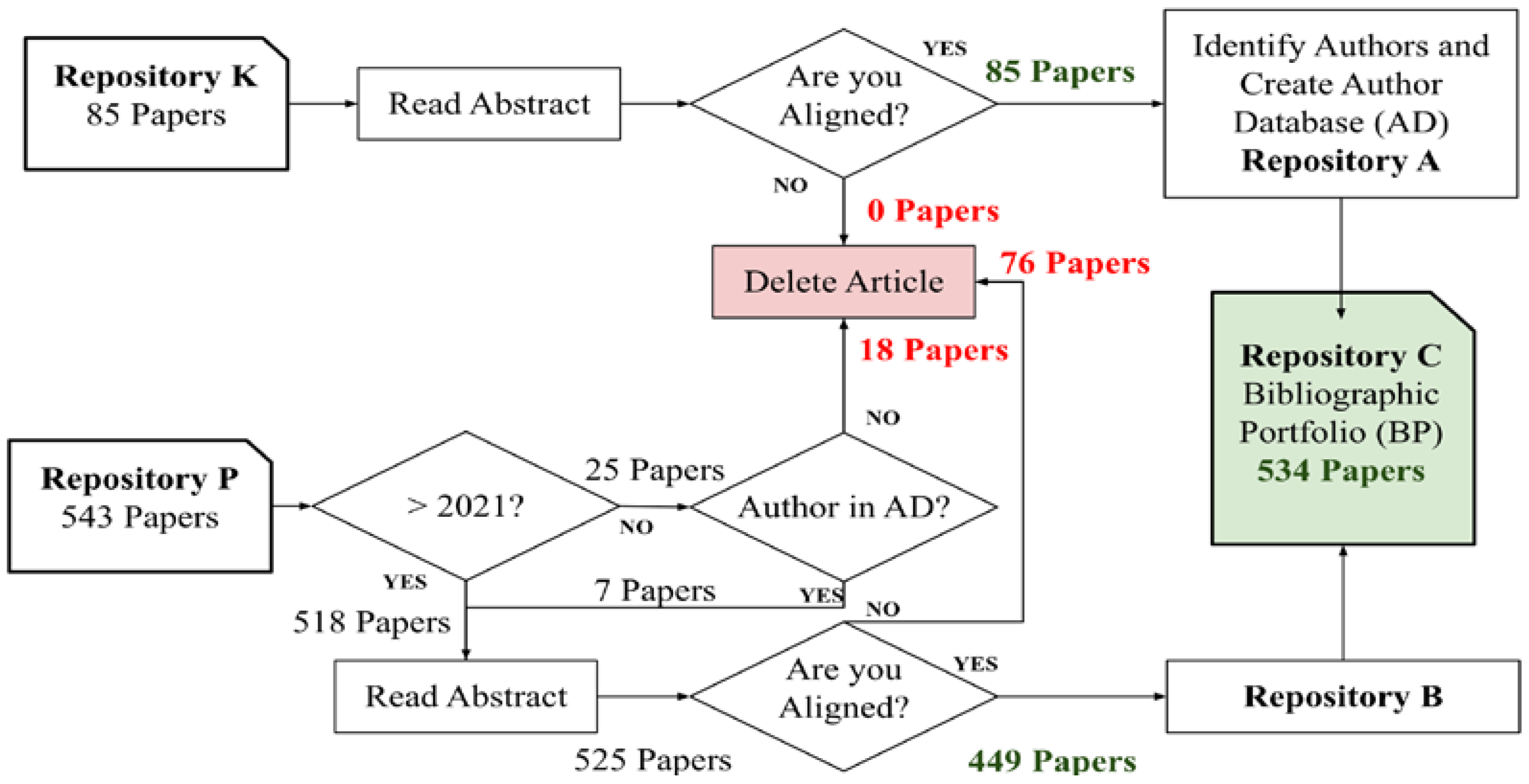
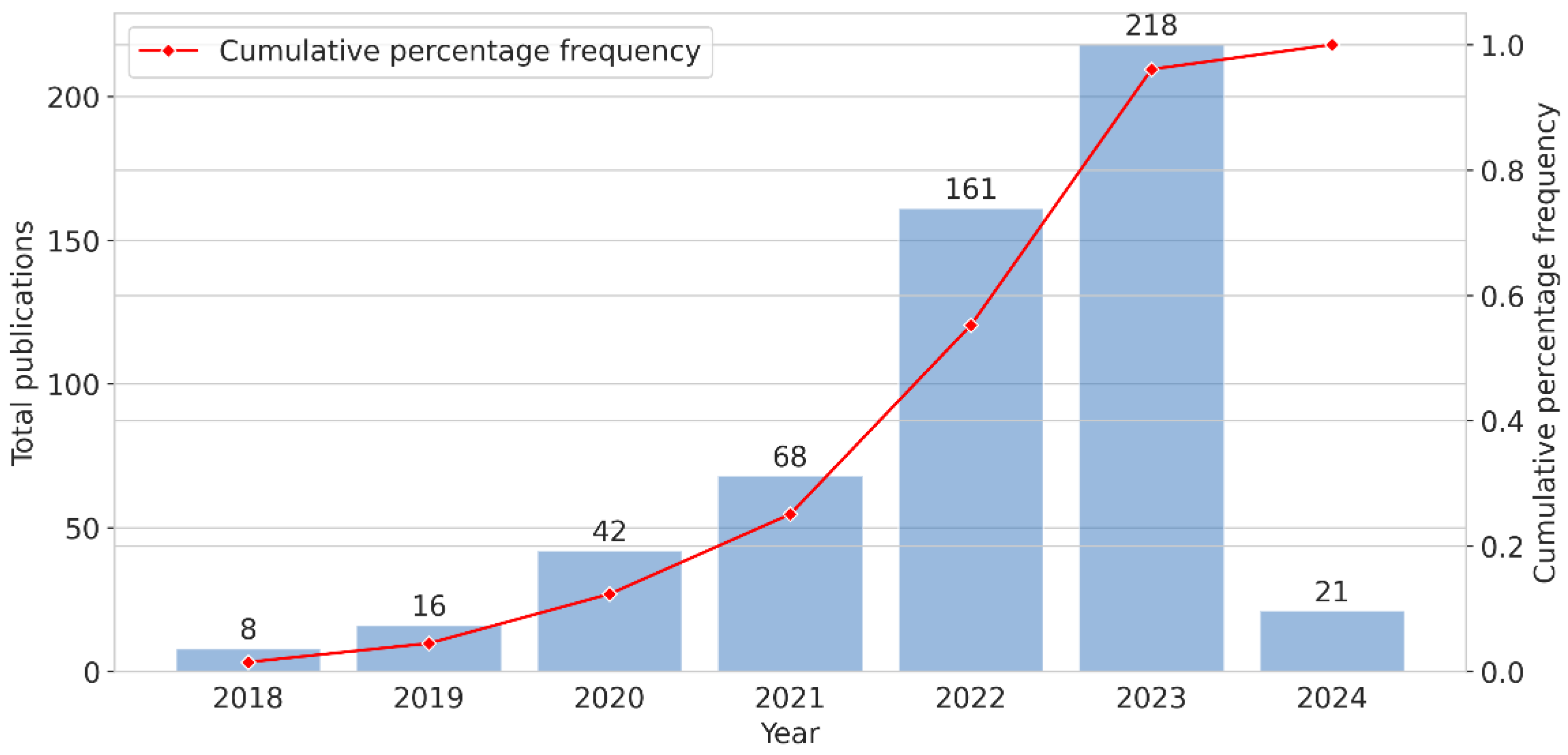
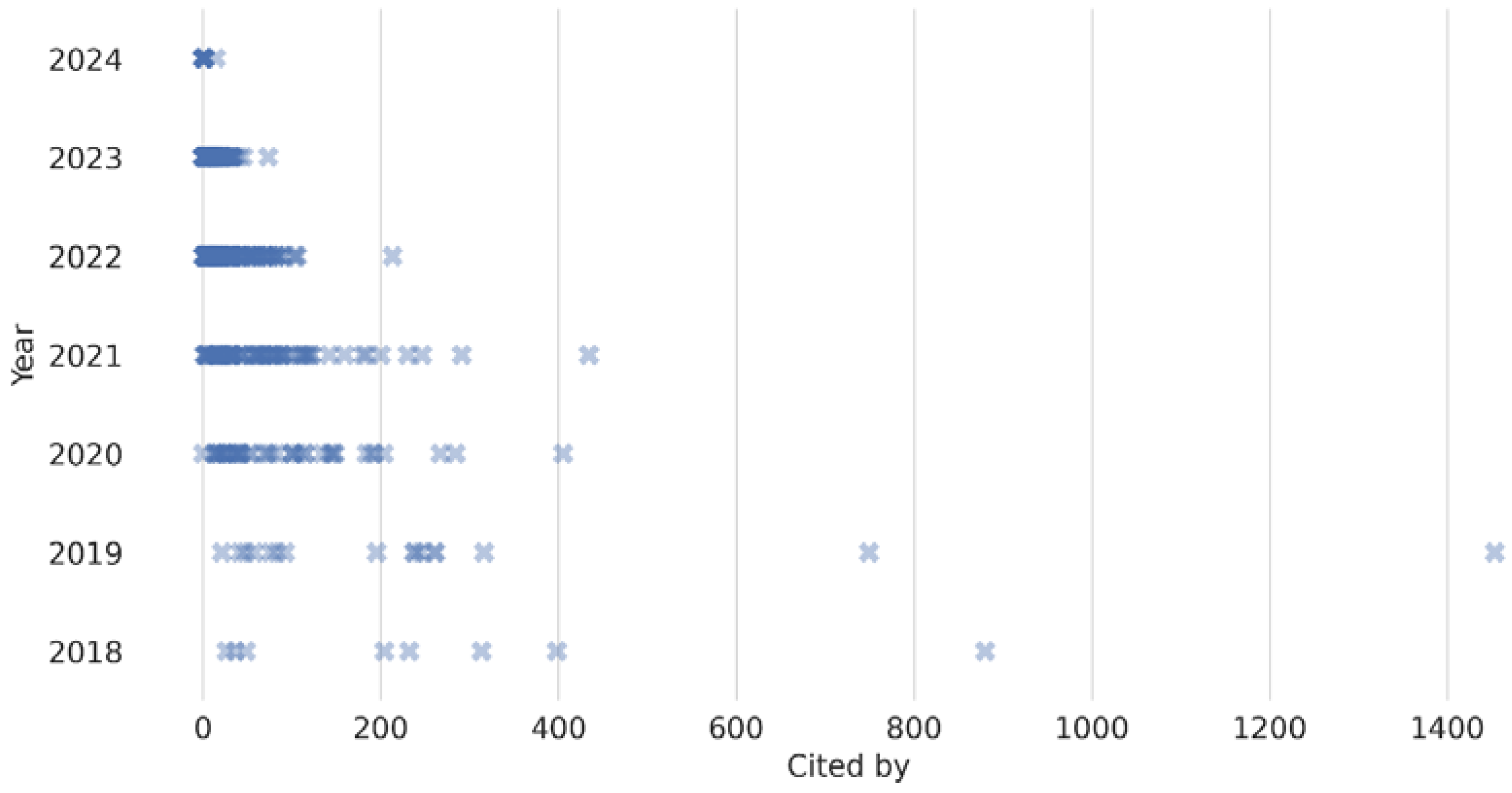
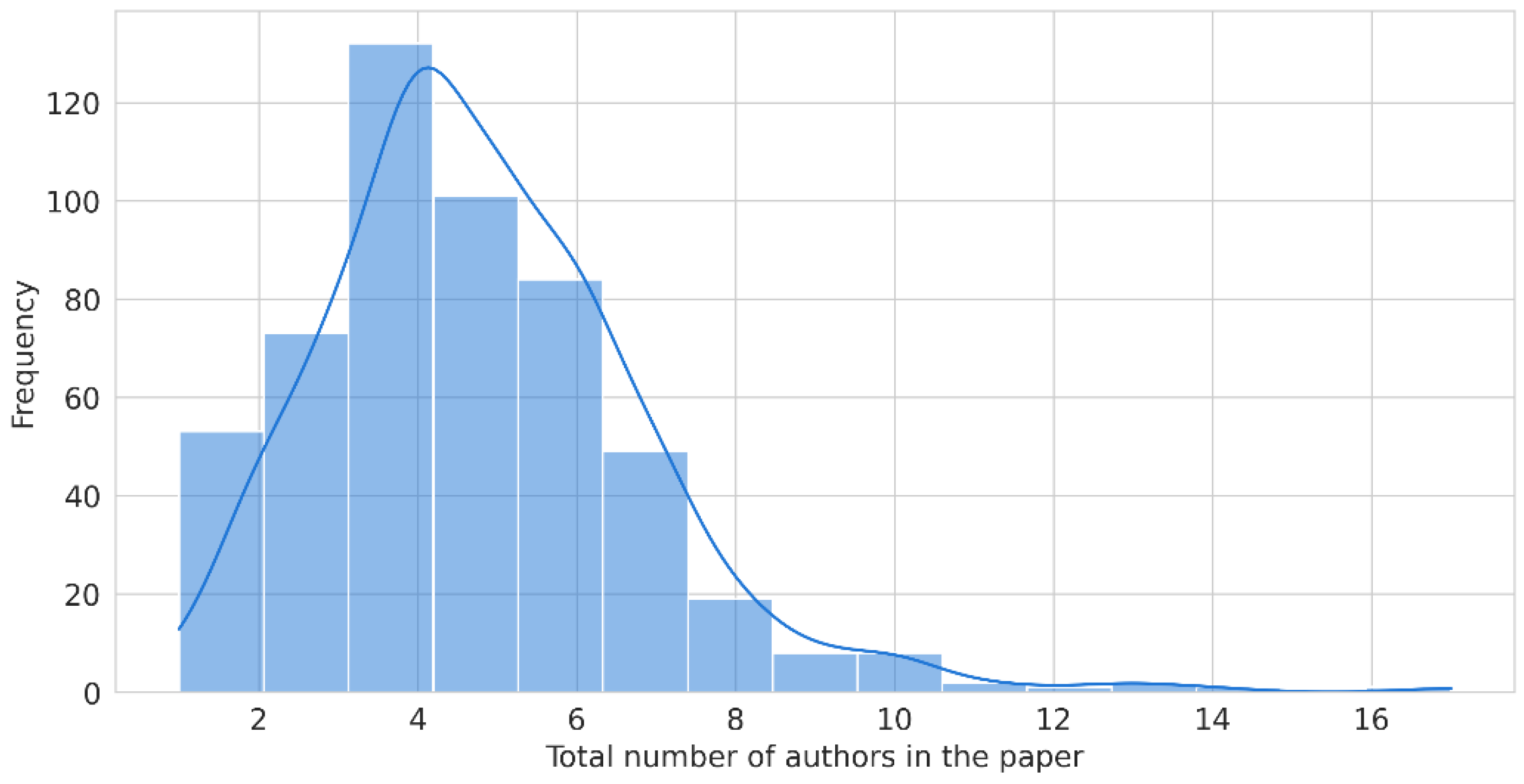
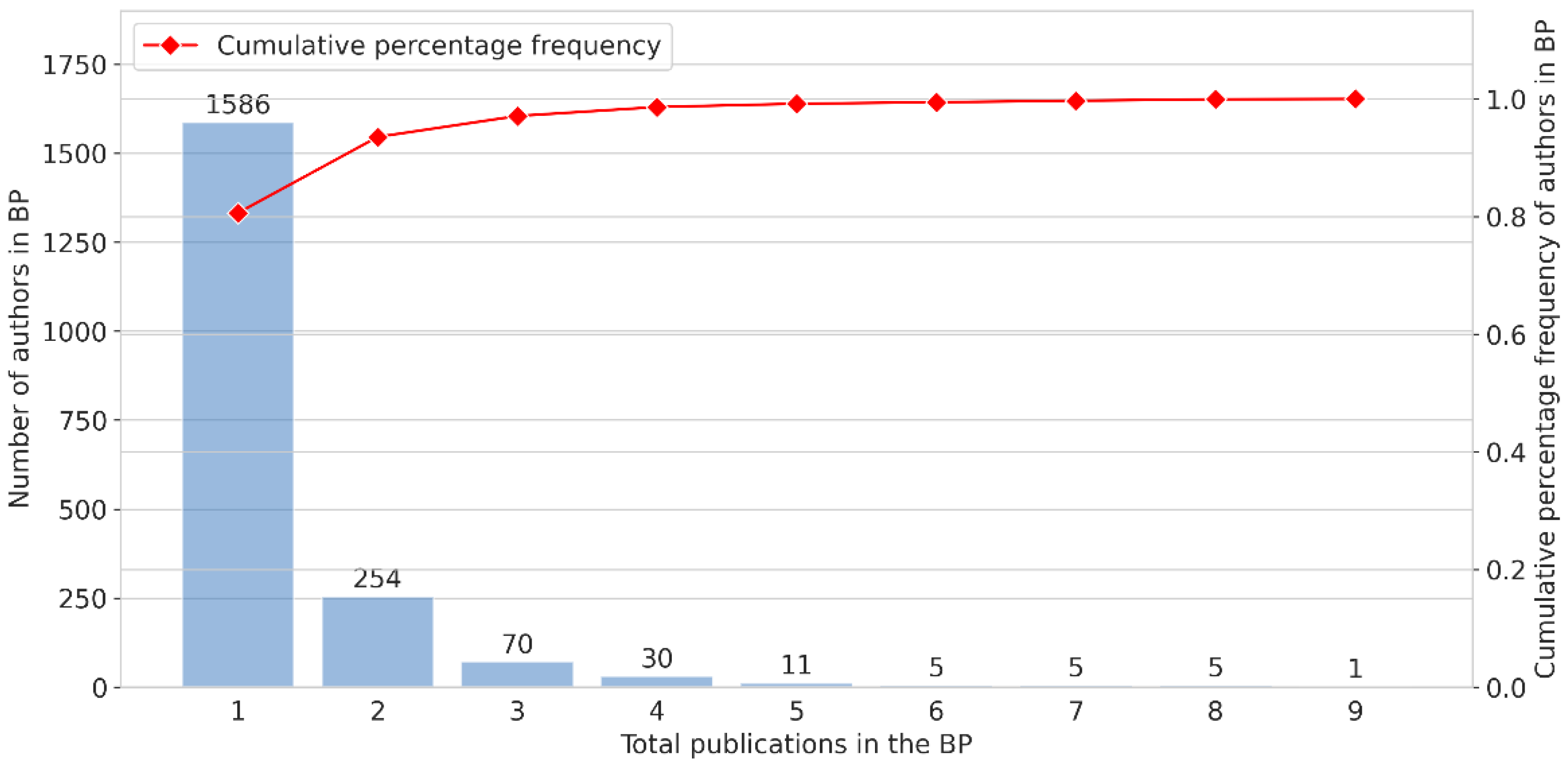

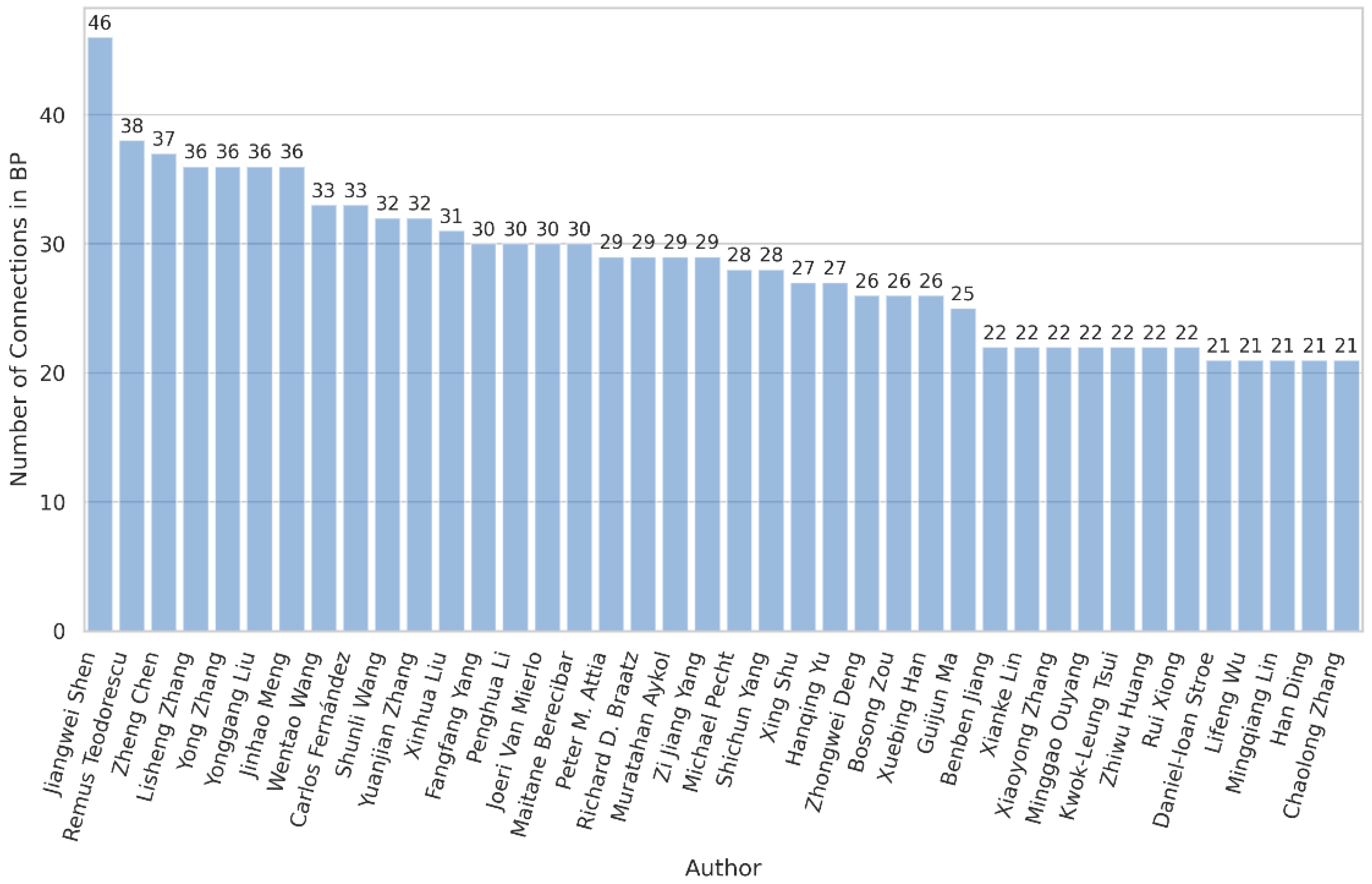

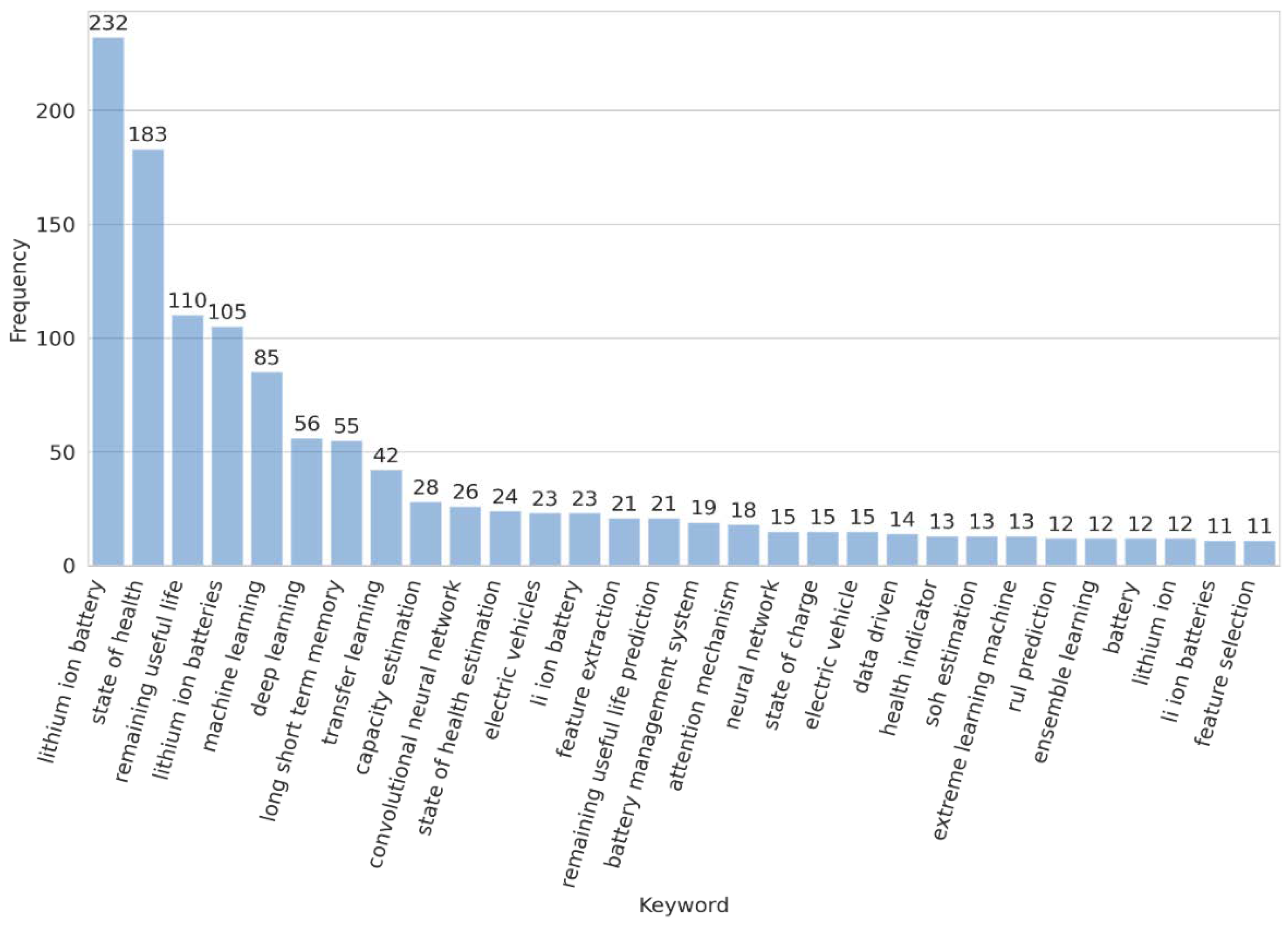
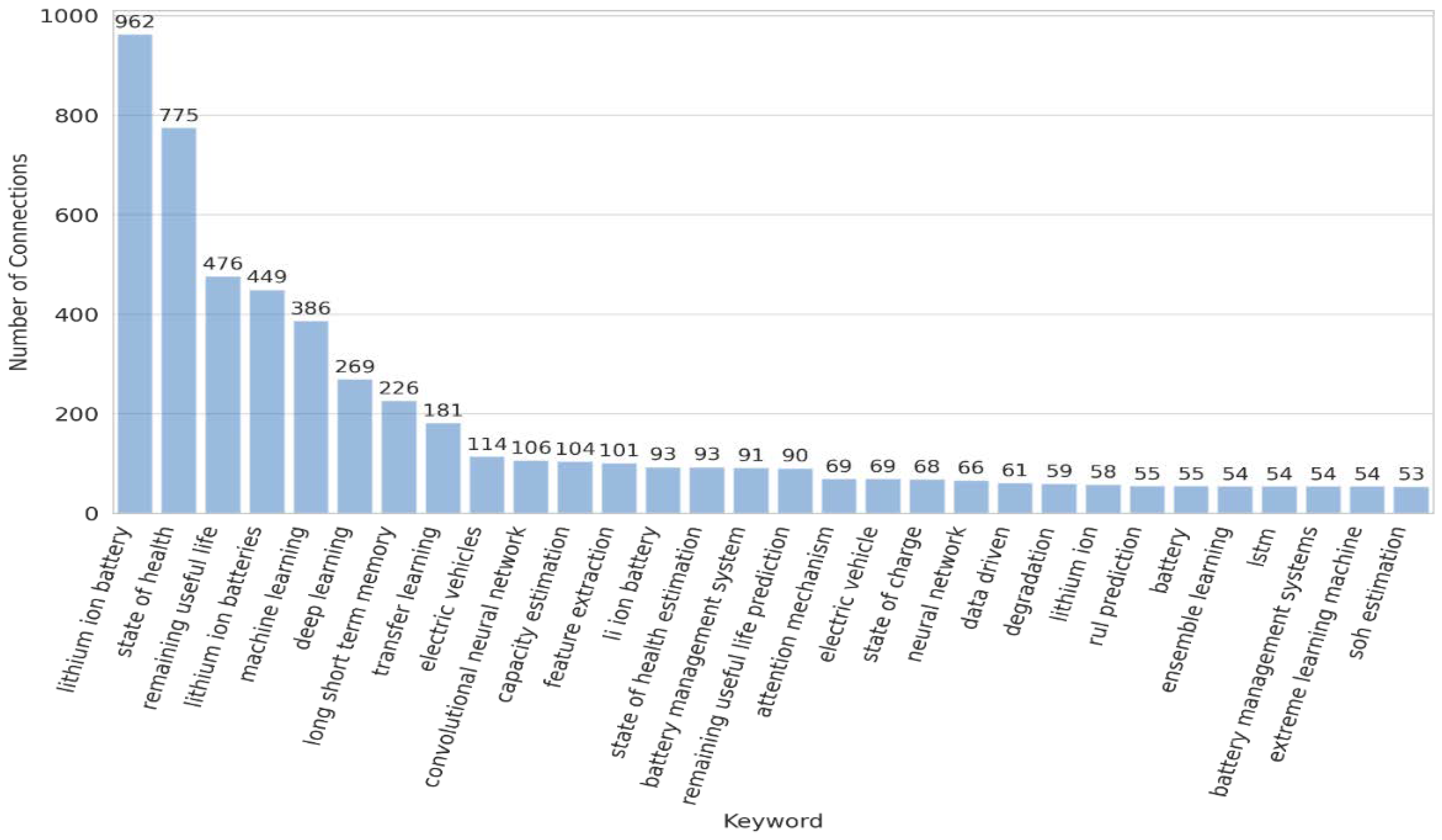
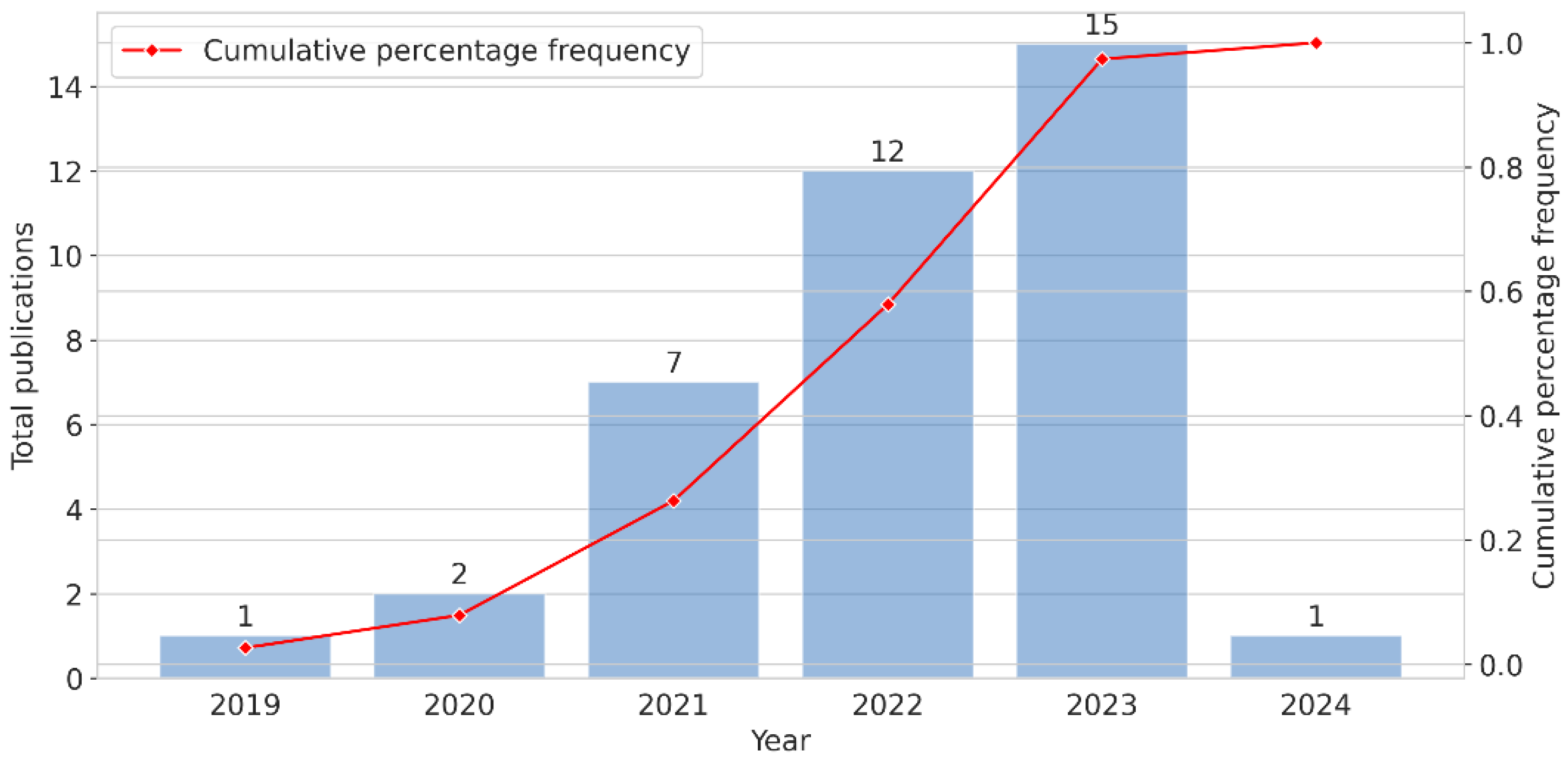
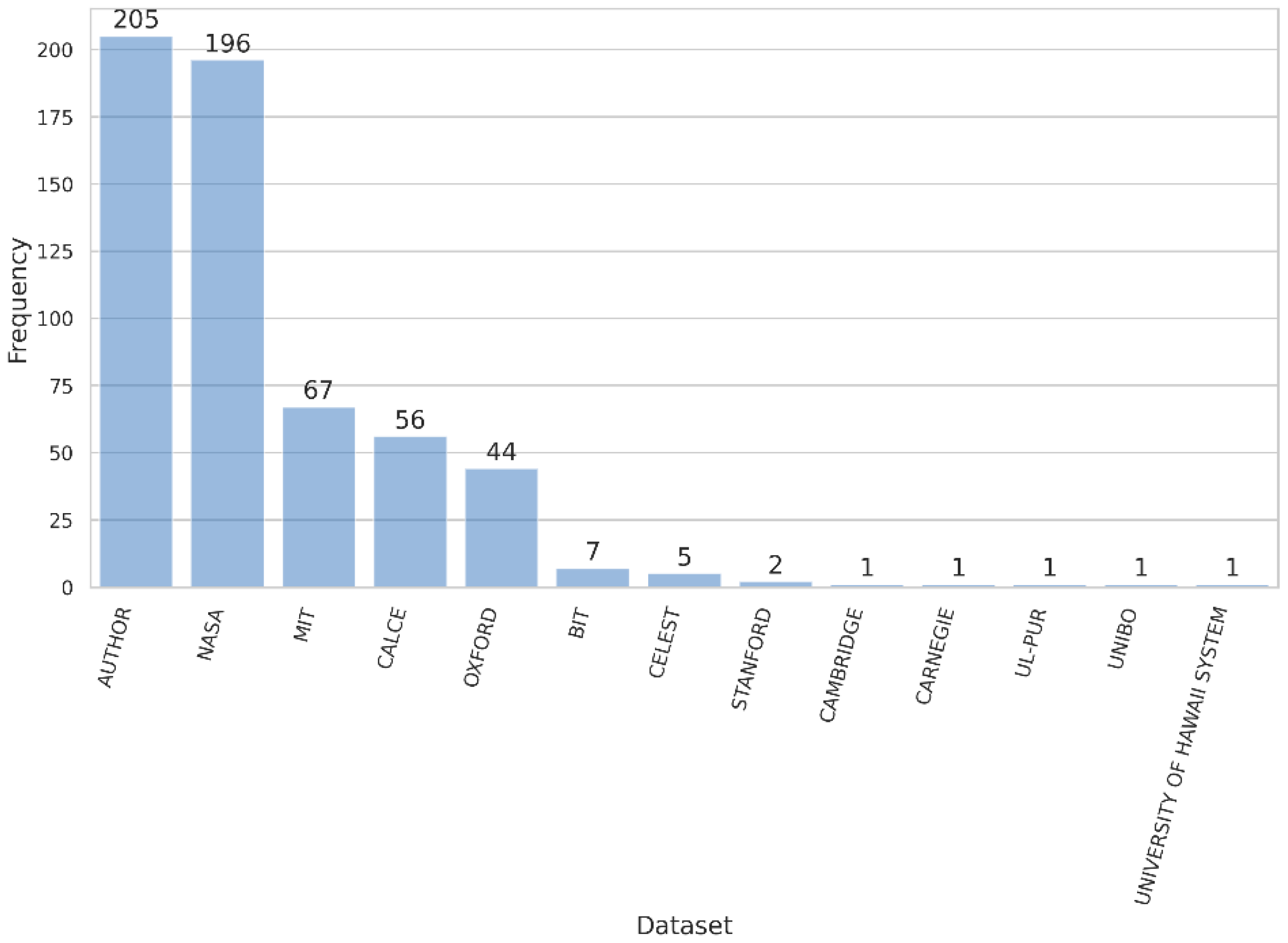

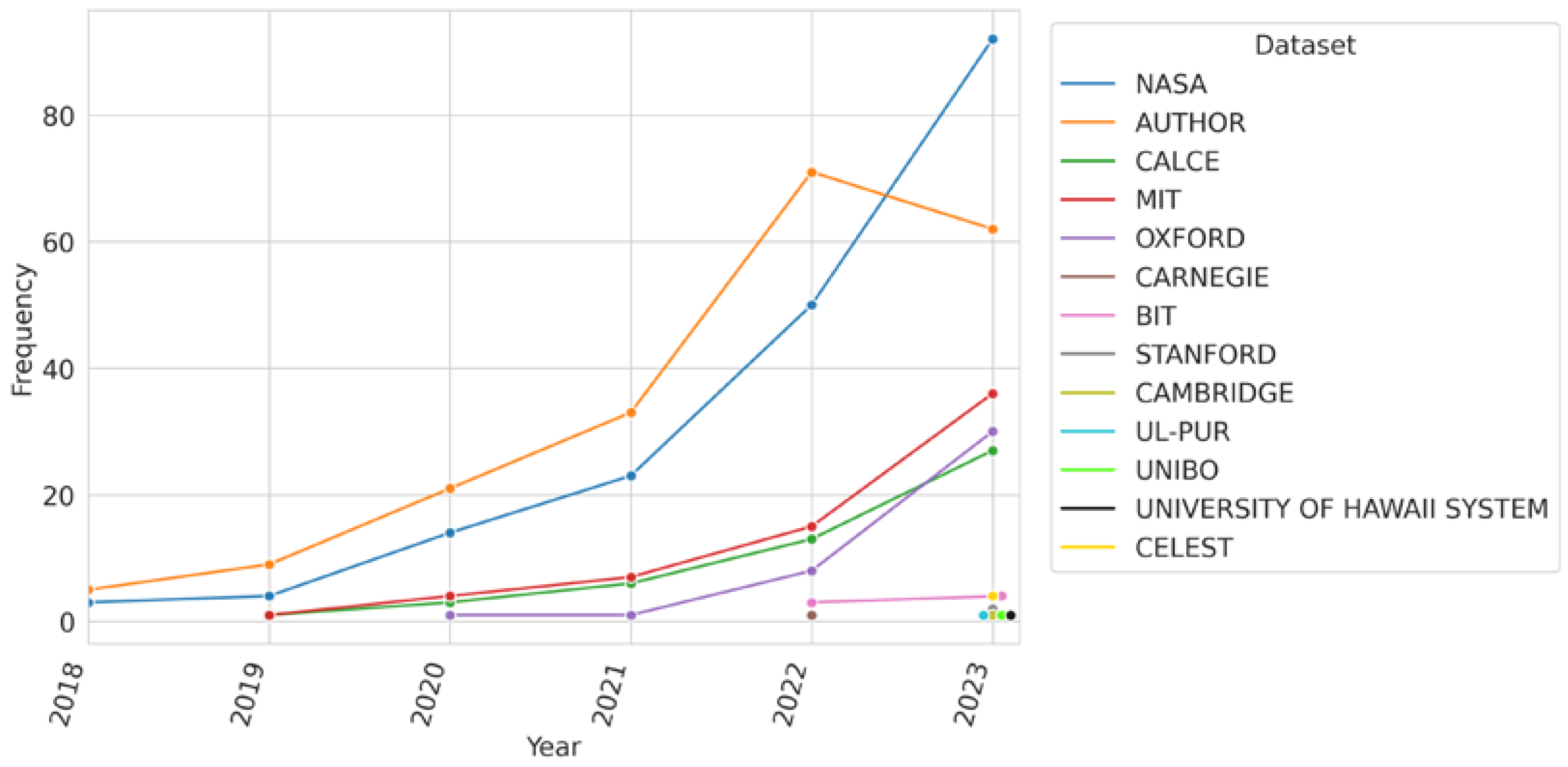
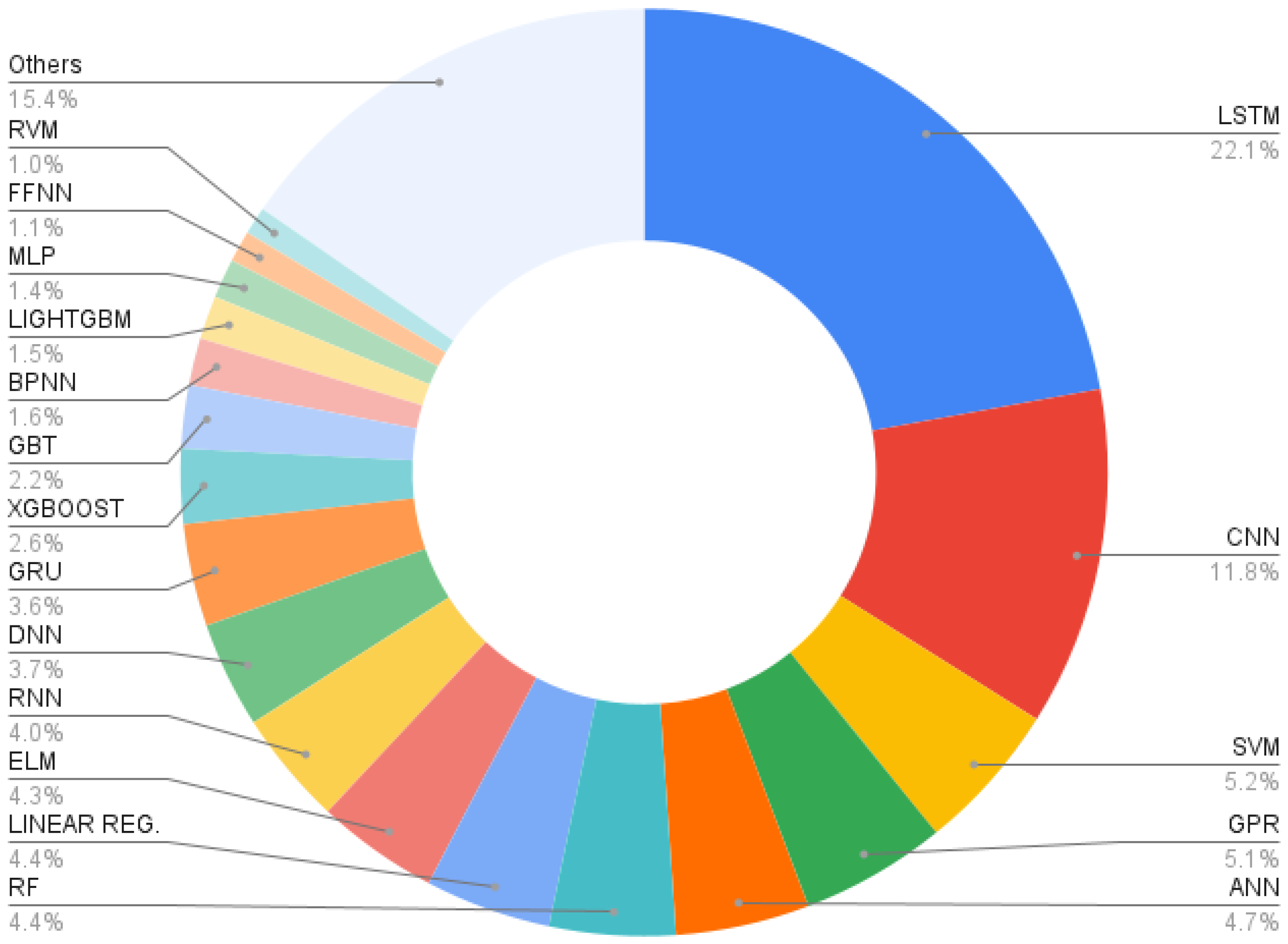
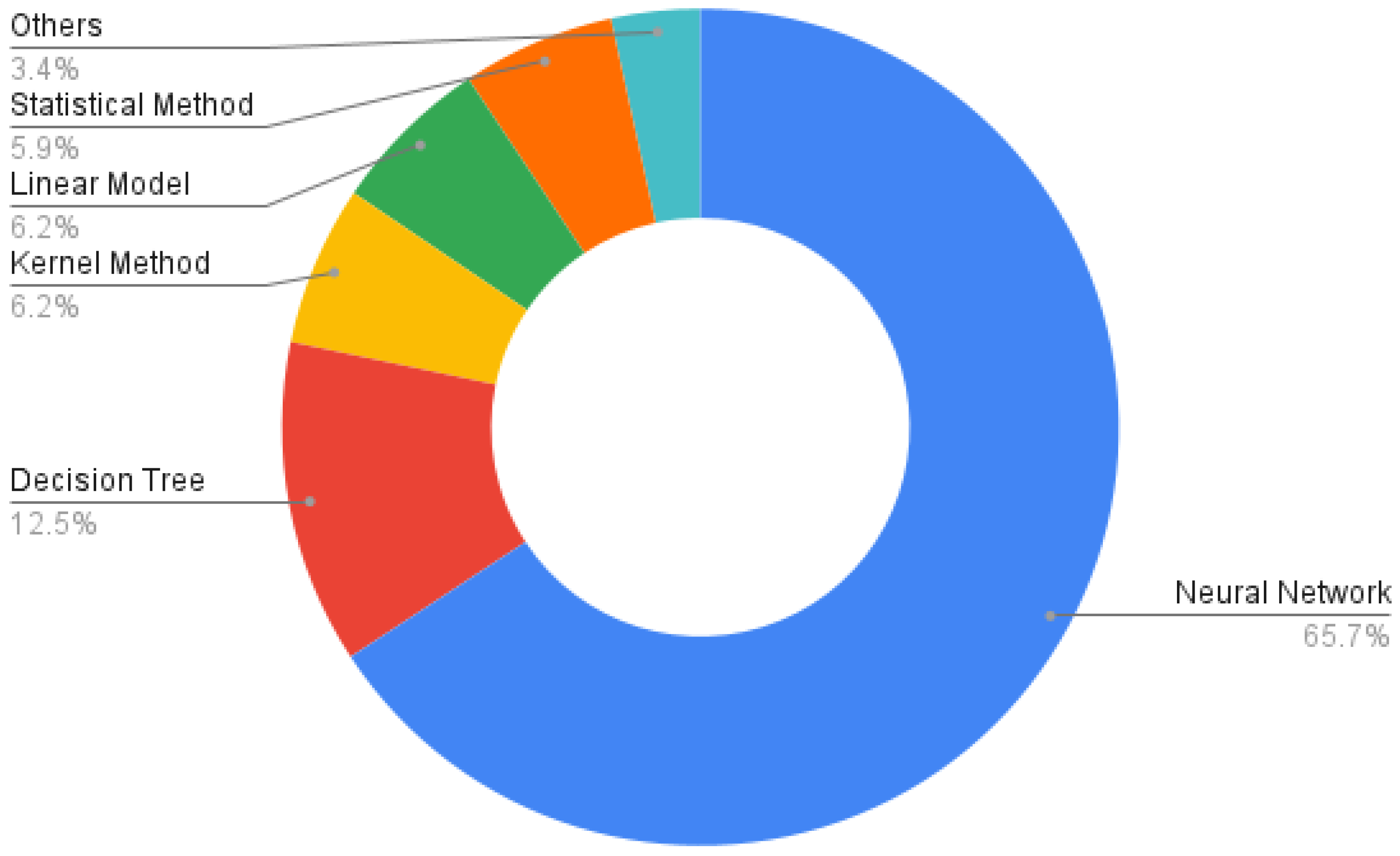
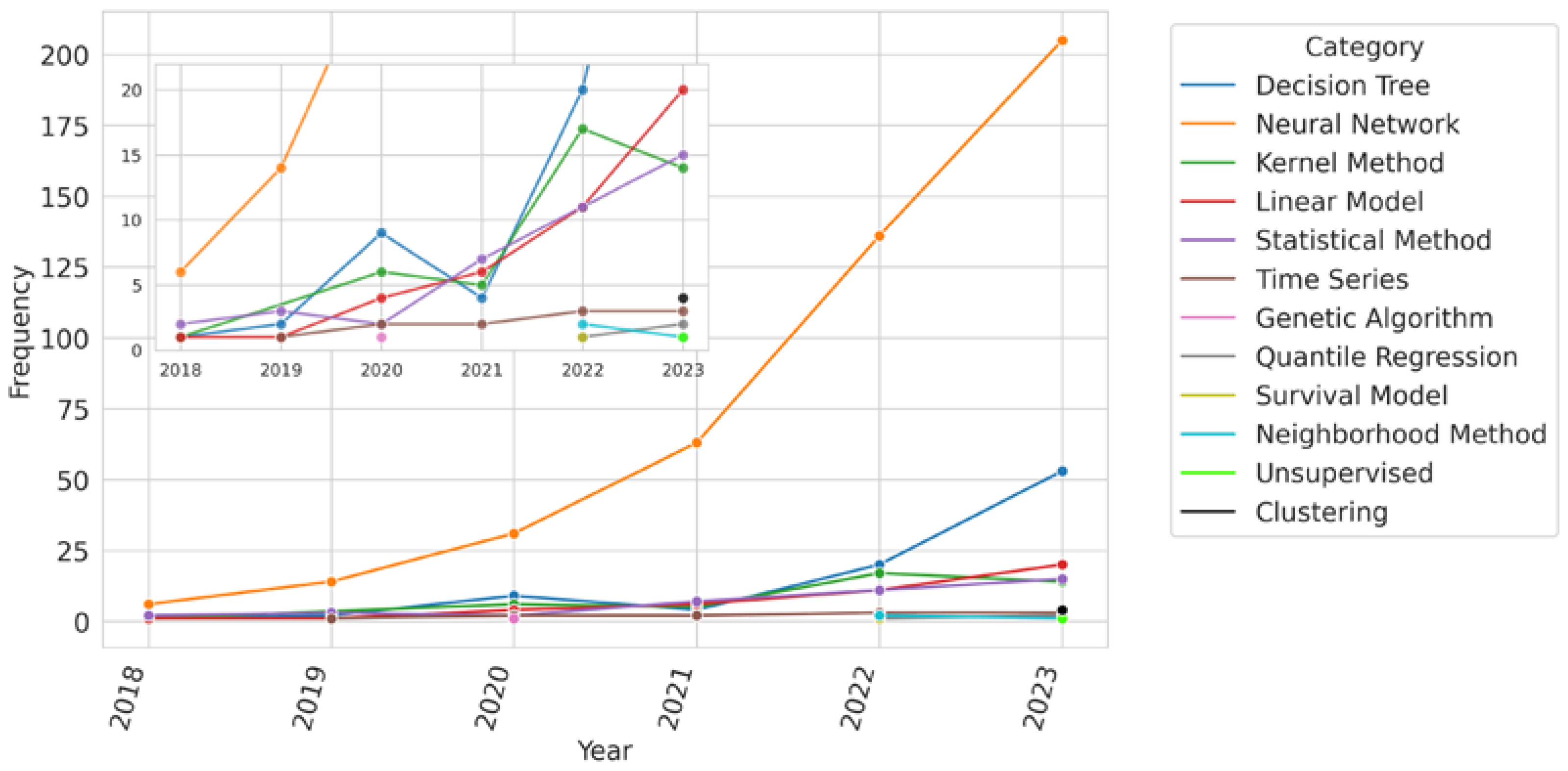


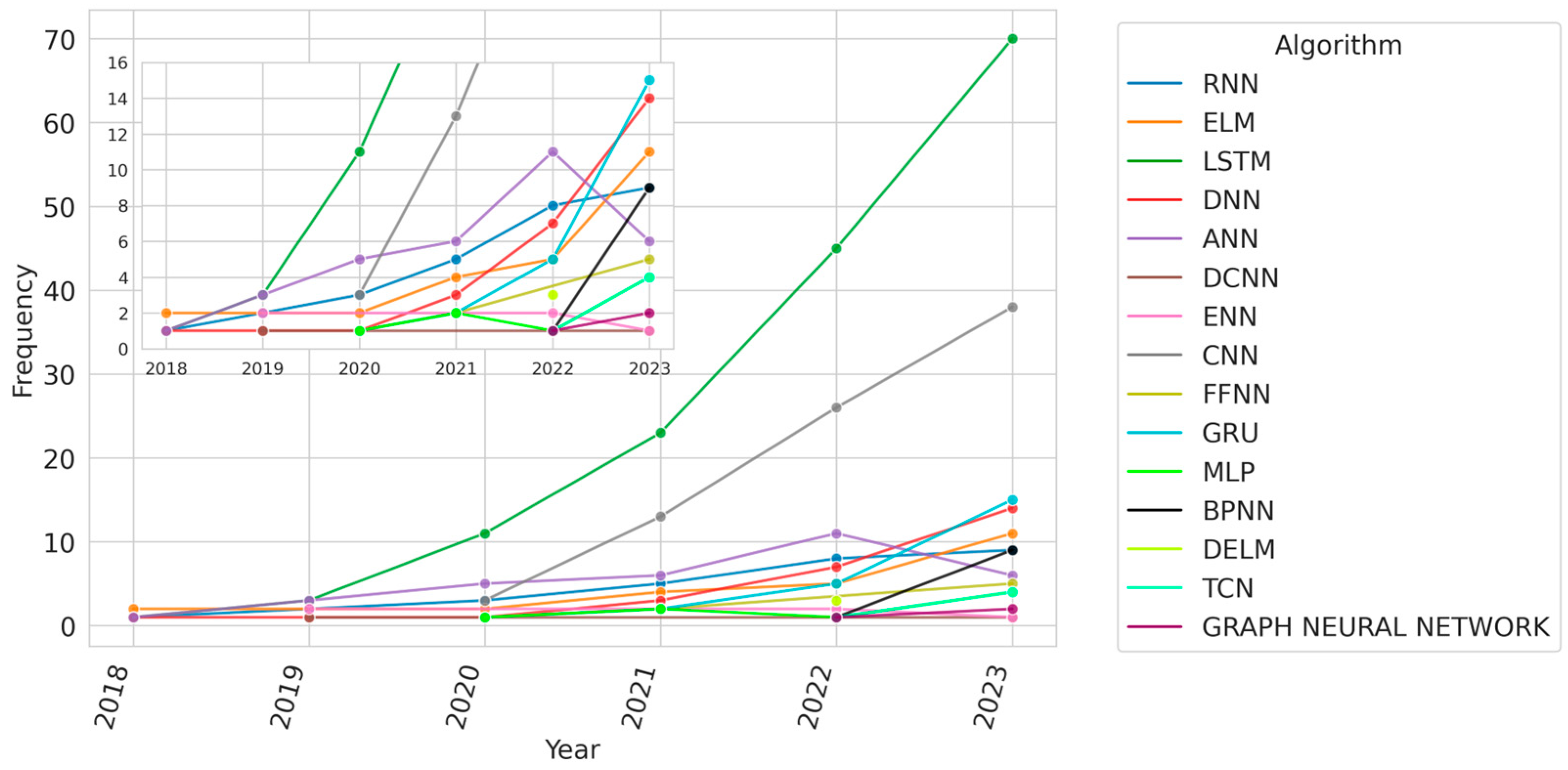
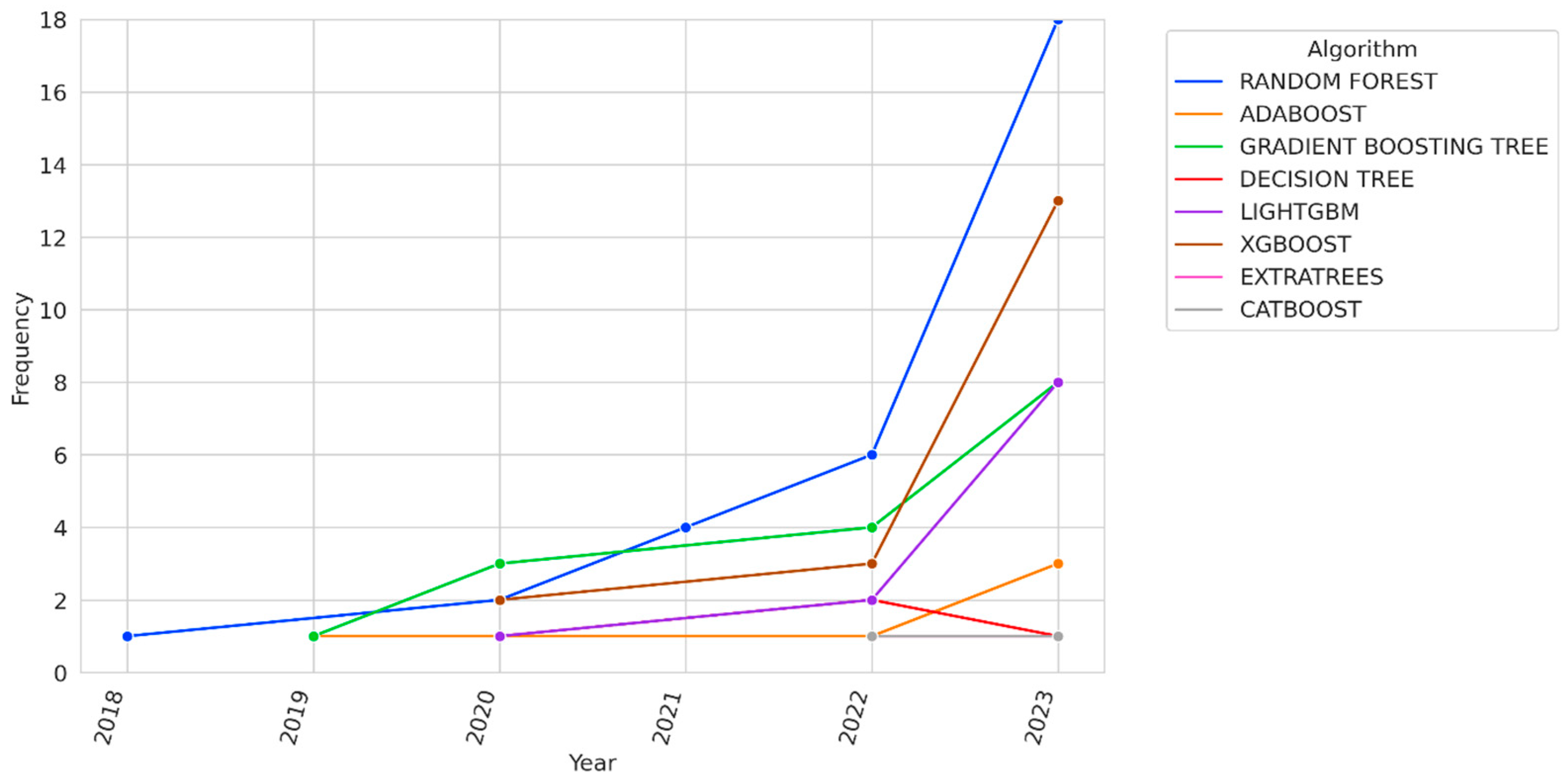


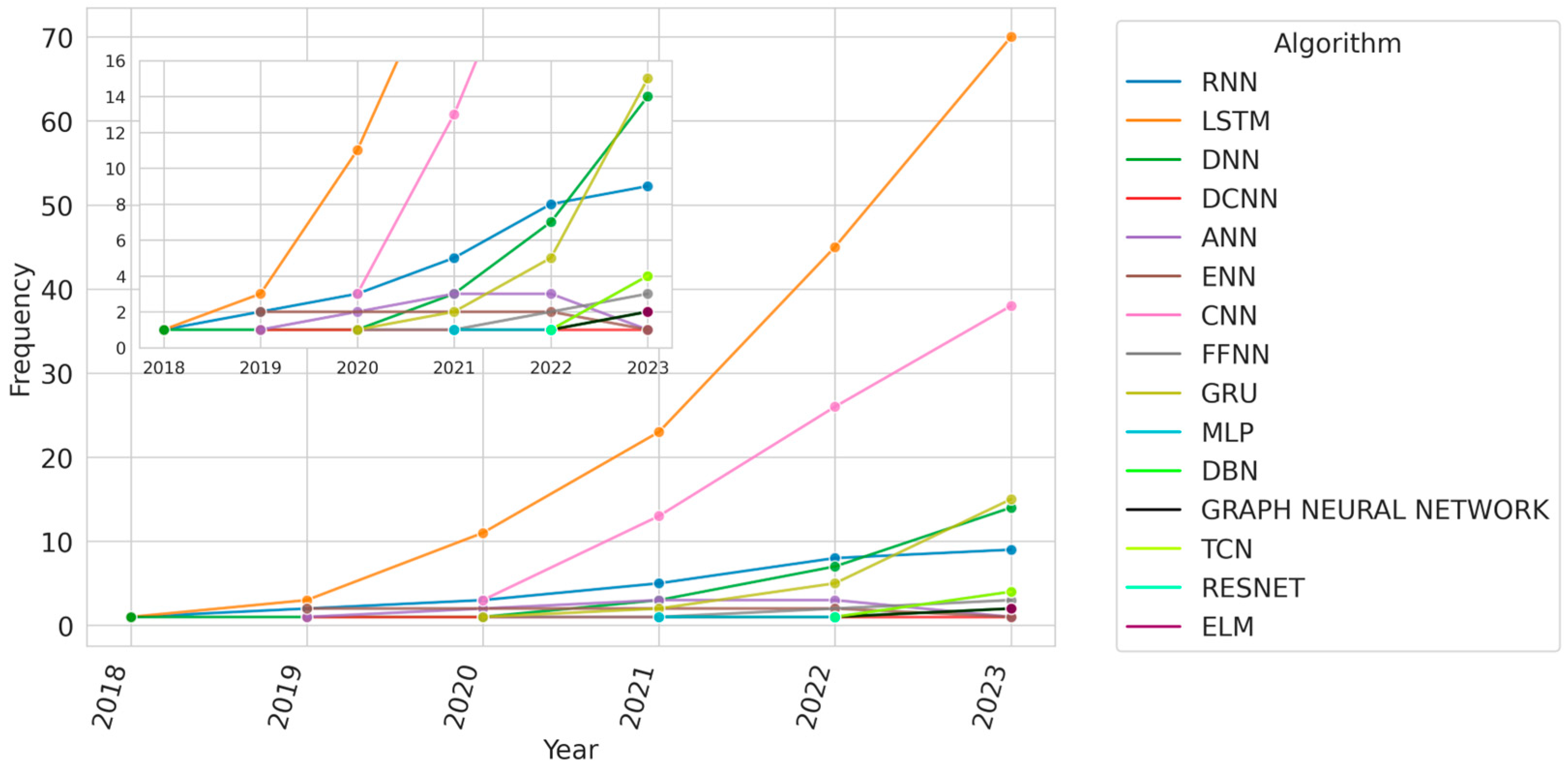
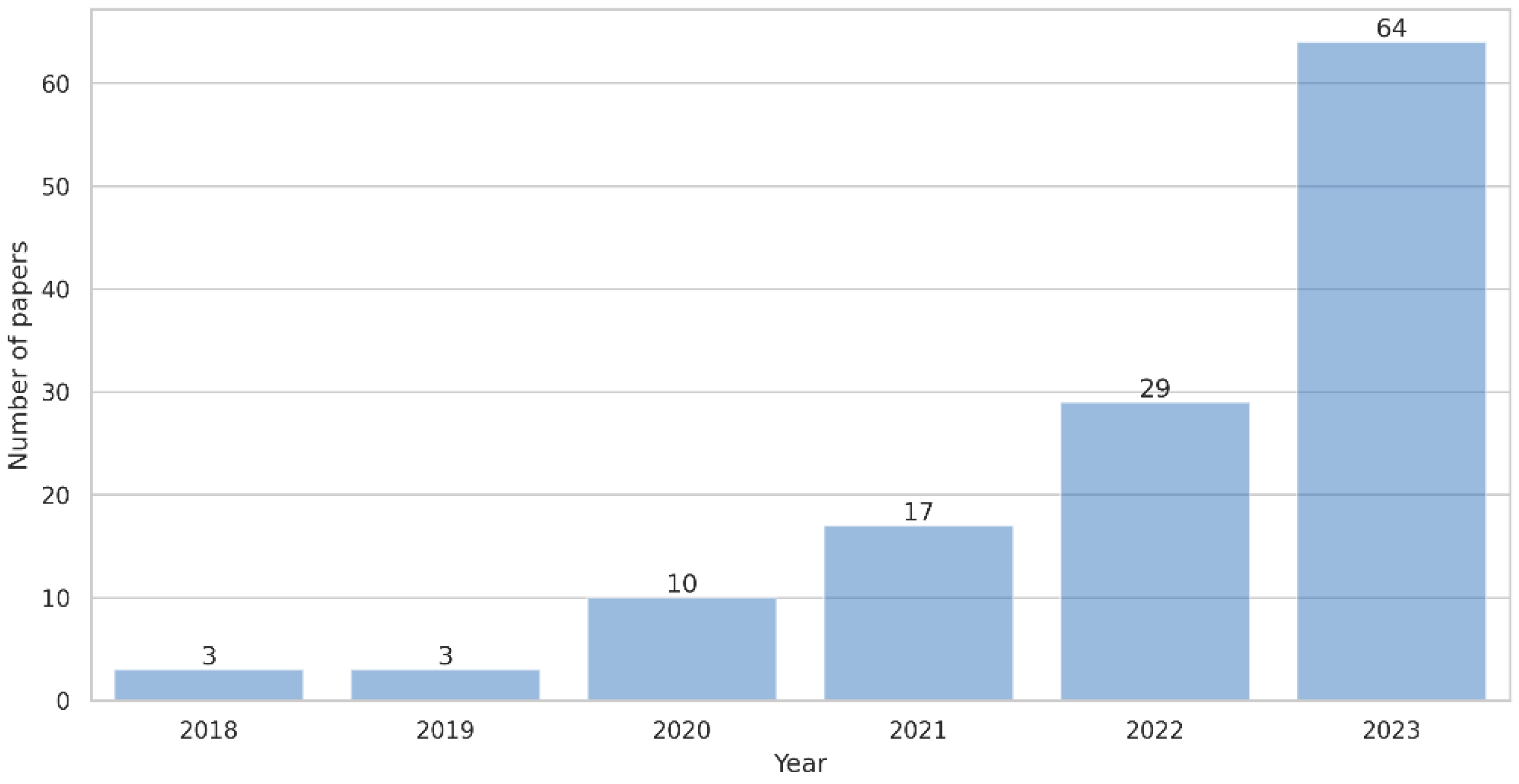
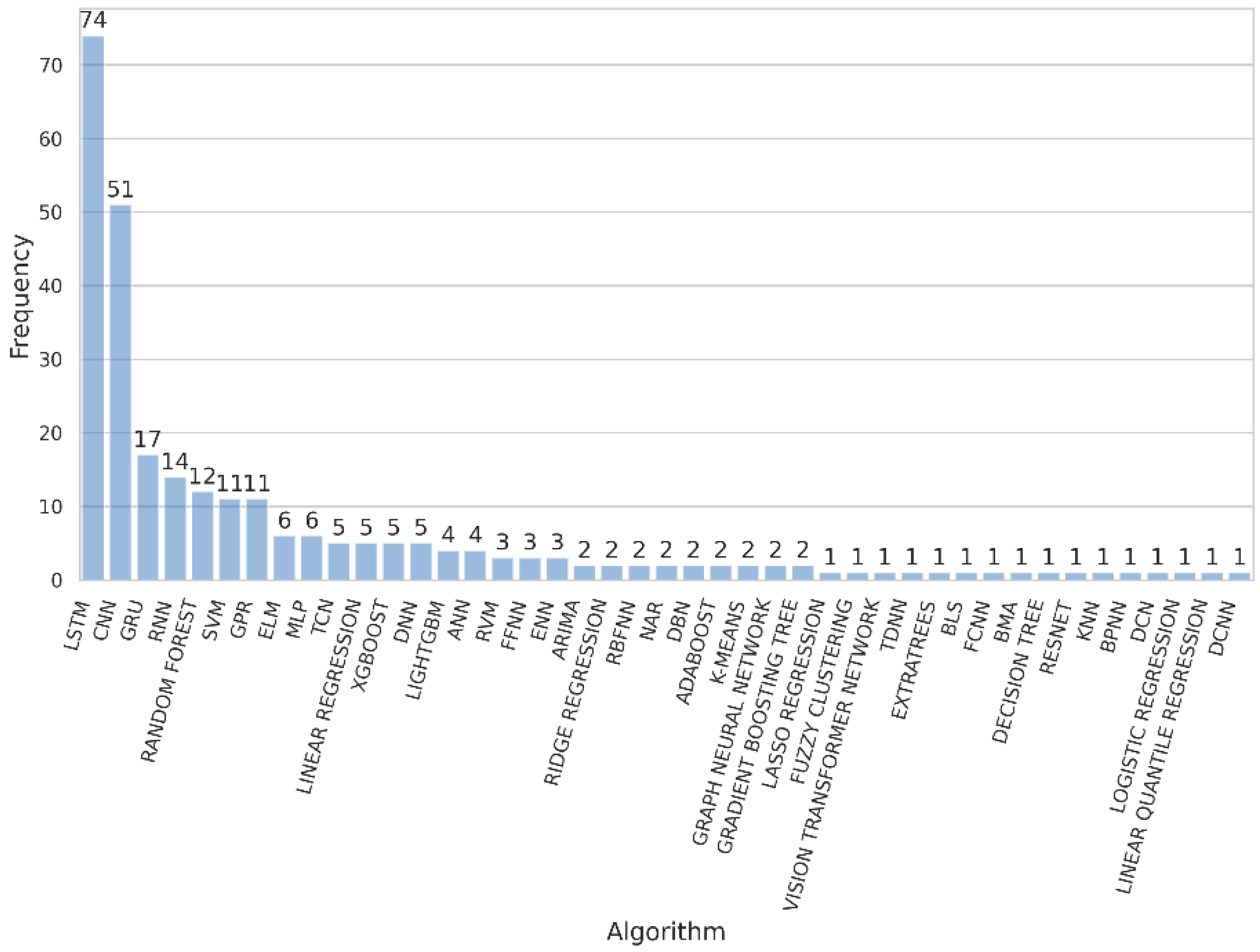

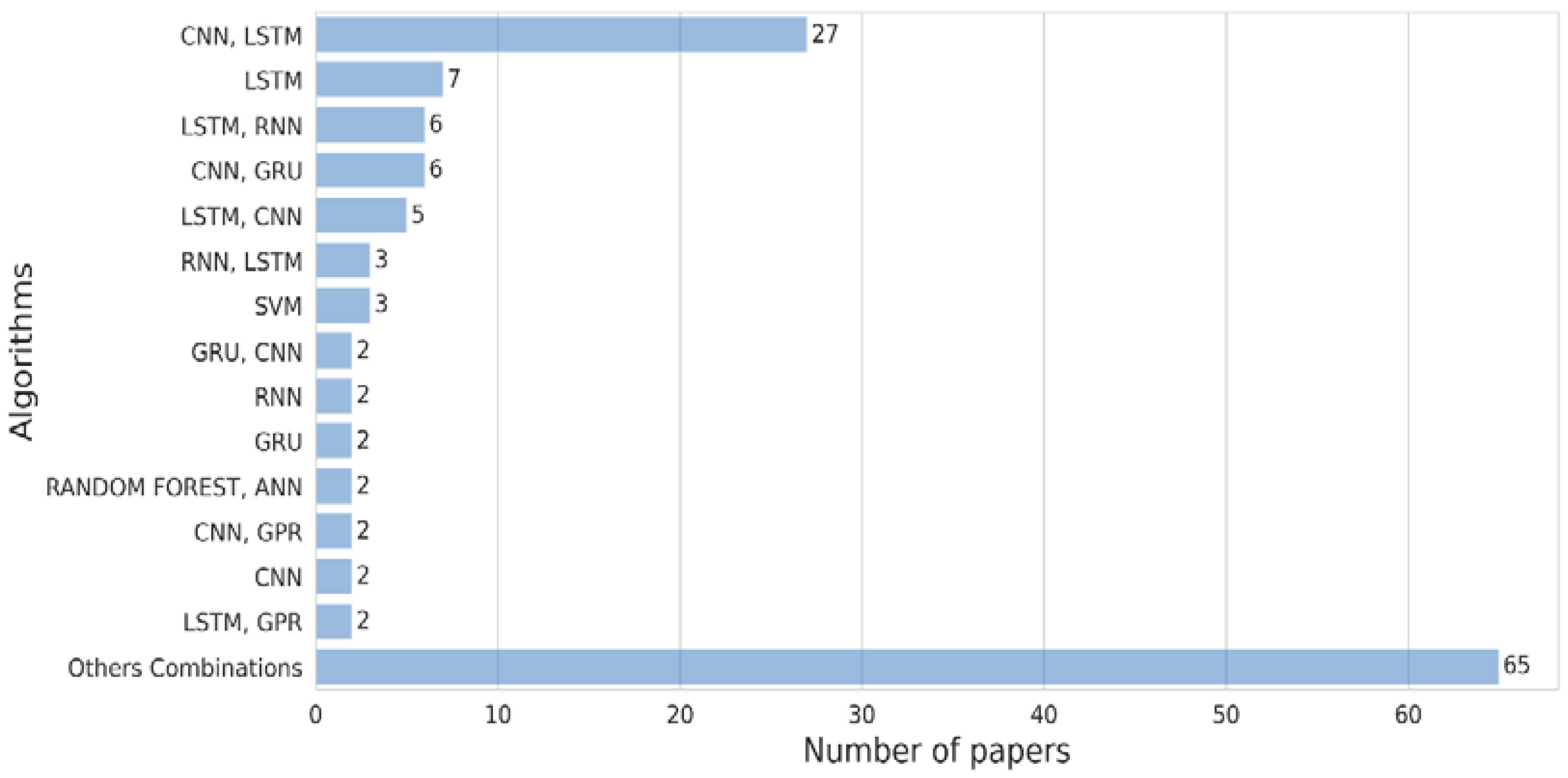
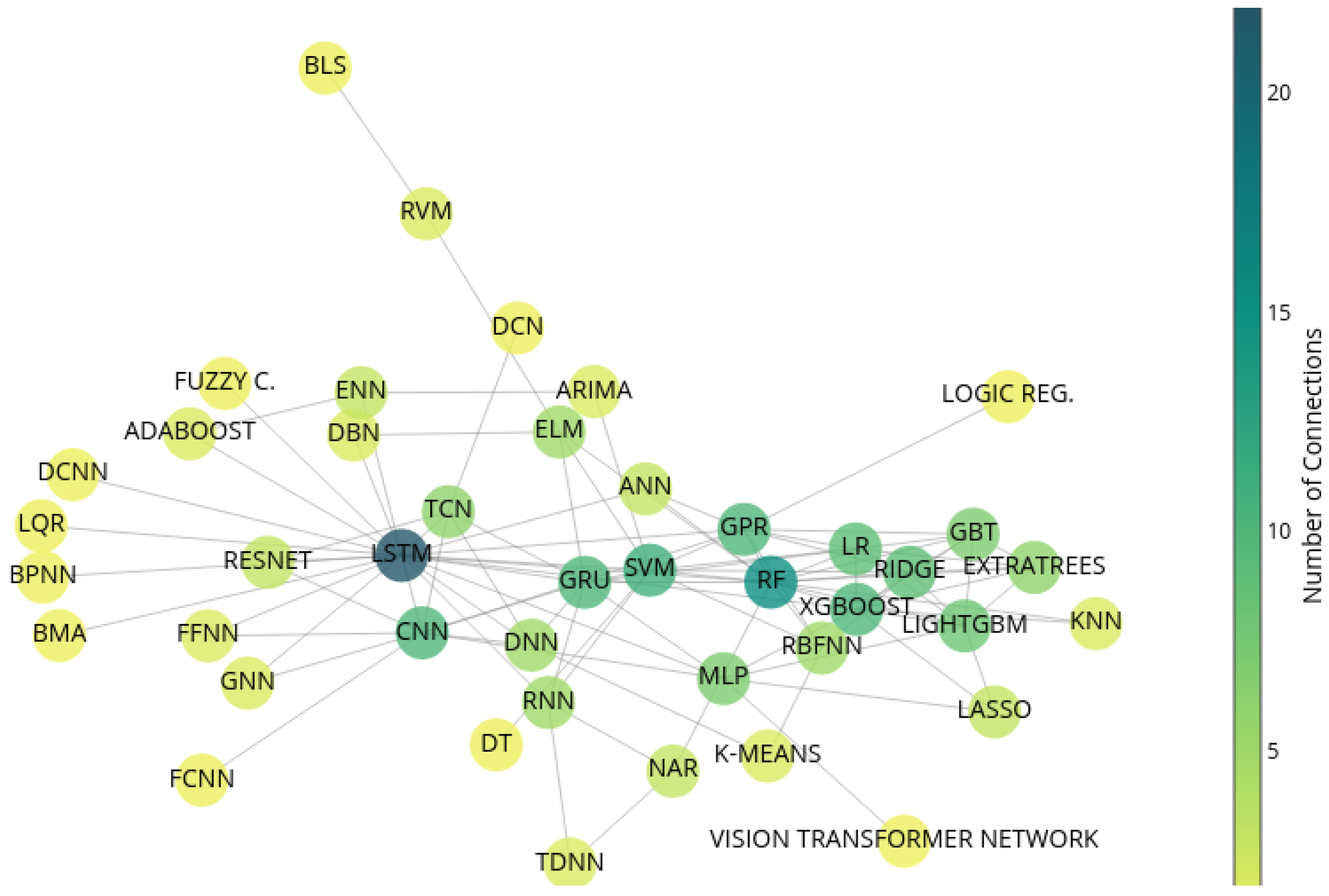

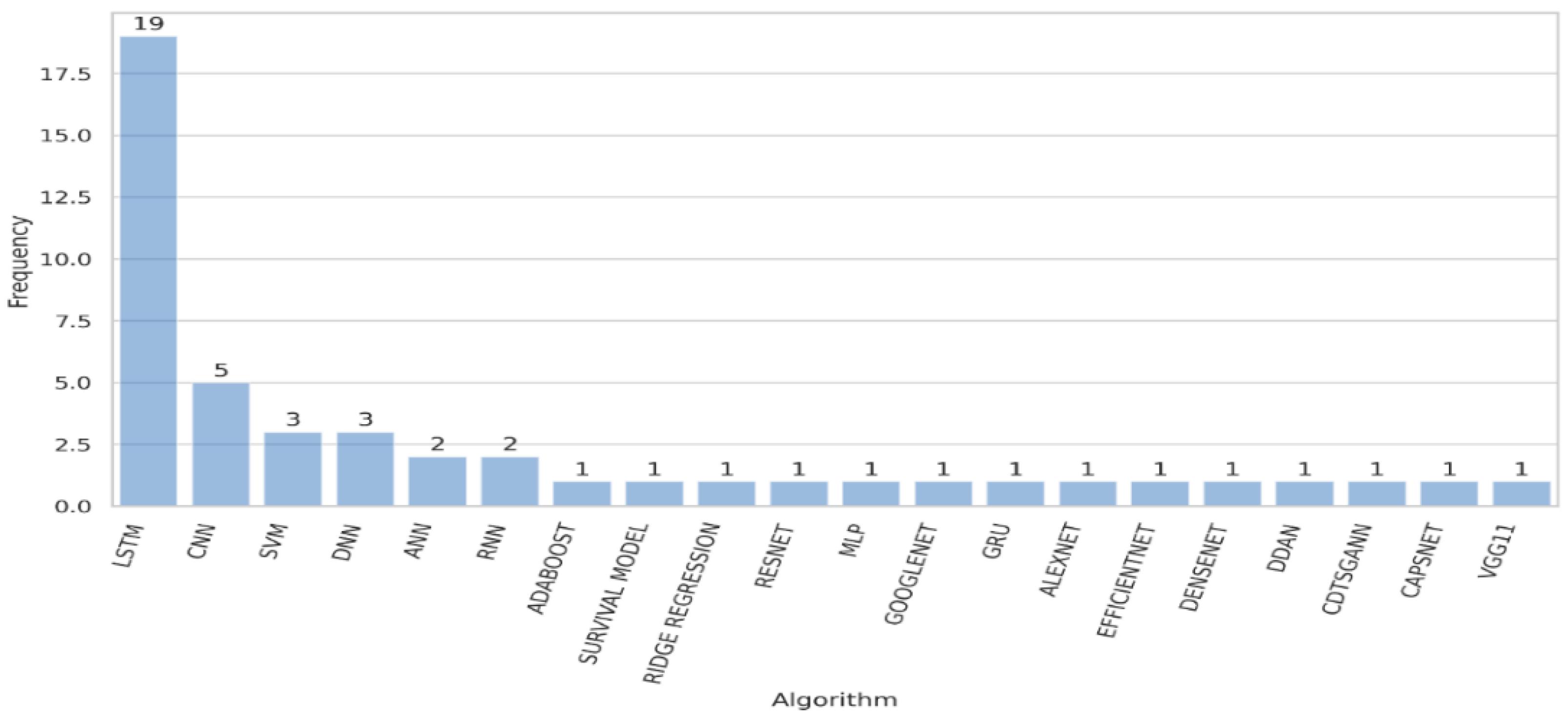
| Axis 1 | Axis 2 | Axis 3 | Axis 4 |
|---|---|---|---|
| battery | state of health | estimation | machine learning |
| cycle life | prediction | neural network | |
| lifetime | features | transfer learning | |
| aging | second use | artificial intelligence | |
| degradation | boosting | ||
| useful life | quantile regression | ||
| ensemble | |||
| deep learning |
| Axis | Keyword | Keyword Adherence Rate |
|---|---|---|
| Axis 2 | state of health | 29.3% |
| degradation | 20.6% | |
| aging | 17.7% | |
| useful life | 13.6% | |
| cycle life | 10.9% | |
| lifetime | 7.9% | |
| Axis 3 | prediction | 36.5% |
| estimation | 30.9% | |
| features | 24.9% | |
| second use | 7.8% | |
| Axis 4 | neural network | 36.9% |
| machine learning | 28.6% | |
| deep learning | 14.6% | |
| ensemble | 6.2% | |
| transfer learning | 5.5% | |
| artificial intelligence | 4.5% | |
| boosting | 3.4% | |
| quantile regression | 0.3% |
| Title | Citations | Ref. |
|---|---|---|
| Data-driven prediction of battery cycle life before capacity degradation | 1453 | [1] |
| Long short-term memory recurrent neural network for remaining-useful-life prediction of lithium-ion batteries | 880 | [44] |
| Data-driven health estimation and lifetime prediction of lithium-ion batteries: A review | 749 | [10] |
| A data-driven approach with uncertainty quantification for predicting future capacities and remaining useful life of lithium-ion batteries | 434 | [45] |
| Predicting the states of charge and health of batteries using data-driven machine learning | 405 | [46] |
| Random forest regression for online capacity estimation of lithium-ion batteries | 398 | [47] |
| Remaining-useful-life prediction for lithium-ion batteries based on a hybrid model combining the long short-term memory and Elman neural networks | 316 | [48] |
| Remaining-useful-life prediction for lithium-ion batteries: A deep-learning approach | 313 | [49] |
| A data-driven auto-CNN-LSTM prediction model for lithium-ion-batteries’ remaining useful life | 291 | [50] |
| State-of-health estimation and remaining-useful-life prediction for the lithium-ion battery based on a variant long short-term memory neural network | 284 | [51] |
| Machine learning applied to electrified-vehicle-batteries’ state-of-charge and state-of-health estimations: State of the art | 267 | [11] |
| Modified Gaussian process regression models for cyclic capacity prediction of lithium-ion batteries | 262 | [52] |
| A deep-learning method for online capacity estimation of lithium-ion batteries | 260 | [53] |
| Machine-learning pipeline for batteries’ state-of-health estimations | 246 | [54] |
| A neural-network-based method for RUL prediction and SOH monitoring of lithium-ion batteries | 245 | [55] |
| A novel estimation method for the state of health of lithium-ion batteries using a prior-knowledge-based neural network and a Markov chain | 239 | [56] |
| A data-driven predictive prognostic model for lithium-ion batteries based on a deep-learning algorithm | 237 | [57] |
| Novel battery state-of-health online estimation method using multiple health indicators and an extreme-learning machine | 232 | [58] |
| Online capacity estimation of lithium-ion batteries with deep long short-term memory networks | 230 | [59] |
| A review of second-life Li-ion batteries: prospects, challenges, and issues | 213 | [12] |
| State-of-health prediction of lithium-ion batteries: Multiscale logic regression and Gaussian process regression ensemble | 204 | [60] |
| A novel deep-learning framework for the state-of-health estimation of lithium-ion batteries | 203 | [61] |
| A review of state-of-health estimations and remaining-useful-life prognostics of lithium-ion batteries | 200 | [13] |
| Synchronous estimation of state of health and remaining useful lifetime for lithium-ion batteries using the incremental capacity and artificial neural networks | 195 | [62] |
| Deep-reinforcement-learning-based energy storage arbitrage with accurate lithium-ion-battery degradation model | 193 | [63] |
| State-of-health estimation and remaining-useful-life prediction for lithium-ion batteries using a hybrid data-driven method | 190 | [64] |
| Transfer learning with a long short-term memory network for the state-of-health prediction of lithium-ion batteries | 184 | [65] |
| Battery health prediction using fusion-based feature selection and machine learning | 184 | [66] |
| A review of non-probabilistic machine-learning-based state-of-health estimation techniques for lithium-ion batteries | 180 | [67] |
| A critical review of improved deep-learning methods for the remaining-useful-life prediction of lithium-ion batteries | 159 | [5] |
| Deep Gaussian process regression for lithium-ion-batteries’ health prognosis and degradation mode diagnosis | 148 | [68] |
| Model migration neural network for predicting battery-aging trajectories | 147 | [69] |
| Toward the swift prediction of the remaining useful life of lithium-ion batteries with end-to-end deep learning | 144 | [8] |
| Lithium-ion-batteries’ capacity estimation—A pruned convolutional neural network approach assisted by transfer learning | 142 | [7] |
| Identification and machine-learning prediction of the knee point and knee onset in capacity degradation curves of lithium-ion cells | 142 | [70] |
| Deep-learning-based prognostic approach for lithium-ion batteries with adaptive time-series prediction and online validation | 134 | [71] |
| Predictive battery-health management with transfer learning and online model correction | 122 | [72] |
| One-shot battery-degradation-trajectory prediction with deep learning | 121 | [73] |
| Online health diagnosis of lithium-ion batteries based on a nonlinear autoregressive neural network | 117 | [74] |
| Sorting, regrouping, and echelon utilization of large-scale retired lithium batteries: A critical review | 117 | [9] |
| Title | Year | Cited | Ref. |
|---|---|---|---|
| Data-driven health estimation and lifetime prediction of lithium-ion batteries: A review | 2019 | 749 | [10] |
| Machine learning applied to electrified-vehicle-batteries’ state-of-charge and state-of-health estimation: State of the art | 2020 | 267 | [11] |
| A review of second-life Li-ion batteries: prospects, challenges, and issues | 2022 | 213 | [12] |
| A review of state-of-health estimations and remaining-useful-life prognostics of lithium-ion batteries | 2021 | 200 | [13] |
| A review of non-probabilistic machine-learning-based state-of-health estimation techniques for lithium-ion batteries | 2021 | 180 | [67] |
| A critical review of improved deep-learning methods for the remaining-useful-life prediction of lithium-ion batteries | 2021 | 159 | [5] |
| Sorting, regrouping, and echelon utilization of large-scale retired lithium batteries: A critical review | 2021 | 117 | [9] |
| Big training data for artificial-intelligence-based Li-ion diagnoses and prognoses | 2020 | 100 | [117] |
| Machine learning in state-of-health and remaining-useful-life estimation: Theoretical and technological developments in battery degradation modeling | 2022 | 88 | [118] |
| State-of-health prediction of lithium-ion batteries based on machine learning: Advances and perspectives | 2021 | 81 | [119] |
| A critical review of improved deep convolutional neural networks for multi-timescale state prediction of lithium-ion batteries | 2022 | 75 | [30] |
| A review of deep-learning approaches to predict the states of health and states of charge of lithium-ion batteries | 2022 | 69 | [26] |
| A critical review of online battery-remaining-useful-lifetime prediction methods | 2021 | 62 | [120] |
| Artificial neural networks, gradient boosting, and support vector machines for electric-vehicle-batteries’ state estimation: A review | 2022 | 57 | [31] |
| State-of-health estimation and remaining-useful-life assessment of lithium-ion batteries: A comparative study | 2022 | 43 | [121] |
| A review of modern machine-learning techniques in the prediction of the remaining useful life of lithium-ion batteries | 2023 | 34 | [122] |
| Overview of machine-learning methods for lithium-ion-batteries’ remaining-useful-lifetime prediction | 2021 | 33 | [123] |
| A review of machine-learning-based state-of-charge and state-of-health estimation algorithms for lithium-ion batteries | 2023 | 33 | [124] |
| Transfer learning for batteries’ smarter-state estimation and aging prognostics: Recent progress, challenges, and prospects | 2023 | 32 | [27] |
| Review of “gray box” lifetime modeling for lithium-ion batteries: Combining physics and data-driven methods | 2022 | 31 | [125] |
| Deep-learning-enabled state-of-charge, state-of-health, and remaining-useful-life estimations for smart battery management systems: Methods, implementations, issues, and prospects | 2022 | 26 | [24] |
| Explainability-driven model improvement for SOH estimation of lithium-ion batteries | 2023 | 20 | [126] |
| State estimation models of lithium-ion batteries for battery management systems: Status, challenges, and future trends | 2023 | 20 | [127] |
| State-of-charge, remaining-useful-life, and knee-point estimations based on artificial intelligence and machine learning for lithium-ion EV batteries: A comprehensive review | 2022 | 19 | [128] |
| The development of machine-learning-based remaining-useful-life predictions for lithium-ion batteries | 2023 | 17 | [129] |
| Comprehensive review of battery state estimation strategies using machine learning for battery management systems of aircraft propulsion batteries | 2023 | 16 | [130] |
| A comprehensive review of lithium-ion-batteries’ state-of-health prognosis methods combining aging mechanism analysis | 2023 | 11 | [131] |
| Research progress and application of deep learning in remaining-useful-life, state-of-health, and battery thermal management of lithium batteries | 2023 | 11 | [132] |
| A review of the prediction of the health state and serving life of lithium-ion batteries | 2022 | 7 | [6] |
| Specialized deep neural networks for battery health prognostics: Opportunities and challenges | 2023 | 7 | [25] |
| Machine-learning techniques’ suitability to estimate the retained capacity in lithium-ion batteries from partial charge/discharge curves | 2023 | 7 | [133] |
| Deep feature extraction in lifetime prognostics of lithium-ion batteries: Advances, challenges, and perspectives | 2023 | 6 | [28] |
| Comparing deep-learning methods to predict the remaining useful life of lithium-ion batteries | 2022 | 4 | [134] |
| Machine-learning-based remaining-useful-life prediction techniques for lithium-ion-battery management systems: A comprehensive review | 2023 | 2 | [29] |
| Feature–target pairing in machine learning for battery health diagnosis and prognosis: A critical review | 2023 | 2 | [135] |
| Research on methods for extracting aging characteristics and the health status of lithium-ion batteries based on small samples | 2022 | 1 | [136] |
| Electric-vehicle-batteries’ capacity degradation and health estimation using machine-learning techniques: A review | 2023 | 0 | [137] |
| Open access dataset, code library, and benchmarking deep-learning approaches for state-of-health estimations of lithium-ion batteries | 2024 | 0 | [138] |
| Algorithm | Frequency | Type | Algorithm | Frequency | Type |
|---|---|---|---|---|---|
| LSTM | 161 | Neural Network | Regressive matching network | 1 | Neural Network |
| CNN | 86 | Neural Network | Bls | 1 | Time Series |
| SVM | 38 | Kernel Method | Semi-Markov model | 1 | Statistical Method |
| GPR | 37 | Statistical Method | Autoregression nested sequence | 1 | Statistical Method |
| ANN | 34 | Neural Network | Automl | 1 | - |
| RANDOM FOREST | 32 | Decision Tree | Quantile regression forest | 1 | Quantile Regression |
| LINEAR REGRESSION | 32 | Linear Model | Sparse Bayesian learning | 1 | Statistical Method |
| ELM | 31 | Neural Network | Ssel | 1 | Time Series |
| RNN | 29 | Neural Network | Survival model | 1 | Survival Model |
| DNN | 27 | Neural Network | Atbls | 1 | Time Series |
| GRU | 26 | Neural Network | Tdnn | 1 | Neural Network |
| XGBOOST | 19 | Decision Tree | Transformer neural network | 1 | Neural Network |
| GRADIENT BOOSTING TREE | 16 | Decision Tree | Unsupervised learning | 1 | Unsupervised |
| BPNN | 12 | Neural Network | Unsupervised neural networks | 1 | Neural Network |
| LIGHTGBM | 11 | Decision Tree | Vgg11 | 1 | Neural Network |
| MLP | 10 | Neural Network | Vision transformer network | 1 | Neural Network |
| FFNN | 8 | Neural Network | Quantum clustering | 1 | Clustering |
| RVM | 7 | Kernel Method | Deep reinforcement learning | 1 | Neural Network |
| TCN | 6 | Neural Network | Pknn | 1 | Neural Network |
| NAR | 5 | Time Series | Narxnn | 1 | Time Series |
| RIDGE REGRESSION | 5 | Linear Model | Densenet | 1 | Neural Network |
| ENN | 5 | Neural Network | Dgnn | 1 | Neural Network |
| ADABOOST | 5 | Decision Tree | Dilated residual network | 1 | Neural Network |
| GRAPH NEURAL NETWORK | 4 | Neural Network | Dsmtnet | 1 | Neural Network |
| DECISION TREE | 4 | Decision Tree | Efficientnet | 1 | Neural Network |
| ELASTIC NET REGRESSION | 3 | Linear Model | Ddan | 1 | Neural Network |
| KNN | 3 | Neighborhood Method | Extreme deep factorization machine | 1 | Neural Network |
| RBFNN | 3 | Neural Network | Fcnn | 1 | Neural Network |
| ARIMA | 3 | Time Series | Dcn | 1 | Neural Network |
| DBN | 3 | Neural Network | Fuzzy clustering | 1 | Clustering |
| DCNN | 3 | Neural Network | Generalized additive model | 1 | Statistical Method |
| DELM | 3 | Neural Network | Alexnet | 1 | Neural Network |
| LINEAR QUANTILE REGRESSION | 2 | Quantile Regression | Googlenet | 1 | Neural Network |
| LOGISTIC REGRESSION | 2 | Linear Model | Dbnn | 1 | Neural Network |
| EXTRATREES | 2 | Decision Tree | Crnn | 1 | Neural Network |
| BOOTSTRAP MULTIPLE LINEAR REGRESSION | 2 | Linear Model | Induced ordered weighted averaging | 1 | Statistical Method |
| BNN | 2 | Neural Network | Lasso regression | 1 | Linear Model |
| K-MEANS | 2 | Clustering | Cdtsgann | 1 | Neural Network |
| RESNET | 2 | Neural Network | Capsnet | 1 | Neural Network |
| CATBOOST | 2 | Decision Tree | Genetic models | 1 | Genetic Algorithm |
| BMA | 1 | Statistical Method |
| Algorithm | Frequency | Algorithm | Frequency | Algorithm | Frequency |
|---|---|---|---|---|---|
| LSTM | 161 | RESNET | 2 | PKNN | 1 |
| CNN | 86 | ELM | 2 | DBNN | 1 |
| RNN | 29 | BPNN | 2 | DSMTNET | 1 |
| DNN | 27 | EFFICIENTNET | 1 | DCN | 1 |
| GRU | 26 | CRNN | 1 | DDAN | 1 |
| ANN | 10 | VISION TRANSFORMER NETWORK | 1 | DEEP REINFORCEMENT LEARNING | 1 |
| MLP | 8 | VGG11 | 1 | DELM | 1 |
| TCN | 6 | TRANSFORMER NEURAL NETWORK | 1 | GOOGLENET | 1 |
| ENN | 5 | TDNN | 1 | DENSENET | 1 |
| FFNN | 5 | BNN | 1 | ALEXNET | 1 |
| GRAPH NN | 4 | CAPSNET | 1 | EDFM | 1 |
| DBN | 3 | REGRESSIVE MATCHING NETWORK | 1 | DILATED RESIDUAL NETWORK | 1 |
| DCNN | 3 | CDTSGANN | 1 | FCNN | 1 |
| Algorithm | Hybrid | Dataset | Title | Year | Cited | Ref. |
|---|---|---|---|---|---|---|
| LSTM, RNN | Yes | Author | Long short-term memory recurrent neural network for remaining-useful-life prediction of lithium-ion batteries | 2018 | 880 | [44] |
| LSTM, GPR | Yes | Author | A data-driven approach with uncertainty quantification for predicting future capacities and remaining useful life of lithium-ion batteries | 2021 | 434 | [45] |
| LSTM, ENN | Yes | Author | Remaining-useful-life prediction for lithium-ion batteries based on a hybrid model combining the long short-term memory and Elman neural networks | 2019 | 316 | [48] |
| DNN | No | NASA | Remaining-useful-life prediction for lithium-ion batteries: A deep-learning approach | 2018 | 313 | [49] |
| CNN, LSTM | Yes | NASA | A data-driven auto-CNN-LSTM prediction model for lithium-ion-batteries’ remaining useful life | 2021 | 291 | [50] |
| LSTM | No | NASA | State-of-health estimation and remaining-useful-life prediction for lithium-ion batteries based on a variant long short-term memory neural network | 2020 | 284 | [51] |
| DCNN | No | Author | A deep-learning method for online capacity estimation of lithium-ion batteries | 2019 | 260 | [53] |
| DNN | No | CALCE, NASA, MIT, OXFORD | Machine-learning pipeline for batteries’ state-of-health estimations | 2021 | 246 | [54] |
| LSTM | No | NASA | A neural-network-based method for RUL prediction and SOH monitoring of lithium-ion batteries | 2019 | 245 | [55] |
| PKNN | No | Author | A novel estimation method for the states of health of lithium-ion batteries using a prior-knowledge-based neural network and a Markov chain | 2019 | 239 | [56] |
| Algorithm | Hybrid | Dataset | Title | Year | Cited | Ref. |
|---|---|---|---|---|---|---|
| GCN | No | NASA, OXFORD | State-of-health and remaining-useful-life predictions of lithium-ion batteries with a conditional graph convolutional network | 2024 | 2 | [179] |
| RNN | No | MIT | Jellyfish-optimized recurrent neural network for state-of-health estimations of lithium-ion batteries | 2024 | 2 | [336] |
| LSTM | No | NASA, CALCE | Remaining-useful-life predictions of lithium Batteries based on a CNN–Mogrifier LSTM-MMD | 2024 | 1 | [192] |
| MLP, GRU | Yes | NASA, CALCE | An MLP–mixer and mixture of expert models for remaining-useful-life predictions of lithium-ion batteries | 2024 | 0 | [220] |
| RF, GRU | Yes | NASA | State-of-health estimations for lithium-ion batteries using a random forest and a gated recurrent unit | 2024 | 0 | [221] |
| Algorithm | Algorithmic Connections |
|---|---|
| LSTM | DCNN, FFNN, CNN, ANN, ENN, DNN, TCN, RNN, XGBOOST, BMA, GRAPH NEURAL NETWORK, SVM, GPR, DBN, GRU, RANDOM FOREST, FUZZY CLUSTERING, BPNN, LINEAR QUANTILE REGRESSION, MLP, RESNET, ADABOOST |
| RANDOM FOREST | ANN, NAR, LINEAR REGRESSION, GRADIENT-BOOSTING DECISION TREE, GPR, LIGHTGBM, XGBOOST, LSTM, SVM, RBFNN, RIDGE REGRESSION, KNN, GRU, EXTRATREES, ELM |
| SVM | ARIMA, DECISION TREE, ELM, LSTM, GPR, RBFNN, RANDOM FOREST, RIDGE REGRESSION, LINEAR REGRESSION, GRU, RNN |
| GRU | CNN, DNN, LSTM, RNN, TCN, MLP, RANDOM FOREST, ELM, LINEAR REGRESSION, SVM |
| CNN | LSTM, DNN, GRU, GRAPH NEURAL NETWORK, FCNN, GPR, FFNN, MLP, TCN, RESNET |
| GPR | LOGIC REGRESSION, ANN, LSTM, LINEAR REGRESSION, RANDOM FOREST, GRADIENT-BOOSTING DECISION TREE, CNN, SVM, RBFNN, RIDGE REGRESSION |
| XGBOOST | LSTM, LIGHTGBM, MLP, LASSO REGRESSION, RANDOM FOREST, KNN, RIDGE REGRESSION, GRADIENT-BOOSTING DECISION TREE, EXTRATREES, LINEAR REGRESSION |
| LINEAR REGRESSION | RANDOM FOREST, GRADIENT-BOOSTING DECISION TREE, GPR, LIGHTGBM, XGBOOST, RIDGE REGRESSION, EXTRATREES, SVM, GRU |
| RIDGE REGRESSION | GPR, SVM, RBFNN, RANDOM FOREST, LIGHTGBM, XGBOOST, GRADIENT-BOOSTING DECISION TREE, EXTRATREES, LINEAR REGRESSION |
| LIGHTGBM | MLP, XGBOOST, LASSO REGRESSION, RANDOM FOREST, RIDGE REGRESSION, GRADIENT-BOOSTING DECISION TREE, EXTRATREES, LINEAR REGRESSION |
| GRADIENT-BOOSTING DECISION TREE | LINEAR REGRESSION, RANDOM FOREST, GPR, LIGHTGBM, XGBOOST, RIDGE REGRESSION, EXTRATREES |
| MLP | LIGHTGBM, XGBOOST, LASSO REGRESSION, CNN, LSTM, VISION TRANSFORMER NETWORK, GRU |
| EXTRATREES | LIGHTGBM, XGBOOST, RIDGE REGRESSION, RANDOM FOREST, GRADIENT-BOOSTING DECISION TREE, LINEAR REGRESSION |
| TCN | LSTM, GRU, DNN, DCN, CNN, RESNET |
| ELM | RVM, SVM, DBN, GRU, RANDOM FOREST |
| DNN | CNN, LSTM, GRU, K-MEANS, TCN |
| RNN | LSTM, NAR, TDNN, GRU, SVM |
| RBFNN | K-MEANS, GPR, SVM, RANDOM FOREST, RIDGE REGRESSION |
| ENN | ARIMA, LSTM, ADABOOST |
| RESNET | CNN, LSTM, TCN |
| ANN | LSTM, RANDOM FOREST, GPR |
| NAR | RNN, TDNN, RANDOM FOREST |
| LASSO REGRESSION | LIGHTGBM, MLP, XGBOOST |
| ARIMA | SVM, ENN |
| TDNN | NAR, RNN |
| RVM | ELM, BLS |
| DBN | LSTM, ELM |
| KNN | RANDOM FOREST, XGBOOST |
| K-MEANS | RBFNN, DNN |
| GRAPH NEURAL NETWORK | CNN, LSTM |
| FFNN | LSTM, CNN |
| ADABOOST | ENN, LSTM |
| LINEAR QUANTILE REGRESSION | LSTM |
| LOGIC REGRESSION | GPR |
| BMA | LSTM |
| DCN | TCN |
| BLS | RVM |
| BPNN | LSTM |
| FUZZY CLUSTERING | LSTM |
| FCNN | CNN |
| DECISION TREE | SVM |
| DCNN | LSTM |
| VISION TRANSFORMER NETWORK | MLP |
| Algorithm | Dataset | Title | Year | Cited | Ref. |
|---|---|---|---|---|---|
| LSTM, RNN | Author | Long short-term memory recurrent neural network for remaining-useful-life predictions of lithium-ion batteries | 2018 | 880 | [44] |
| LSTM, GPR | Author | A data-driven approach with uncertainty quantification for predicting future capacities and the remaining useful life of lithium-ion batteries | 2021 | 434 | [45] |
| LSTM, ENN | Author | Remaining-useful-life prediction for lithium-ion batteries based on a hybrid model combining the long short-term memory and Elman neural networks | 2019 | 316 | [48] |
| CNN, LSTM | NASA | A data-driven auto-CNN-LSTM prediction model for lithium-ion-batteries’ remaining useful life | 2021 | 291 | [50] |
| Logic Regression, GPR | NASA | State-of-health prediction of lithium-ion batteries: Multiscale logic regression and Gaussian process regression ensemble | 2018 | 204 | [60] |
| GRU, CNN | NASA | A novel deep-learning framework for state-of-health estimation of lithium-ion batteries | 2020 | 203 | [61] |
| NAR, RF | Author | State-of-health estimation and remaining-useful-life prediction for lithium-ion batteries using a hybrid data-driven method | 2020 | 190 | [64] |
| LSTM, RNN | Author | Deep-learning-based prognostic approach for lithium-ion batteries with adaptive time-series prediction and online validation | 2020 | 134 | [71] |
| 3-CNN, 2-CNN | MIT | A machine-learning prediction method of lithium-ion-battery life based on charge processes for different applications | 2021 | 113 | [315] |
| CNN, LSTM, DNN | NASA, CALCE | Remaining-useful-life assessment for lithium-ion batteries using a CNN-LSTM-DNN hybrid method | 2021 | 108 | [236] |
| Algorithm | Dataset | Title | Year | Cited | Ref. |
|---|---|---|---|---|---|
| SVM, RNN | NASA CALCE | Data-driven transfer-stacking-based state-of-health estimation for lithium-ion batteries | 2024 | 14 | [270] |
| RF, GRU | NASA | State-of-health estimation for lithium-ion batteries using a random forest and a gated recurrent unit | 2024 | 0 | [221] |
| CNN, GPR | Author | Probabilistic lithium-ion-batteries’ state-of-health predictions using convolutional neural networks and a Gaussian process regression | 2024 | 0 | [414] |
| CNN, LSTM, TCN, RESNET | Author | A machine-learning framework for remaining-useful-lifetime prediction of Li-ion batteries using diverse neural networks | 2024 | 0 | [428] |
| CNN, GRU | NASA | Lithium-ion-batteries’ state-of-health estimations using a hybrid model based on a convolutional neural network and a bidirectional gated recurrent unit | 2024 | 0 | [223] |
| Algorithm | Dataset | Title | Year | Cited by | Ref. |
|---|---|---|---|---|---|
| LSTM | AUTHOR | Transfer learning with long short-term memory networks for state-of-health prediction of lithium-ion batteries | 2020 | 184 | [65] |
| CNN | AUTHOR | Lithium-ion-batteries’ capacity estimation—A pruned convolutional neural network approach assisted by transfer learning | 2021 | 142 | [7] |
| GRU | MIT | Predictive battery health management with transfer learning and online model correction | 2021 | 122 | [72] |
| LSTM | MIT | Battery health estimation with degradation pattern recognition and transfer learning | 2022 | 102 | [316] |
| KERNEL RIDGE REGRESSION | NASA | State-of-health estimation of lithium-ion batteries based on semi-supervised transfer component analysis | 2020 | 100 | [238] |
| LSTM | AUTHOR | A flexible state-of-health prediction scheme for lithium-ion-battery packs with a long short-term memory network and transfer learning | 2021 | 81 | [432] |
| LSTM | NASA, CALCE | Forecasting the state-of-health of lithium-ion batteries using a variational long short-term memory with transfer learning | 2021 | 65 | [249] |
| LSTM | AUTHOR | A hybrid transfer-learning scheme for remaining-useful-life prediction and cycle-life-test optimization of different formulations of Li-ion power batteries | 2021 | 60 | [433] |
| CNN | BIT | Real-time personalized health status prediction of lithium-ion batteries using deep transfer learning | 2022 | 42 | [385] |
| LSTM | CALCE | A long short-term memory neural-network-based Wiener process model for remaining-useful-life prediction | 2022 | 39 | [362] |
| Algorithm | Dataset | Title | Year | Cited by | Ref. |
|---|---|---|---|---|---|
| SVM, RNN | NASA, CALCE | Data-driven transfer-stacking-based state-of-Health estimation for lithium-ion batteries | 2024 | 14 | [270] |
| LSTM | NASA | Transfer-learning-based remaining-useful-life prediction of lithium-ion batteries considering the capacity regeneration phenomenon | 2024 | 0 | [296] |
| - | - | Transfer learning for batteries’ smarter state estimation and aging prognostics: Recent progress, challenges, and prospects | 2023 | 32 | [27] |
| CAPSNET | AUTHOR | Novel image-based rapid RUL prediction for Li-ion batteries using a capsule network and transfer learning | 2023 | 9 | [109] |
| CNN | STANFORD, BIT | Voltage-relaxation-based state-of-health estimation of lithium-ion batteries using convolutional neural networks and transfer learning | 2023 | 4 | [389] |
| Algorithm | 1° Test | 2° Test | Cycles | Title | Year | Cited | Ref. | ||
|---|---|---|---|---|---|---|---|---|---|
| RMSE | MAPE | RMSE | MAPE | ||||||
| Linear regression | 118 | 14.1 | 214 | 10.7 | 100 | Data-driven prediction of the battery cycle life before capacity degradation | 2019 | 811 | [1] |
| RF, linear regression, ANN | 80 | 9.8 | 174 | 7.5 | 80 | Prognostics of the battery cycle life in the early-cycle stage based on a hybrid model | 2021 | 41 | [317] |
| Ridge Reg | 125 | - | 188 | - | 100 | Statistical learning for accurate and interpretable battery lifetime predictions | 2021 | 30 | [102] |
| Enet Reg | 132 | 196 | |||||||
| RF | 141 | 197 | |||||||
| MLP | 140 | 218 | |||||||
| CNN | 72 | 204 | |||||||
| CNN, MLP | 114 | 8.54 | 178 | 11.31 | 100 | A hybrid ensemble deep-learning approach for the early prediction of batteries’ remaining useful life | 2023 | 9 | [333] |
| GPR, LSTM | 30 | 5.52 | 51 | 5.35 | 100 | Joint modeling for early predictions of Li-ion-batteries’ cycle life and degradation trajectory | 2023 | 3 | [335] |
| Algorithm | Target | MAPE | RMSE | RMSPE | MAE | MRE | R2 | Observations | Ref. | Year |
|---|---|---|---|---|---|---|---|---|---|---|
| Bayesian ridge | Capacity (Ah) | 0.45 | 0.76 |
| [54] | 2021 | ||||
| GPR | 1.00 | 1.91 | ||||||||
| RF | 0.11 | 0.14 | ||||||||
| DNN | 0.23 | 0.45 | ||||||||
| CNN | RUL | 10.6 | 76 |
| [8] | 2020 | ||||
| GBT | RUL | 7.5 | 84.9 | 58.6 | 0.94 |
| [83] | 2020 | ||
| CNN | Early battery lifetime | 3.80 (1) | 42 (1) | 33 (1) |
| [315] | 2021 | |||
| 1.30 (2) | 19 (2) | 13 (2) | ||||||||
| 1.12 (3) | 13 (3) | 11 (3) | ||||||||
| 1.21 (4) | 13 (4) | 10 (4) | ||||||||
| 1.12 (5) | 11 (5) | 9 (5) | ||||||||
| RUL | 3.55 | 11 | 9 | |||||||
| DNN | End of life | 7.78 (1) | 57 (1) |
| [318] | 2022 | ||||
| 3.97 (2) | 33 (2) | |||||||||
| Cycle life | <65 (1) | |||||||||
| <40 (2) | ||||||||||
| >90 * | ||||||||||
| RUL | <65 (1) | |||||||||
| <40 (2) | ||||||||||
| SVR | Capacity trajectory (Ah) | 1.61 | 3.22 |
| [253] | 2022 | ||||
| RF | 0.93 | 2.12 | ||||||||
| GPR | 1.35 | 2.58 | ||||||||
| ANN | 1.13 | 1.92 | ||||||||
| CNN | RUL | 4.15 | 27.47 | 16.09 |
| [319] | 2022 | |||
| Linear reg, (1) | RUL | 90 | 53.81 * |
| [321] | 2021 | ||||
| MLP (1) | 52 | 23.03 * | ||||||||
| Logistic reg. + MLP (2) | 49 | 15.2 * | ||||||||
| MLP | Discharge capacity after “x” cycles. | 0.24 ** | ||||||||
| 0.45 *** | ||||||||||
| 0.64 **** | ||||||||||
| Transfer Learning (CNN + RNN + “fully connected”) | Capacity (Ah) | 0.176 * | 2.57 * | 0.999 * |
| [385] | 2022 | |||
| 0.328 ** | 4.65 ** | 0.997 ** | ||||||||
| RUL | 8.72 * | 186 * | 0.804 * | |||||||
| 9.80 ** | 240 ** | 0.770 ** | ||||||||
| Elastic net | RUL | 5.21 | 43.38 | 0.98 |
| [329] | 2022 | |||
| GPR | 5.26 | 43.71 | 0.98 | |||||||
| SVM | 5.88 | 53.04 | 0.97 | |||||||
| RF | 8.17 | 84.69 | 0.92 | |||||||
| DT ensemble | 7.93 | 88.74 | 0.91 | |||||||
| XGBoost | 7.92 | 91.13 | 0.92 | |||||||
| RVM | 10.32 | 96.21 | 0.89 | |||||||
| DT | 9.59 | 106.62 | 0.87 | |||||||
| CNN, LSTM | Cycle life | 2.28 (1) | 19 (1) | 14 (1) | 0.9980 (1) |
| [327] | 2022 | ||
| 4.59 (2) | 50 (2) | 33 (2) | 0.9869 (2) | |||||||
| 3.02 (3) | 25 (3) | 18 (3) | 0.9967 (3) | |||||||
| 3.43 (4) | 25 (4) | 19 (4) | 0.9967 (4) | |||||||
| 1.84 (5) | 16 (5) | 13 (5) | 0.9985 (5) | |||||||
| 1.47 (6) | 11 (6) | 9 (6) | 0.9993 (6) | |||||||
| RUL | 2.16 (1) | 12 (1) | 8 (1) | 0.9993 (1) | ||||||
| 3.17 (2) | 15 (2) | 12 (2) | 0.9989 (2) | |||||||
| 1.93 (3) | 11 (3) | 8 (3) | 0.9994 (3) | |||||||
| 1.85 (4) | 14 (4) | 10 (4) | 0.9990 (4) | |||||||
| 1.72 (5) | 13 (5) | 9 (5) | 0.9992 (5) | |||||||
| 1.25 (6) | 8 (6) | 6 (6) | 0.9997 (6) | |||||||
| Graph Neural Network | Capacity trajectory (Ah) | 0.009 * | 0.0377 * | 0.9399 * |
| [92] | 2023 | |||
| 0.004 ** | 0.0025 ** | 0.9894 ** | ||||||||
| LightGBM | SoH (%) | 1.751 |
| [99] | 2023 | |||||
| XGBoost | 1.616 | |||||||||
| RF | 1.721 | |||||||||
| SVR | 1.926 | |||||||||
| GPR | 1.539 | |||||||||
| Stacking | 1.489 * | |||||||||
| LSTM | SoH (%) after “x” cycles | 0.016 (1) | 1.81 (1) | 0.0098 (1) |
| [144] | 2023 | |||
| 0.021 (2) | 2.30 (2) | 0.0130 (2) | ||||||||
| 0.024 (3) | 2.80 (3) | 0.0140 (3) | ||||||||
| 0.024 (4) | 2.86 (4) | 0.0120 (4) | ||||||||
| 0.031 (5) | 3.60 (5) | 0.0180 (5) | ||||||||
| 0.026 (6) | 3.00 (6) | 0.0150 (6) | ||||||||
| 0.030 (7) | 3.49 (7) | 0.0200 (7) | ||||||||
| 0.032 (8) | 3.70 (8) | 0.0200 (8) | ||||||||
| 0.033 (9) | 3.80 (9) | 0.0201 (9) | ||||||||
| RF | Cycle life | 0.57 | 4.65 |
| [334] | 2022 | ||||
| ResNet50 | Early lifetime | 119.98 | 0.8501 |
| [111] | 2024 | ||||
| CNN | 115.85 | 0.8557 | ||||||||
| LeNet | 129.77 | 0.8197 | ||||||||
| AlexNet | 91.51 | 0.9121 | ||||||||
| VGG16 | 122.19 | 0.8466 |
Disclaimer/Publisher’s Note: The statements, opinions and data contained in all publications are solely those of the individual author(s) and contributor(s) and not of MDPI and/or the editor(s). MDPI and/or the editor(s) disclaim responsibility for any injury to people or property resulting from any ideas, methods, instructions or products referred to in the content. |
© 2025 by the authors. Licensee MDPI, Basel, Switzerland. This article is an open access article distributed under the terms and conditions of the Creative Commons Attribution (CC BY) license (https://creativecommons.org/licenses/by/4.0/).
Share and Cite
Sylvestrin, G.R.; Maciel, J.N.; Amorim, M.L.M.; Carmo, J.P.; Afonso, J.A.; Lopes, S.F.; Ando Junior, O.H. State of the Art in Electric Batteries’ State-of-Health (SoH) Estimation with Machine Learning: A Review. Energies 2025, 18, 746. https://doi.org/10.3390/en18030746
Sylvestrin GR, Maciel JN, Amorim MLM, Carmo JP, Afonso JA, Lopes SF, Ando Junior OH. State of the Art in Electric Batteries’ State-of-Health (SoH) Estimation with Machine Learning: A Review. Energies. 2025; 18(3):746. https://doi.org/10.3390/en18030746
Chicago/Turabian StyleSylvestrin, Giovane Ronei, Joylan Nunes Maciel, Marcio Luís Munhoz Amorim, João Paulo Carmo, José A. Afonso, Sérgio F. Lopes, and Oswaldo Hideo Ando Junior. 2025. "State of the Art in Electric Batteries’ State-of-Health (SoH) Estimation with Machine Learning: A Review" Energies 18, no. 3: 746. https://doi.org/10.3390/en18030746
APA StyleSylvestrin, G. R., Maciel, J. N., Amorim, M. L. M., Carmo, J. P., Afonso, J. A., Lopes, S. F., & Ando Junior, O. H. (2025). State of the Art in Electric Batteries’ State-of-Health (SoH) Estimation with Machine Learning: A Review. Energies, 18(3), 746. https://doi.org/10.3390/en18030746










